How To Choose The
Best Daypack For Travel
The minimalist's guide to selecting the best travel daypack for one bag carry-on travel and beyond.
- 01. Introduction
- 02. Our Picks
- 03. Considerations
- 04. Traditional
- 05. Packable
- 06. Expandable
- 07. Alternate
- 08. Pack Up
Think you know all there is to know about daypacks? Think again.
Best Travel Daypacks
Click to find out what makes these our top picks.
- 9.0/10: Mystery Ranch Urban Assault 21 (UA21)
- 8.6/10: EVERGOODS Civic Panel Loader 24L (CPL24 V3) (Best men’s daypack)
- 8.5/10: The North Face Recon (Best value daypack)
- 8.0/10: Fjallraven Kanken Laptop Backpack
- 8.0/10: Able Carry Daily Plus
- 8.1/10: ALPAKA Metro Backpack (Best small daypack)
- 7.4/10: Bellroy Lite Daypack (Best lightweight daypack)
- 8.0/10: Matador ReFraction Packable Backpack (Best packable daypack)
- 8.0/10: Osprey Farpoint/Fairview Travel Daypack (Best women’s daypack)
- 7.6/10: Outdoor Research Helium Adrenaline Day Pack 20L (Best hiking daypack)
See all reviews: Travel Daypacks
Editor’s Note
April 9, 2025: We added an “Our Picks” section with detailed information on our favorite bags.
Choosing The Best Daypack for Travel and Beyond
The humble daypack: simple in form, but oh so valuable in function. Daypacks are the bread and butter of the backpack world, allowing us to enjoy all of what life has to offer while keeping the essentials handy.
Unlike travel backpacks—which are at home in airports, buses, and hotels—daypacks are found in nearly every facet of life and travel. From daily commutes to grocery store trips, coffee shops, and dog walks—daypacks are an essential part of most people’s lives. (Even if they might not realize it!)
In a travel sense, daypacks are ubiquitous with adventure and intrigue. From waterfall hikes in Thailand to exploring Portuguese side streets or relaxing with a few beverages on an Australian beach—daypacks are ready to hold all of your essentials as you live life to the fullest.

Choosing the best daypack is a tricky—and loaded—question that doesn’t have one definitive answer. Much like travel backpacks, there are many different options that all get the job done. But in the end, we’re fairly confident there is no “best” daypack for everyone. It all depends on your personal preference and what you’re planning on doing with it.
Some of our top-rated bags for your travel daypack consideration.
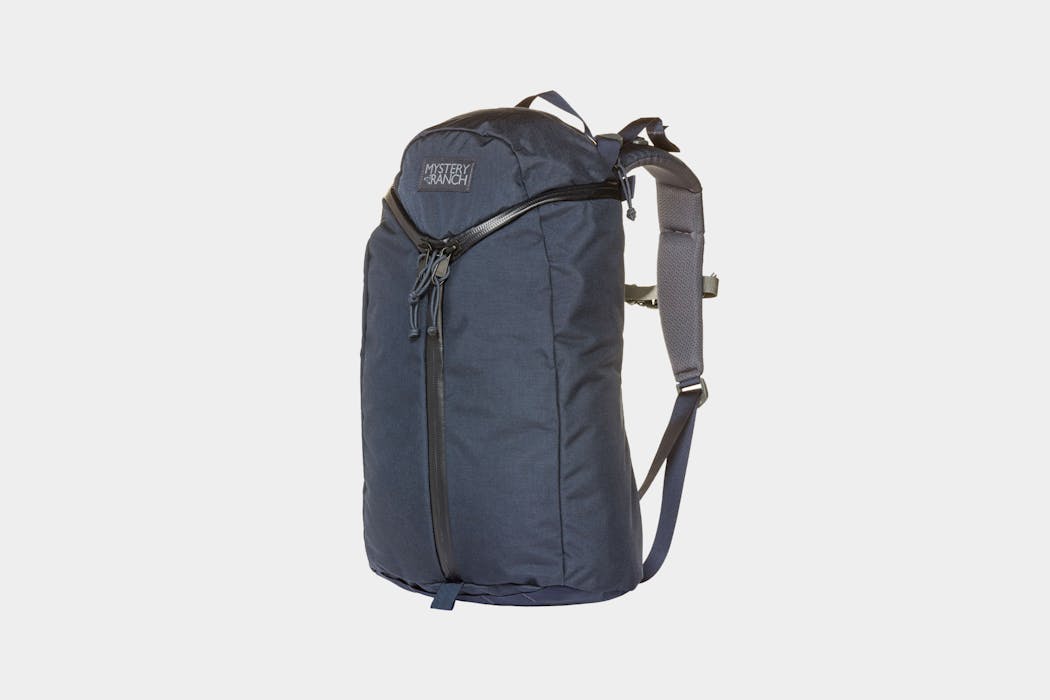
Mystery Ranch’s Urban Assualt 21L Backpack has the rugged build and proportions suited for travelers living in the city and adventuring beyond. The brand’s signature Tri-Zip opening is the star of the show because of how versatile it can be. On days when you just need to take a few items out at a time, unzipping the top portion like a hatch gives you quick access to your gear. However, for those longer trips where you’re handling bulkier items (think camping or jobs requiring tools), fully undoing all three zippers grants you full access to the main compartment and the different built-in pockets.
And don’t think this truck-like backpack is too Spartan. Inside is a laptop sleeve big enough for a 16-inch MacBook, a tablet sleeve, plus two mesh pockets on the sides. The main compartment itself is roomy and very welcoming of packing cubes and organizers. On the other hand, the bag’s rather tall shape means that a half-packed main compartment can cause the front to look a little caved in.
Like the rest of the bag, the harness system is similarly rugged; Mystery Ranch has made no concessions regarding comfort. The padding is dense, while the mesh cover ensures heat doesn’t build up on warm days. The only nit we could pick with this harness system is the lack of strap keepers. Then again, that’s not an omission exclusive to the Urban Assault 21, or Mystery Ranch, for that matter.
Why We Like It
- Tri-Zip opening offers convenient access to different areas of the main compartment
- Harness system has dense padding and is covered in breathable mesh
What You Should Know
- Laptop access can be tricky once the main compartment’s fully packed
- Has a slightly dented shape when the main compartment’s not full
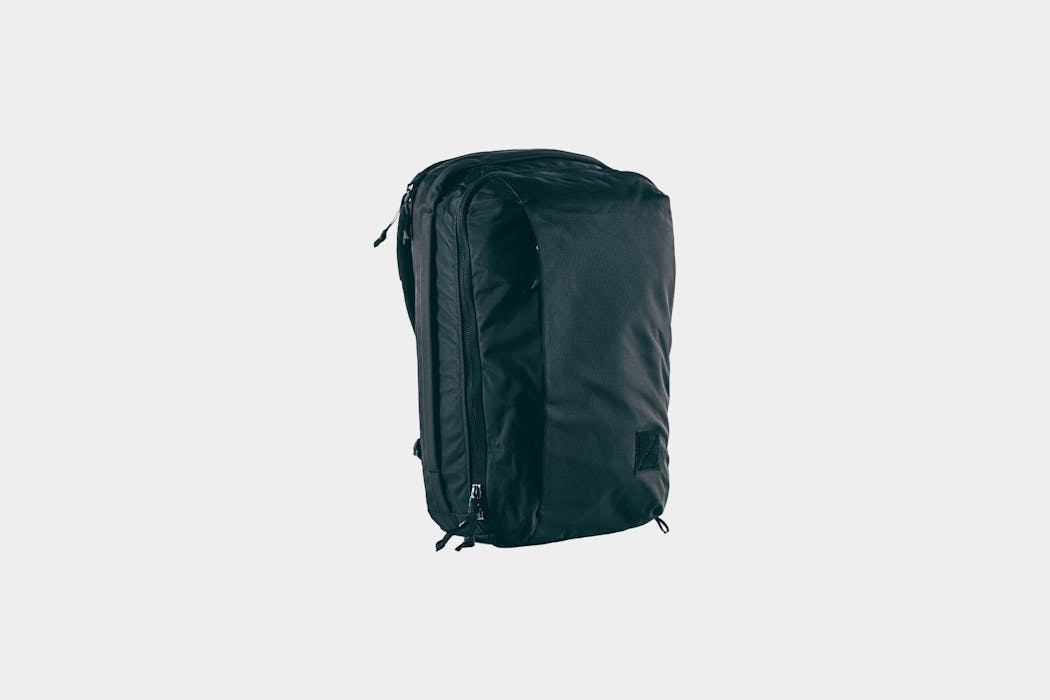
24 liters isn’t a lot if you plan on using a daypack as a part-time travel backpack. That said, the Civic Panel Loader 24L makes it work. The bag maximizes its available volume and eschews many of the typical built-in pockets and compartments we see on other daypacks in favor of a much more open design. Yes, the main compartment only has two zippered pockets, but that just leaves more room to stow organizers like packing cubes and tech pouches. Fortunately, some built-in organization did survive the cull, such as a separate laptop compartment and a top quick-grab pocket.
The neat thing about using a daypack like the Civic Panel Loader 24L for travel is its simplicity in certain areas, like the harness system. There are no additional hip belts or load lifters to fiddle with, just a pair of thickly padded shoulder straps and a sternum strap for support. While extra straps can be useful for distributing weight, modestly sized daypacks don’t need too many extras.
Carrying the Civic Panel Loader 24L is, therefore, comfortable no matter how full the bag is. There’s more than enough padding to cushion the weight, and ample aeration keeps the heat in check. All of that said, the overall fit feels more suited for those with masculine-shaped frames. Despite the curved straps and layers of cushioning, our female testers find the back panel a bit long and the straps a little bulky.
Why We Like It
- Minimal compartmentalization maximizes the available 24-liter volume
- Comfortable harness system, even when the bag’s fully packed, without needing a ton of adjustment points
What You Should Know
- A bit lacking in built-in organization options
- Fit feels more tailored to masculine frames
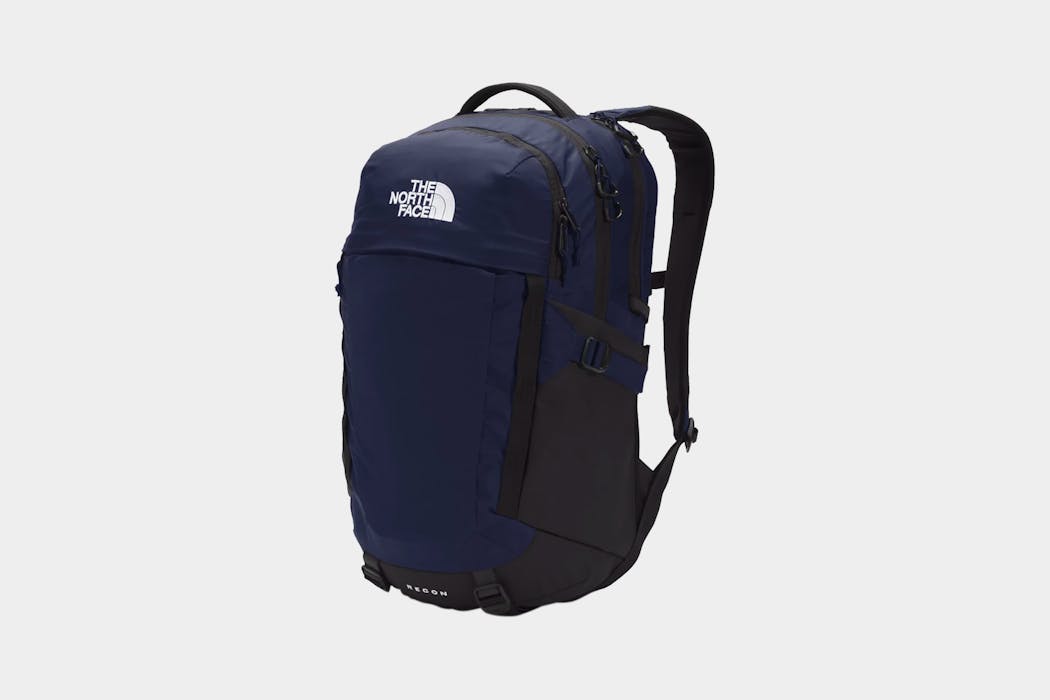
Priced at around a hundred bucks at the time of writing, The North Face Recon offers an interesting value proposition. Behind the reputable name is a verifiable build quality that we’re more than satisfied with. The 100% recycled nylon and polyester are environmentally friendly and suitably robust for everyday commutes. Other quality details include the use of YKK zippers and hardware from ITW and Duraflex (all three brands are top suppliers and some of the most reliable on the market).
So, they must’ve skimped on features, surely? Not quite. The bag has straps on its bottom to carry bulky gear such as shoes or a yoga mat. The harness system is decently padded and includes a hip belt for securing the bag and taking some weight off your shoulders. On top of that, the shoulder straps’ simple yet clever mounting design adapts well to different body types. And for those doubling up on hydration, there are water bottle pockets on either side, so you can carry two bottles at once.
Even the space and organization aren’t lacking. An entire front compartment is filled with pockets for everyday carry accessories. The main compartment is decently sized for large items, such as organizers, packed lunches, and clothing. You even get an entirely separate laptop compartment that fits a 16-inch MacBook Pro. We don’t love that the compartment has little to no false bottom to protect your device from accidental drops, so you may want to invest in a separate laptop sleeve.
Why We Like It
- Shoulder straps’ flexible mounting adjusts well to different body types
- Reasonably priced at around a hundred bucks
What You Should Know
- Laptop compartment has minimal elevation to protect your device if you drop the bag
- Doesn’t stand up well on its own
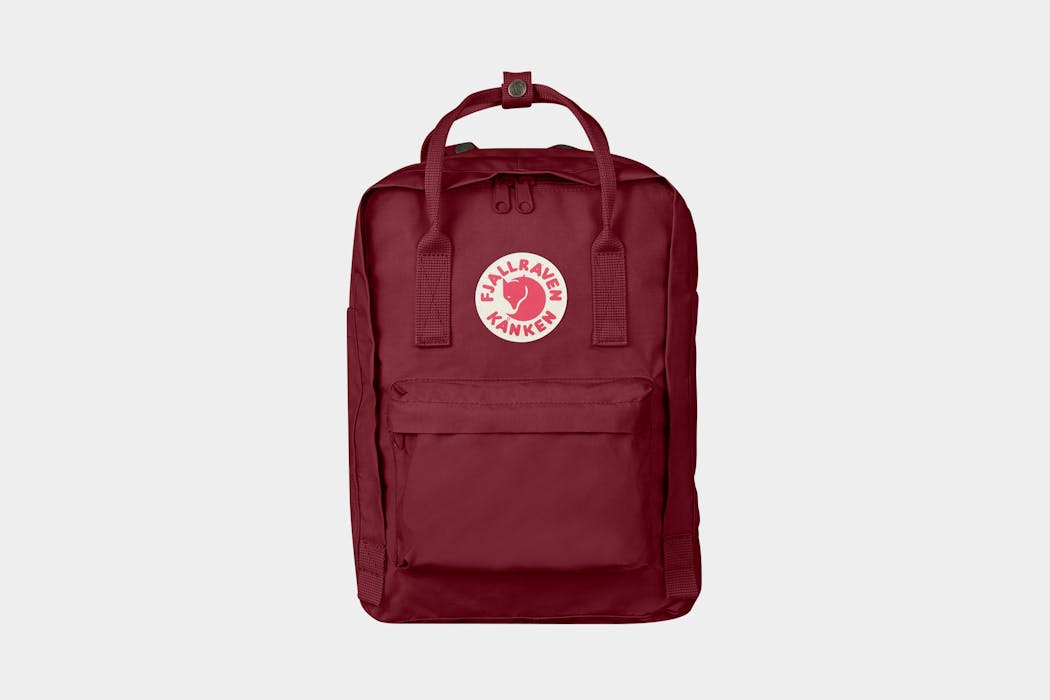
When you think Fjallraven, you probably think of their Kanken backpacks. While there are plenty of options, one of our favorites is the Kanken Laptop Backpack since we almost always travel with a device. It also delivers the brand’s signature styling, headlined by its Vinylon F fabric—a synthetic fabric that swells up when it gets wet, making it more resistant to soaking. This means there’s no need to apply a wax coating of some sort, unlike with Fjallraven’s other packs.
That said, years of use can still take its toll on the Vinylon F fabric. So, despite the lack of any coating that could otherwise wear out, our sample is still visibly faded after so much use. It’s not the best look for those who want to keep their daypack always presentable, though it’s the sort of patina you can’t buy; it has to be earned, and we think it’s kind of charming that way.
Functionality-wise, we dig the pack’s twin mini tote-style handles. They make grabbing and going very easy, though the Kanken Laptop Backpack itself isn’t that hard to carry in the first place. On that note, Simplicity is the name of the game, as the harness system is appropriately basic but comfortable. You get a pocket at the front for small items like earbuds and your wallet, a main compartment to load bulky items like a change of clothing, and a separate laptop compartment for your device (the laptop size this pocket will fit depends on the size of the bag you get). There are also two exterior side pockets, but this is where Fjallraven may have gone too basic; they’re way too small to be water bottle pockets, so they’re only functional as slip pockets for something small like an umbrella.
Why We Like It
- Unique styling and materials
- Mini tote-style handles make grabbing and go easy
What You Should Know
- Vinylon F fabric fades over time
- Tiny side pockets are nowhere near big enough for water bottles
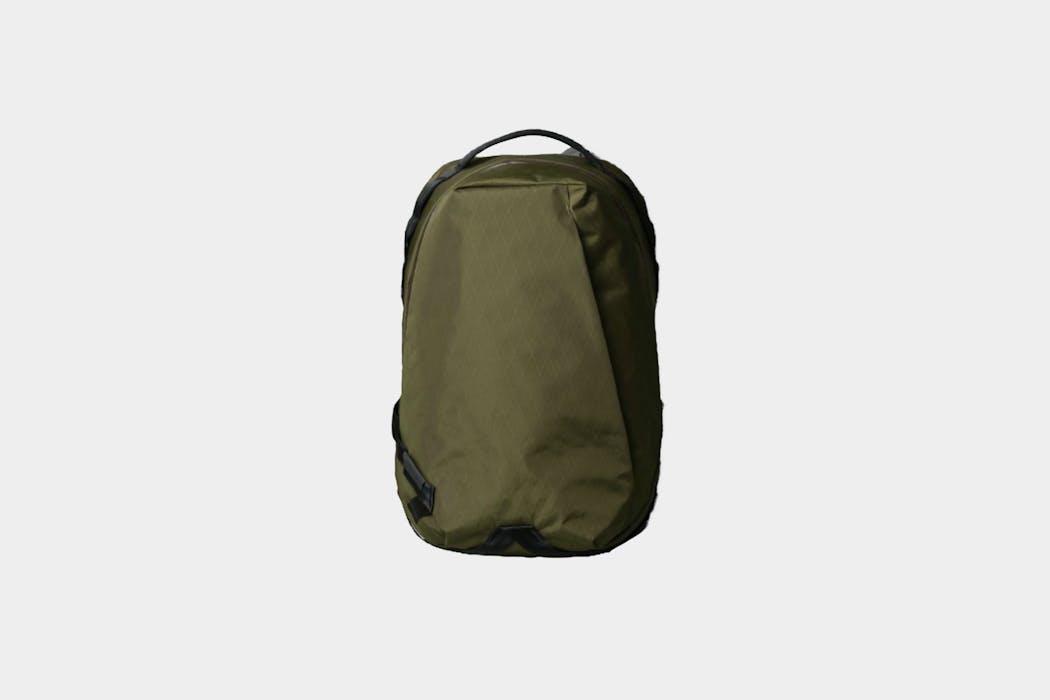
While the Able Carry Daily Backpack is one of our highest-rated bags from the brand, the lack of a water bottle pocket may not work for everyone. Enter the Able Carry Daily Plus. While the bag’s layout mostly carries over from the original, it has a few upgrades. At the front is a sideways-facing pocket—complete with a built-in key leash for convenience—and a top pocket for more quick-grab items. The main compartment houses the laptop sleeve, plus two stretchy pockets with pen slots on both sides. At the front side is a zippered mesh pocket for more accessories, and there’s even a hidden pocket near the frame sheet. The latter is a neat security feature, though we’re sad it can’t fit a passport (one of the few items we’d put in a hidden pocket).
Last but not least is the aforementioned water bottle pocket. Unlike many daypacks with mesh or elastic side pockets, this pocket utilizes the main compartment space for storage. While it eats into the main compartment’s volume, it also preserves the bag’s overall sleek profile. Why sacrifice aesthetics to stay hydrated?
The main material is X-Pac fabric, one of the most waterproof fabrics we typically see used on backpacks. Is it overkill? Maybe, but it at least means you won’t have to go through the headache of dirt and rainwater seeping in and staining the fabric. It’s worth noting that while X-Pac fabric is waterproof, the backpack itself isn’t, so water will still find a way inside in case it gets submerged.
Why We Like It
- X-Pac fabric near invulnerable to dirt and rain
- Internal water bottle pocket preserves the bag’s sleek profile
What You Should Know
- Stretchy pockets don’t hold small accessories as well as we’d hoped
- Hidden pocket in the frame sheet is too small for a passport
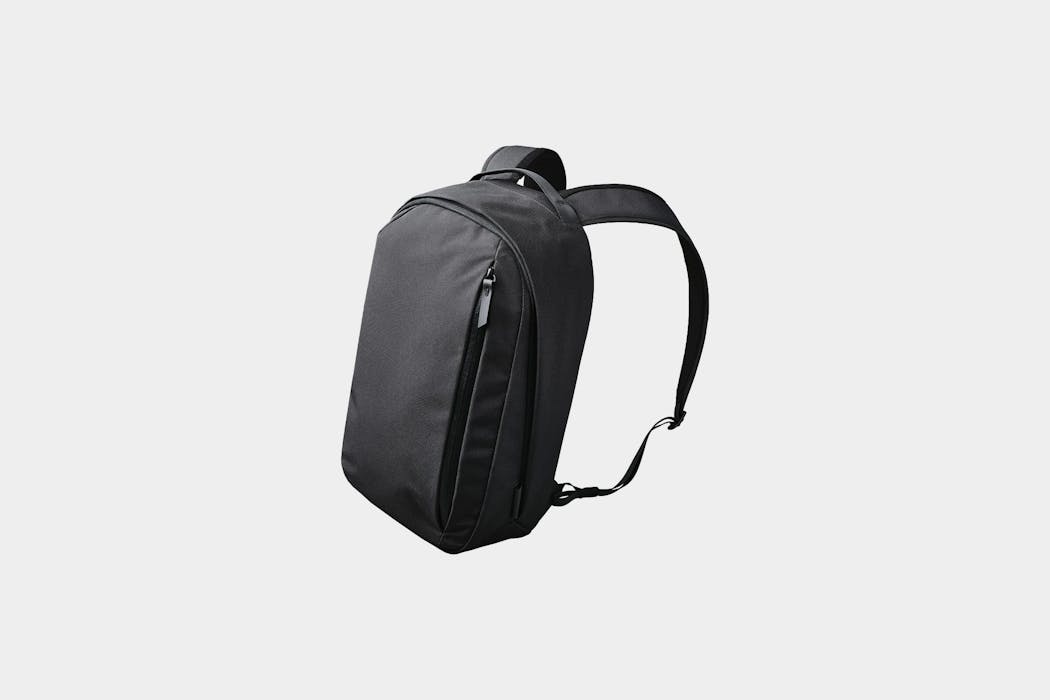
With only 12 liters of space available to the ALPAKA Metro Backpack, you might think it’s short on features and space. Sure, you won’t be packing a week’s worth of clothing in this daypack, but it has enough pockets if you need something purely to handle everyday gear.
At its front is a sideways pocket spanning almost the entire bag’s height, with sideways-facing pockets inside. We’re usually skeptical of this pocket orientation since it just means gear will fall out of them—that’s fortunately not the case. Inside the main compartment is a laptop sleeve rated for up to a 14-inch device and two adjacent passport-sized liner pockets, while the front side has a drop pocket and a water bottle pocket. Sounds loaded? That’s because it is; there’s very little room left to pack anything bulky if you utilize all the organization, so this bag is best for those who pack light.
Carry comfort is surprisingly well-provisioned thanks to the set of shoulder straps having thick padding. Thick padding alone keeps the harness system comfy, as there’s a notable lack of a sternum strap or hip belt (not that a bag of this size really needs it, anyway).
Why We Like It
- Simple straps and thick padding are reassuringly comfy
- Loaded with internal organization
What You Should Know
- Fabric welt covering the main compartment makes it tricky to open
- Very little leftover space if you utilize every pocket in the main compartment
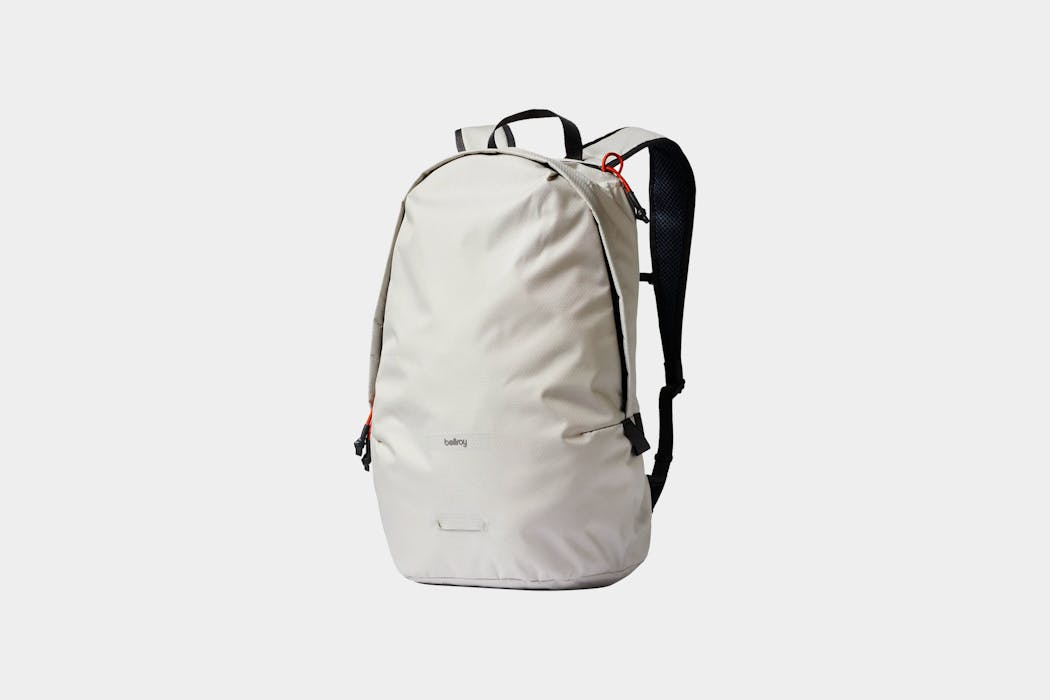
The diamond ripstop fabric makes the Bellroy Lite Daypack feel so lightweight. Despite being 20 liters in size, the entire bag only weighs 0.77 lbs (or 350 grams), which is significantly lighter than daypacks of a similar size. Despite this, the bag feels sufficiently robust, and we love that it’s made from recycled PET bottles.
Better still, the bag doesn’t sacrifice features to save weight. The main compartment has an (unpadded) laptop sleeve fit for a 13-inch device, two liner pockets for accessories (one big enough for a bottle), and a zippered pocket with a built-in key leash. Meanwhile, quick-grab items like earbuds and sunglasses fit inside a top pocket.
Where the bag’s thin and light construction starts to make itself felt is with comfort. The shoulder straps and back panel have some padding, though the bag can start to dig in after long days if you pack a lot of heavy items. Bulky gear inside the main compartment can also poke through the back panel since there’s not much structure to push back. On the other hand, the Bellroy Lite Daypack is a good choice if you’re looking for a daypack you can roll and stowaway inside your main travel bag for use as a daily carry at your destination.
Why We Like It
- Feels very light for a 20-liter backpack
- Can be flattened or rolled up relatively easily
What You Should Know
- Lack of structure means bully gear can jut out from the back panel
- Thin shoulder straps can get tiring after a while of carrying
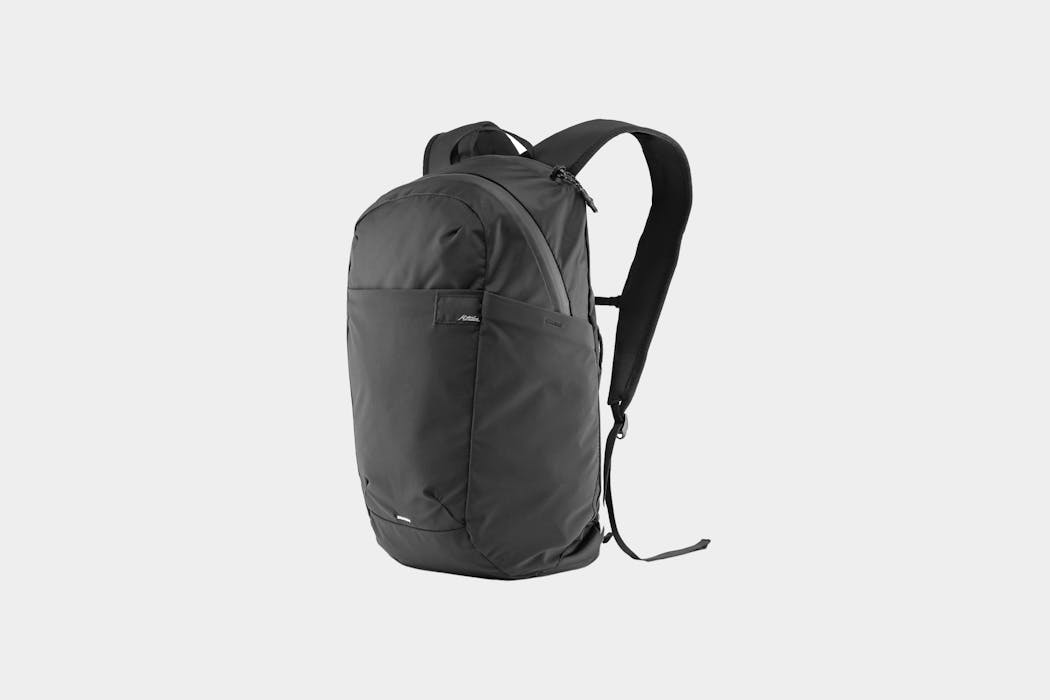
Packable daypacks usually do without many of the creature comforts we take for granted on regular daypacks. So, whenever a packable bag like the Matador ReFraction lands in the Pack Hacker HQ, we like to see what features make the cut. In this backpack’s case, we’re so impressed that we awarded it our Pack Hacker Pick badge.
First of all, the ReFraction doesn’t feel as saggy as most packable backpacks thanks to a combo of PU-coated 100-denier recycled nylon and 100-denier span. Together, they’re sufficiently robust and substantial enough to prevent the bag from collapsing like an empty sack. Further bolstering the build quality is Matador’s use of No. 5 YKK zippers and shoulder straps that are thin enough to pack away easily but substantial enough to provide comfort when the bag is loaded.
Organization is where the ReFraction shines as a packable backpack. It has two stretchy water bottle pockets, a front zippered pocket for things like snacks and a hat, and a top zippered pocket for your keys and sunglasses. The main compartment itself has no built-in pockets, not even a laptop sleeve. On the bright side, this maximizes space for those who want to use their own organizers, pouches, and laptop sleeves.
Why We Like It
- Has more structure than other packable bags we’ve tested
- Significant organization between the two water bottle pockets, front pocket, and top pocket
What You Should Know
- No dedicated laptop sleeve for your device
- Takes practice to get the backpack stuffed away into its pouch
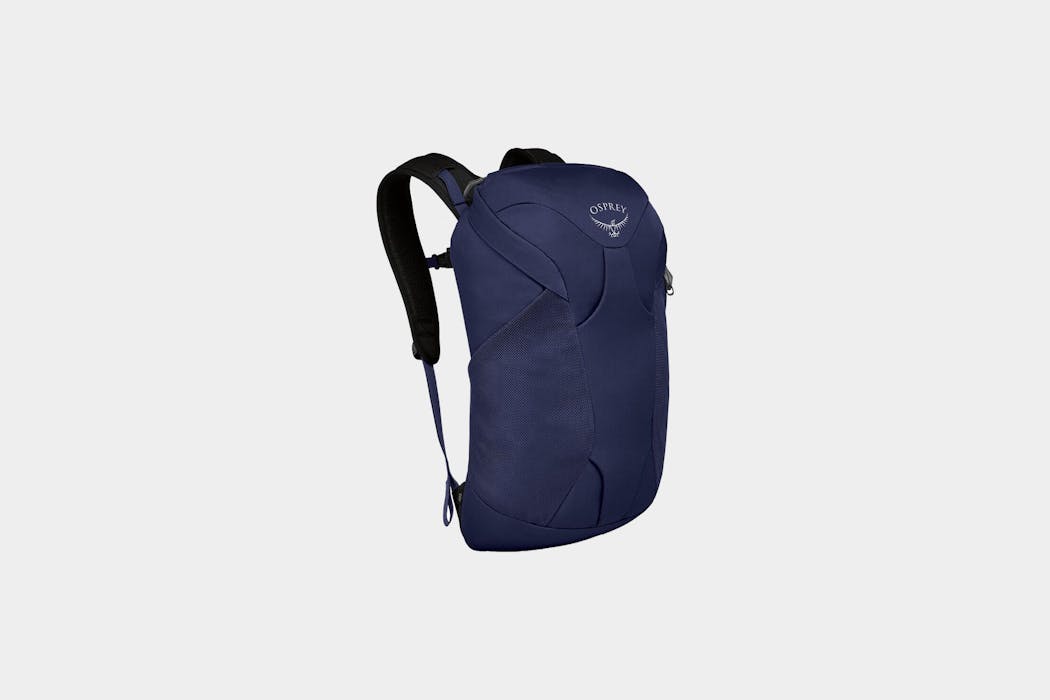
The Osprey Farpoint/Fairview Travel Daypack is designed as a daypack companion to the Farpoint/Fairview Travel Backpacks. The daypack attaches to the front of the travel backpack if desired, though it also stands alone with its own merits. The DWR-coated 450-denier recycled dobby polyester fabric is durable and sustainable, and the YKK zippers offer jam-free zipping (as long as you keep debris clear of the tracks).
The bag also comes equipped with two water bottle pockets if you fancy doubling up on hydration or want to use one for a travel tripod. There are no cutting corners with the harness system, either. The shoulder straps are curved and padded, accompanied by a meshed-covered back panel and a whistle-equipped sternum strap. Comfort is more than acceptable, and most of the discomfort we felt during testing was due to the main compartment being overpacked and, thus, warping the back panel.
As for organization, the Farpoint/Fairview Travel Daypack is rather limited. Apart from the top pocket and a zippered pocket in the main compartment, you don’t have many options for storing gear. One exception is the built-in laptop sleeve, which can accommodate up to a 16-inch MacBook Pro. That’s quite surprising, given the relatively tall and narrow shape of the bag. Its shape also means that storage can sometimes feel limiting, as the narrow main compartment doesn’t deal well with widely shaped packing cubes and pouches.
Why We Like It
- Attaches to larger Osprey backpacks (Farpoint/Fairview Travel Backpacks)
- Fits a 16-inch laptop despite its relatively tall and narrow shape
What You Should Know
- Limited organization in the main compartment
- Tall and narrow space limits packing options
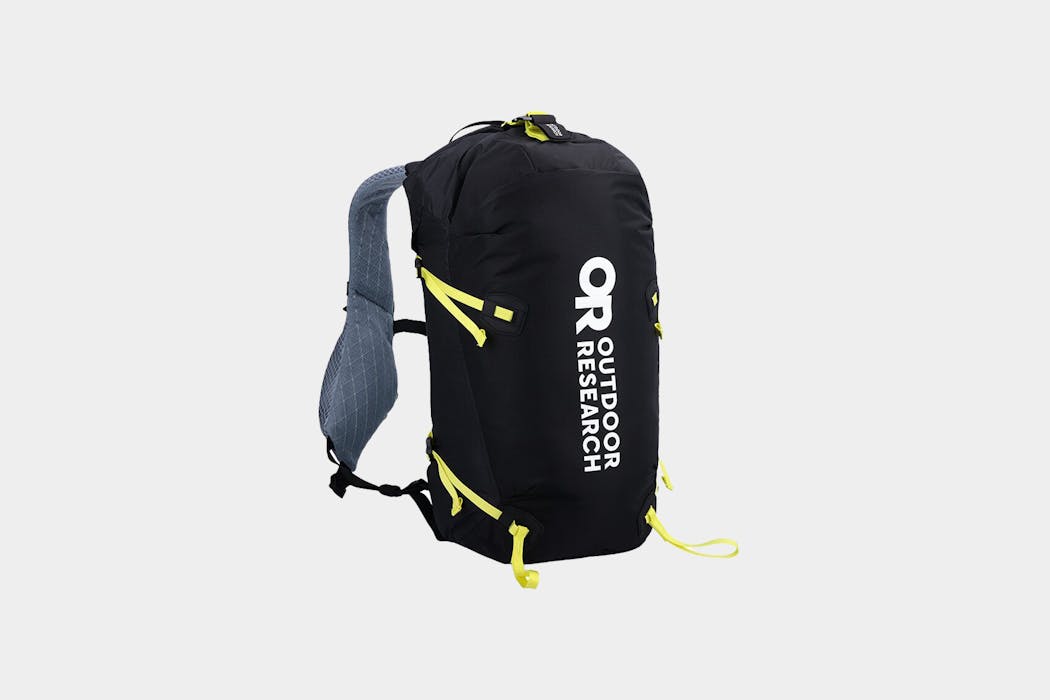
A hiking daypack essential is a comfortable harness system. Of course, “comfortable” can mean a lot of things in the world of daypacks, so let’s narrow that down to a secure fit, a very breathable back panel, and an adaptable harness system.
Made with lightweight ripstop fabrics, this daypack’s modest size is not hard to carry up a trail. Outdoor Research loaded the shoulder straps with a lot of padding and, more importantly, covered them with plenty of mesh for breathability. Even better, there is a sternum strap and a hip belt to ensure the pack stays snug to your body while you’re hiking. The straps are also adjustable in multiple places, allowing you to find the best fit. However, the adjusters are quite snug, making quick alterations to the fit a bit difficult.
The bag’s main compartment is covered by a G-hook and a drawstring opening, leading to a deep, narrow space. Stacking gear is the best way to go, keeping in mind that it competes for space with the front stuff pocket (which is a great spot to stow an extra layer). Each of the shoulder straps has a pocket designed to fit small items like a protein bar, and two loops on the bottom of the pack hold your hiking poles in place. There are no exterior water bottle pockets, so you’ll have to use a hydration bladder if you want quick access to water.
Why We Like It
- Harness system’s copious amount of mesh really helps minimize heat build up
- Shoulder straps’ built-in pockets are super handy for storing snacks and other accessories
What You Should Know
- No water bottle pockets, so a water bladder is the best route for quick hydration
- Shoulder strap pockets may rub against your arms when you’re walking
Why You Should Trust Us
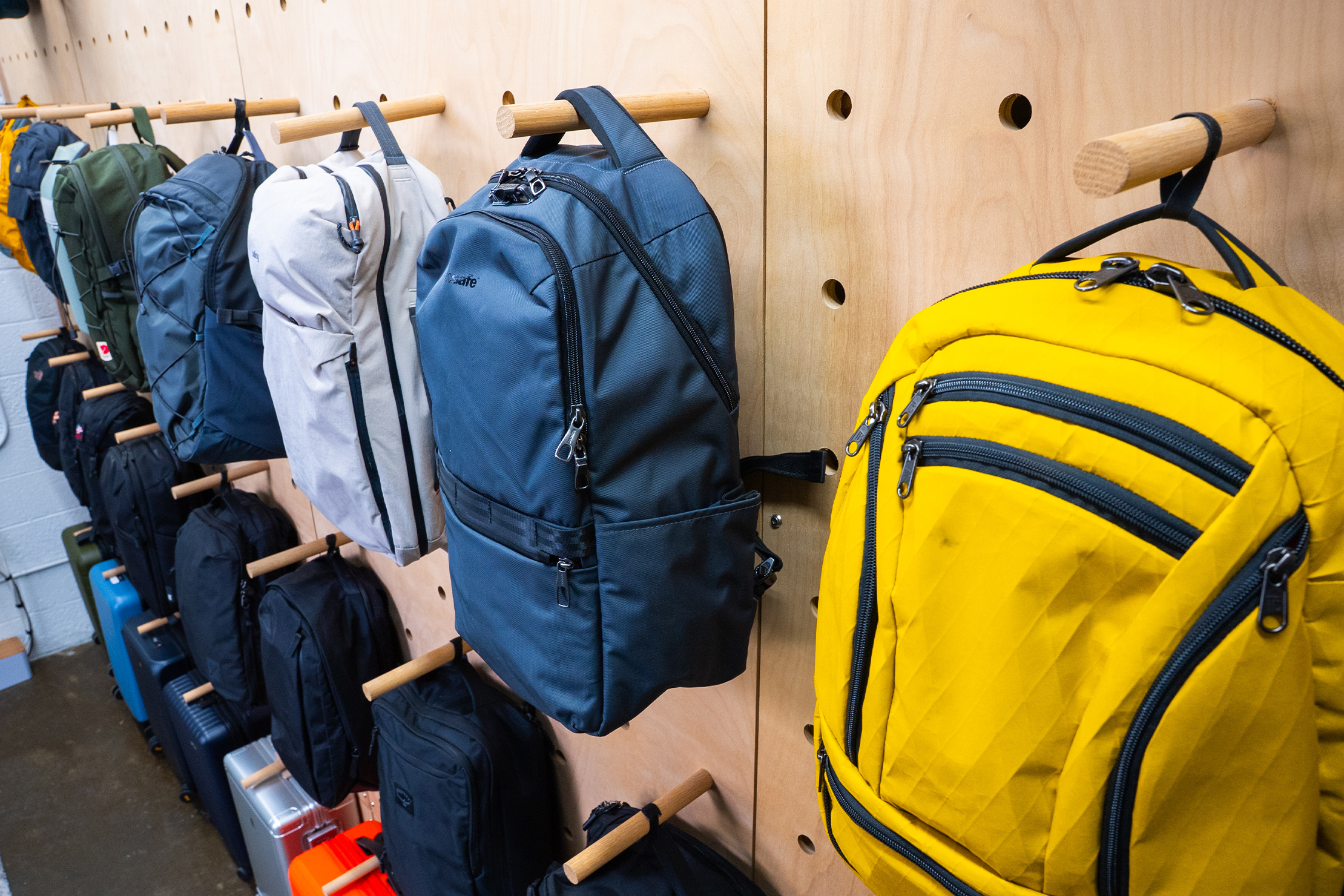
With over 350 hundred daypacks tested and reviewed—and we’ve had our hands on hundreds more—you could say we’re obsessed with this size backpack. We often travel with the mindset of packing efficiently, and a daypack’s modest size and relative simplicity align well with that way of thinking. We’re always sure to point out a daypack’s strengths and weaknesses, whether it’s an errant zipper, cushy shoulder straps, or a main compartment saturated with pockets. We pull from years of experience testing on trips and daily commutes to weed through what bags are worth the money and what bags aren’t.
How We Tested It
Every daypack featured in this list has undergone at least two weeks of testing. During this time, we take them everywhere, from our daily commutes to destinations across the globe. Testing with real-world scenarios conducted by experienced travelers surfaces many of the pros and cons of each daypack, and it’s a very effective way of ensuring we catch everything. While we give a condensed run-down of each bag we feature in this guide, you can also check out their full written and video review on their respective pages should you have any more questions or desire more insight.
Forget the “best” daypack. What kind of pack do YOU want?
Here’s what you can expect
In this guide, we’re going to help you figure out how to choose the best daypack for your situation. We’re going to dive into all the different “categories” of daypacks and explain what you can expect with each as well as the pros, cons, and recommended use-cases.
We’re also going to provide some specific recommendations for each category, in addition to going over what you’ll want to look for and avoid in each case.
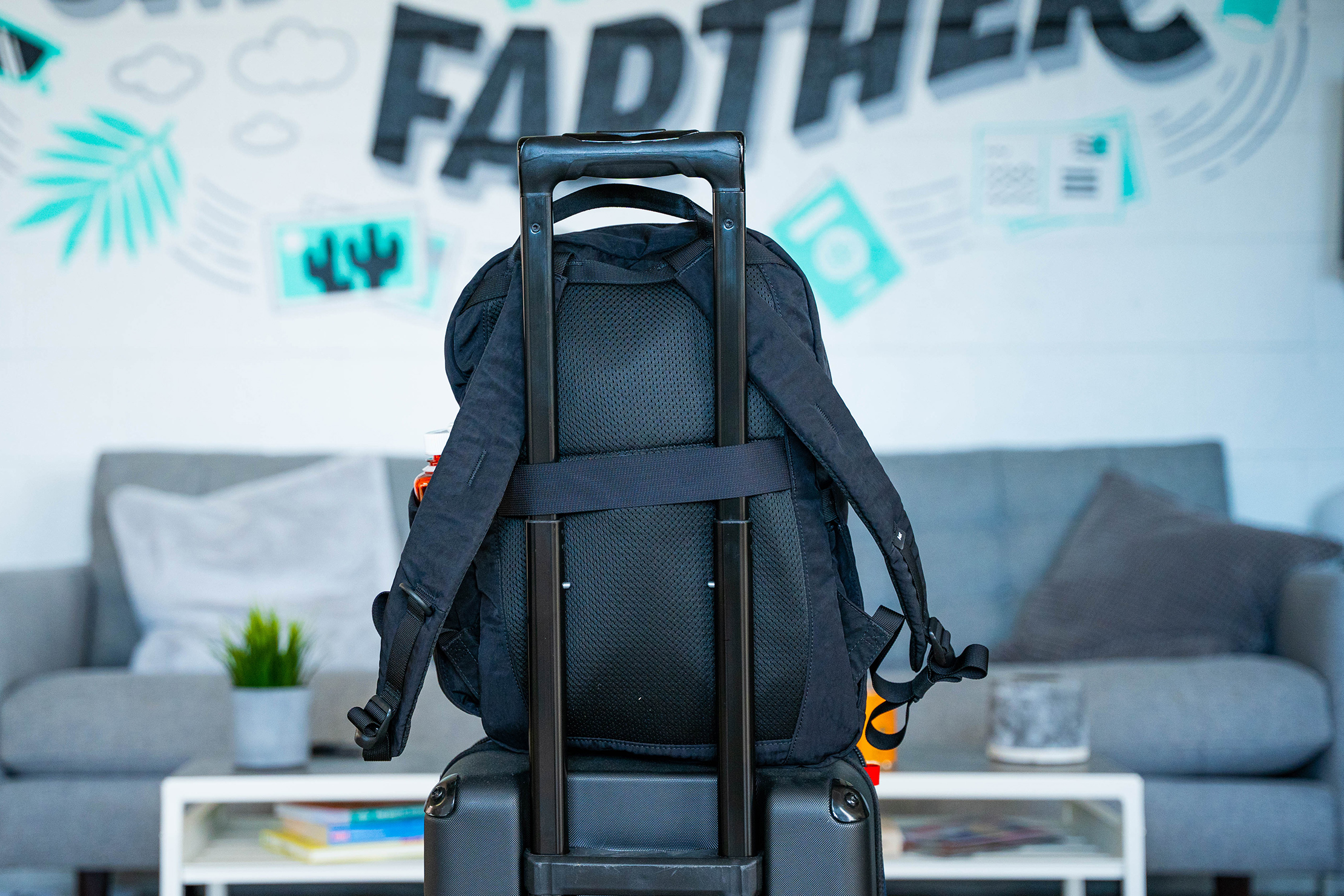
Finally, we’ll be going over some more general “pro tips” like how to efficiently pack a daypack, how to travel with a daypack and other luggage, and how to travel like a pro in a more general sense. (Although, we like to think that all of our content covers that last point.)
If you want to skip ahead and just see some options already, check out the video below.
There are a few key considerations you should be thinking about when choosing a daypack, which we’ve outlined below. As we progress through this guide, we will continue to come back to these questions. If you can get clear on your answers here, we are confident you will be able to find the perfect daypack for your needs.
So, the first question you should be asking yourself is…
This is the most logical place to start in your quest for the perfect daypack. Choosing what daypack to buy will be most influenced by what you’re going to use it for! Here are some common examples of daypack-related activities that will require different types of packs:
- Traveling the world with a carry-on travel backpack and a personal item.
- Going on a day hike.
- Traveling with roller luggage.
- Bringing your laptop and tech gear to work every day (although we have a separate laptop bag guide for this).
- Holding groceries on your way home from work.
- Having a stylish accessory for travel or days out with friends.
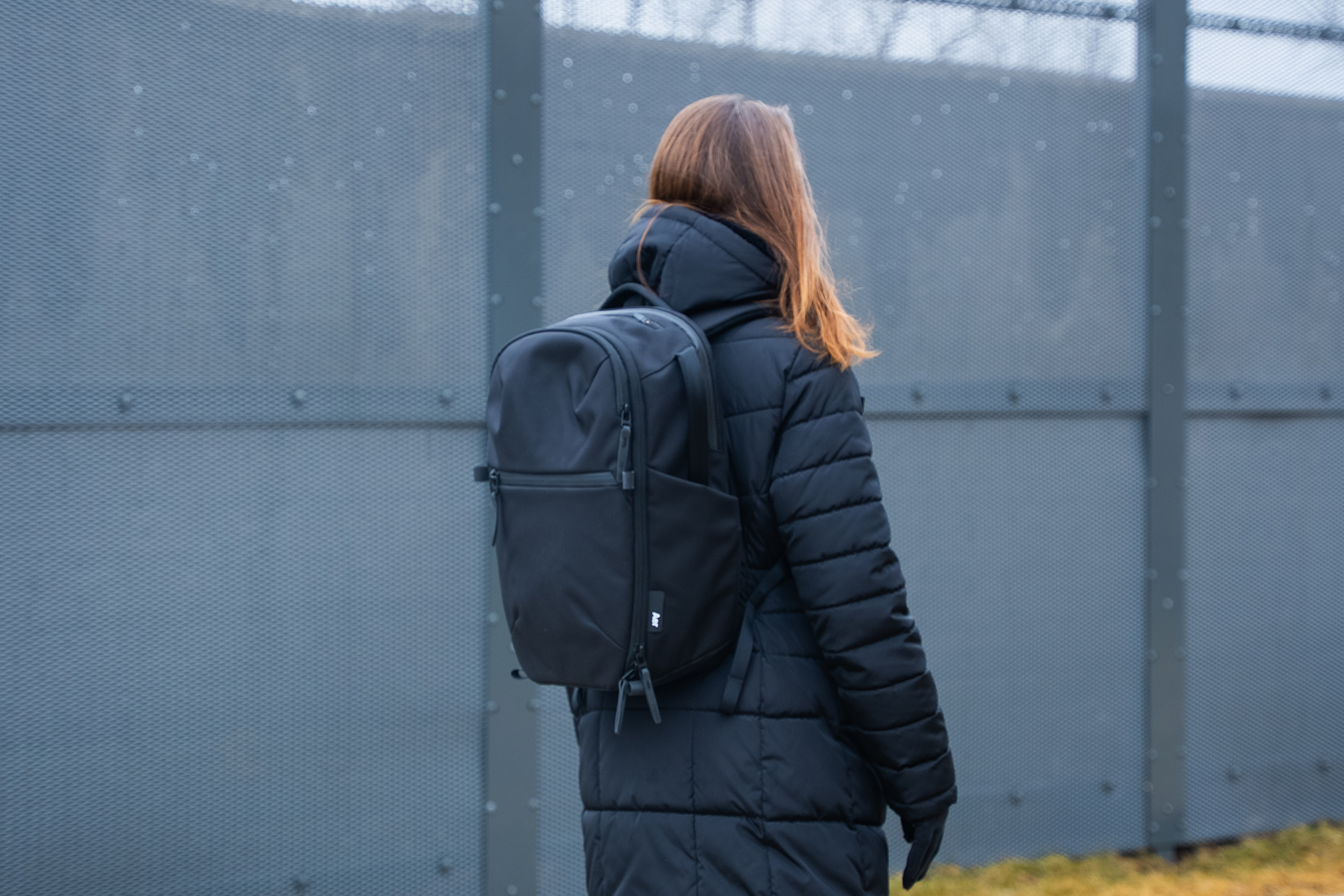
The type of activities you plan on doing with your daypack will have a massive effect on what kind of bag is best for you. Obviously, there are many additional scenarios you may find yourself in outside of the ones on this short list, but we hope that by the end of this guide you’ll have the knowledge to make an educated decision on your own.
We should also mention that we are strong advocates for having multiple daypacks for different scenarios. As a bunch of self-proclaimed minimalists, we don’t tend to endorse consumption for consumption’s sake, but having two to three specialized daypacks can be enough to cover just about any scenario you find yourself in. You could get by with one versatile pack for every occasion, but you’re going to have to make some compromises. (But we don’t particularly like compromises.)
The next question you should be asking yourself is…
While your answer to the first question may heavily impact the answer to this question, we still think it’s worth discussing on its own. Think of this in more general terms—are you the type of person who likes to have everything they could ever need for a day out? Do you love being prepared for any kind of weather that may hit? Are you “that person” who is prepared to spend a night in the woods every time you go for a hike?
Walking With The Topo Designs Daypack
Additionally, consider how many people you tend to be around. If you’re more of a solo adventurer or if you need a bag for commuting by yourself, you can probably get by with a smaller daypack. But if you tend to travel with large groups of people or you’d consider yourself a “social butterfly,” you may want to consider going for a larger daypack. You’ll thank us when you become the hero of the group after carrying everyone’s water bottles and jackets. Hell, you may even get a free beer or two out of it if you play your cards right.
The gist here is that if you think you’ll be carrying a decent amount of stuff while you’re out and about, you’ll want to opt for a daypack that has a larger capacity and an ample harness system to handle that extra weight.
If you’re a bonafide minimalist or you hate the idea of carrying a pack over five pounds, you’ll want to opt for a smaller and lighter bag. In this case, you can also get away with a more minimalistic harness system. We’ll get into all that (and more) later.
Yes, yes—there are certainly more things you’ll need to consider when choosing a daypack. Here’s a quick run-down…
Budget: Obviously, you’ll want to consider how much you’re willing to spend. In a general sense, as you spend more, you can expect to see higher-quality materials, better craftsmanship, more accessories, and better styling.
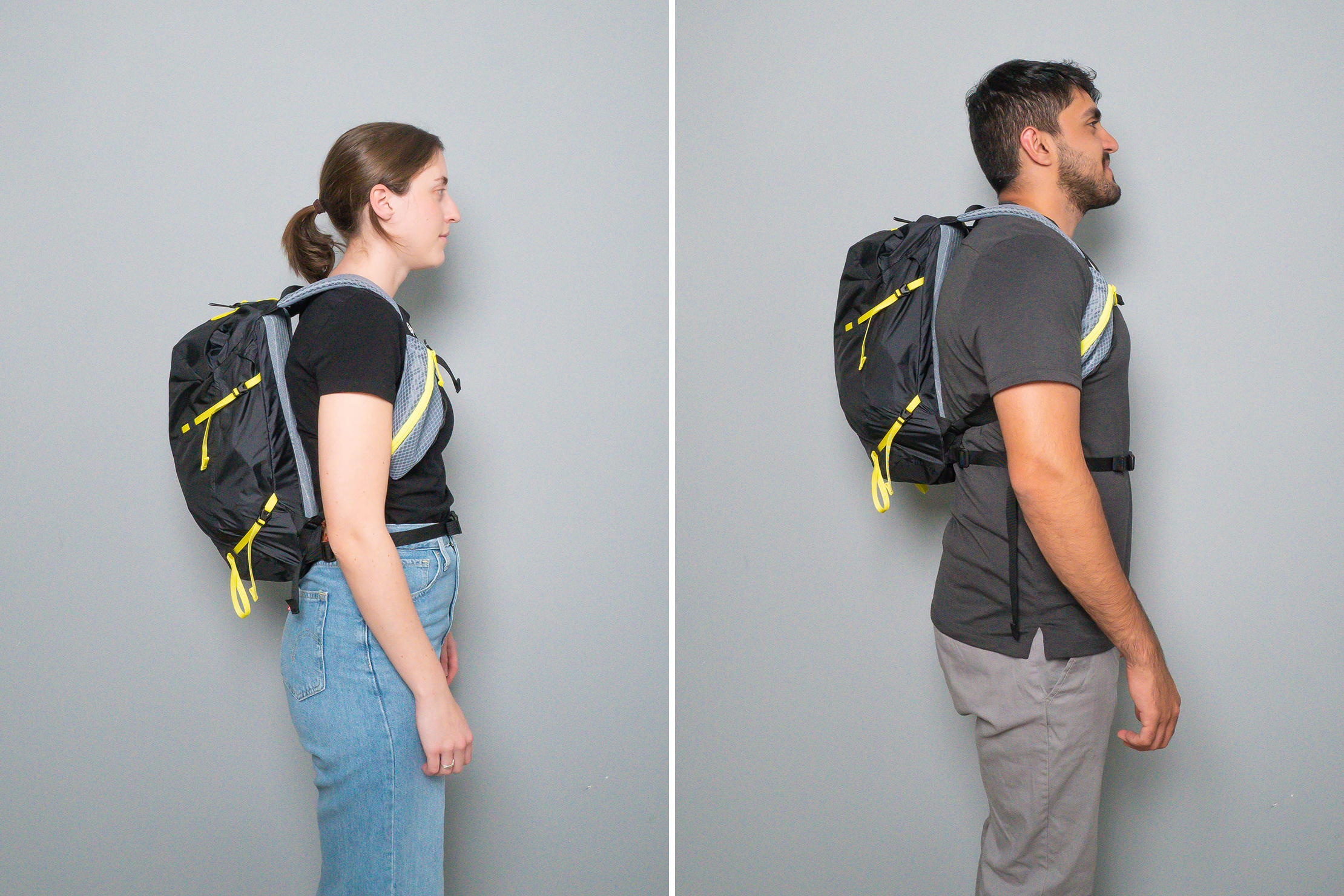
Body Type: Your height and torso length will dictate what type of bags fit you best—and the fit is crucial. Some daypacks come in men’s (larger) and women’s (smaller) versions. Regardless of gender, you’ll want to make sure the pack fits your body type. Luckily, this doesn’t tend to be as much of a problem with daypacks as it is with larger travel backpacks.
Durability: This can change depending on personal preference or the type of activity you’re doing. Daily commuting is going to be tougher on your pack than quick trips to your neighborhood coffee shop. You’ll want to consider how often you plan on using this pack, and how long you’d like to have it.
Weight: If you’re concerned with the overall weight of your pack, certain types of daypacks will be drastically lighter than others. Drastically. Lighter.
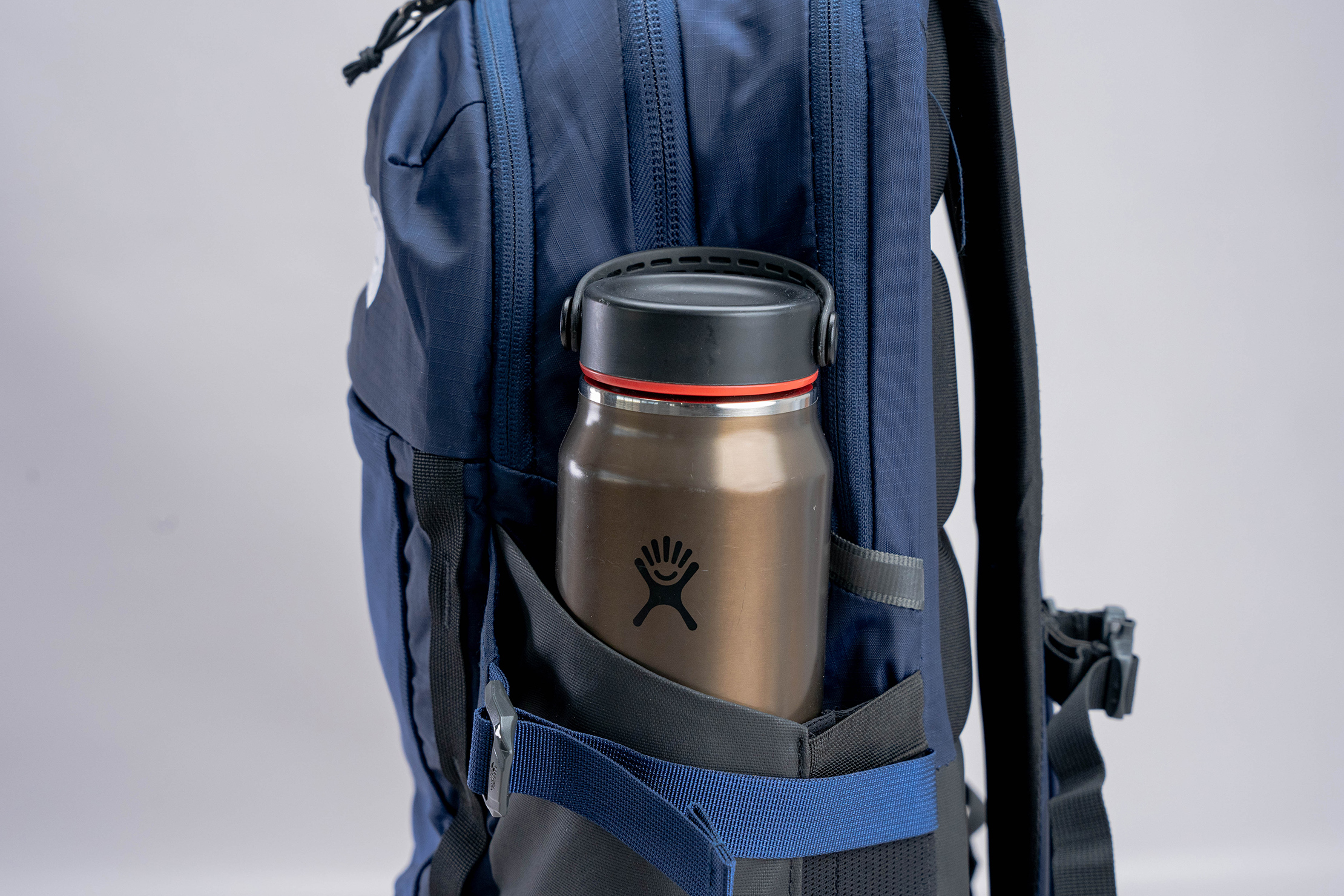
Extras: Between hip belts, compression straps, water bottle pockets, laptop compartments, and a slew of other add-ons…there’s a lot to consider here. If there are certain backpack features that you feel like you can’t live without, it might restrict you to certain types of daypacks.
The daypack we’ve all come to know and love.
What is a traditional daypack?
The traditional daypack is just what you’d assume—a daypack that functions well for daily use. This is the O.G. daypack. Remember that JanSport pack you and everyone else brought to school as a kid? Well, that would fall into this category. Although we’re happy to say there are plenty of alternatives nowadays, and of varying qualities.
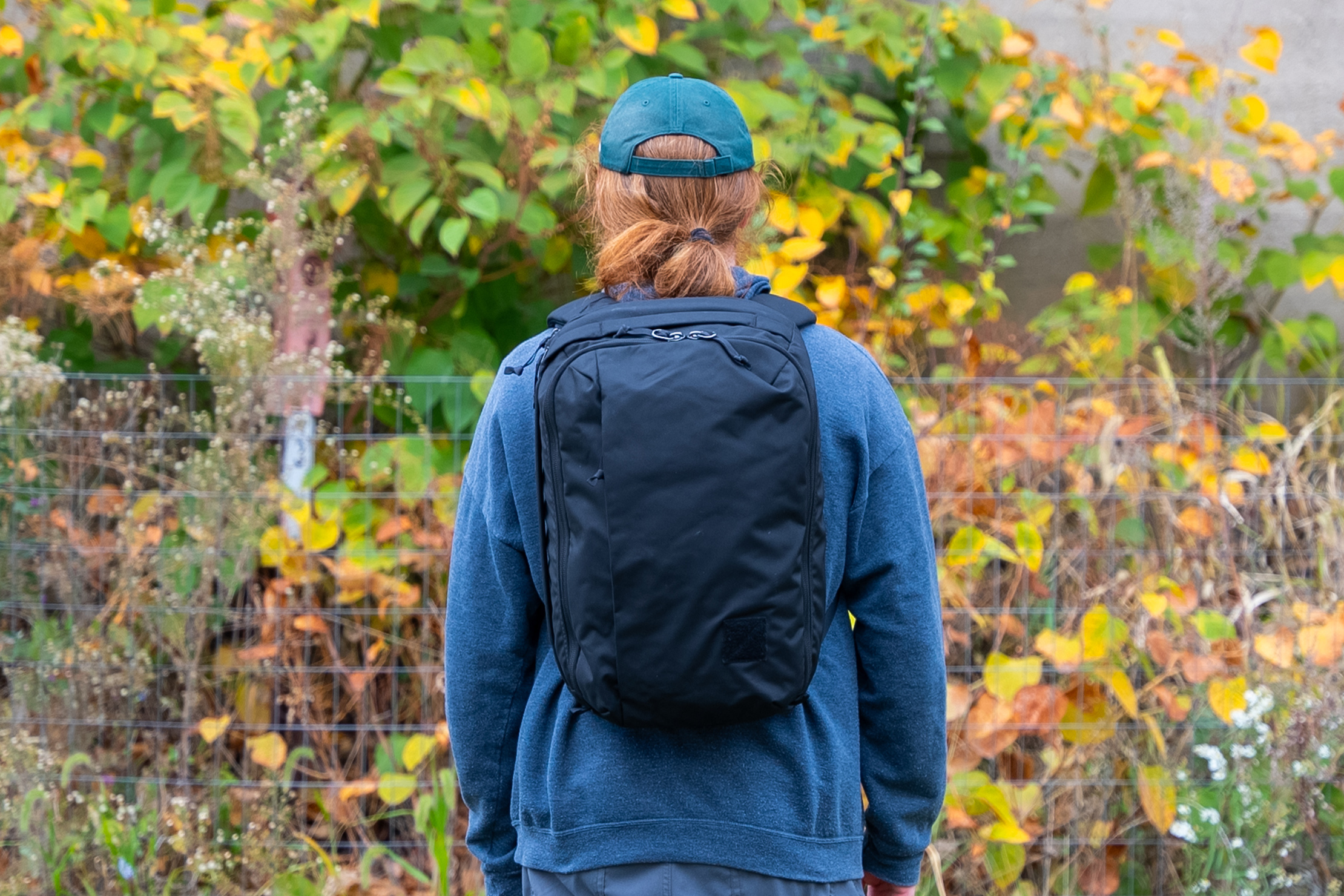
These types of daypacks function well and offer a ton of variety—this is actually the category where you’re going to see the most variety by far. We’re pretty confident even the pickiest gear nut could find something that fits the bill here. With a wide array of materials, color schemes, and styles—there’s something for everyone.
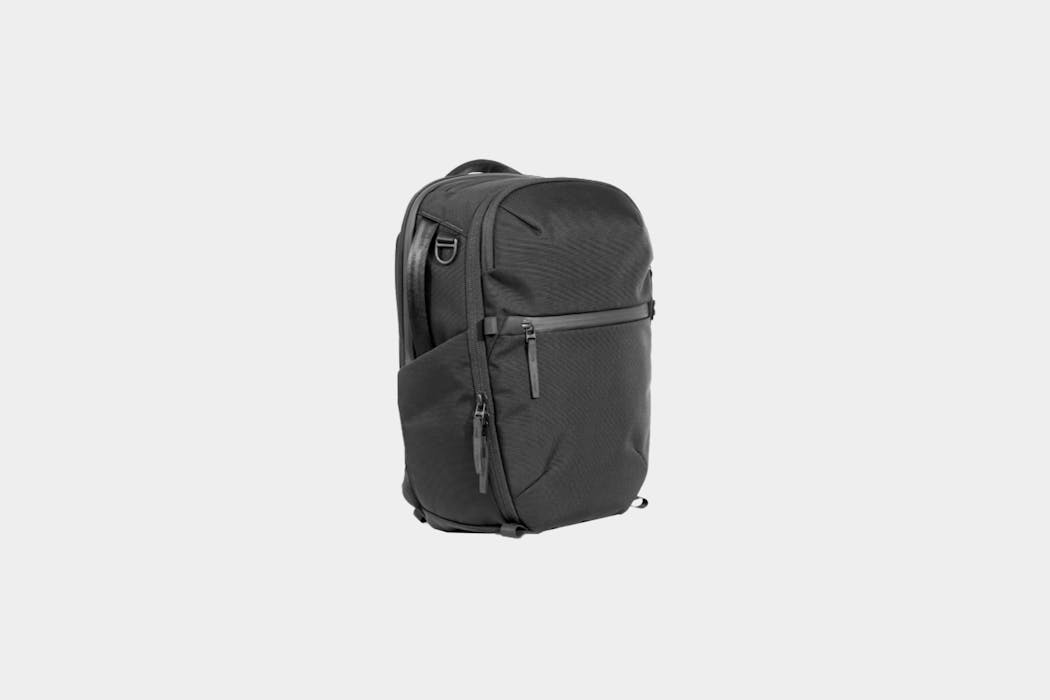
The Aer City Pack Pro 2 features the same solid foundation as the original, plus a few upgrades under the hood. The harness system is more than well-equipped to handle the bag’s weight, thanks to a healthy dose of dense padding both on the straps and the back panel. Three grab handles are convenient for quick grabs, and two water bottle pockets are great for those who double up on hydration. The bag’s superb build quality features top-notch CORDURA® fabrics, YKK zippers, and Woojin and Duraflex hardware. Reaffirming the quality is the clean and convenient layout. The spacious main compartment is fit for multiple packing cubes and supplemented by an admin panel and a separate laptop compartment, so finding a place for all your gear is a breeze.
Traditional daypacks can come in a wide variety of sizes but, in general, most packs will have a capacity between 10 and 25 liters. Usually, you’ll find one large compartment with a few other smaller pockets around the bag. But there is a ton of variety in the traditional daypack department, so that’s not all you’re going to find—there are plenty of traditional daypacks out there that offer loads of organization. Really, you can find bags at any end of the spectrum—from zero organization to a boatload to a happy medium.
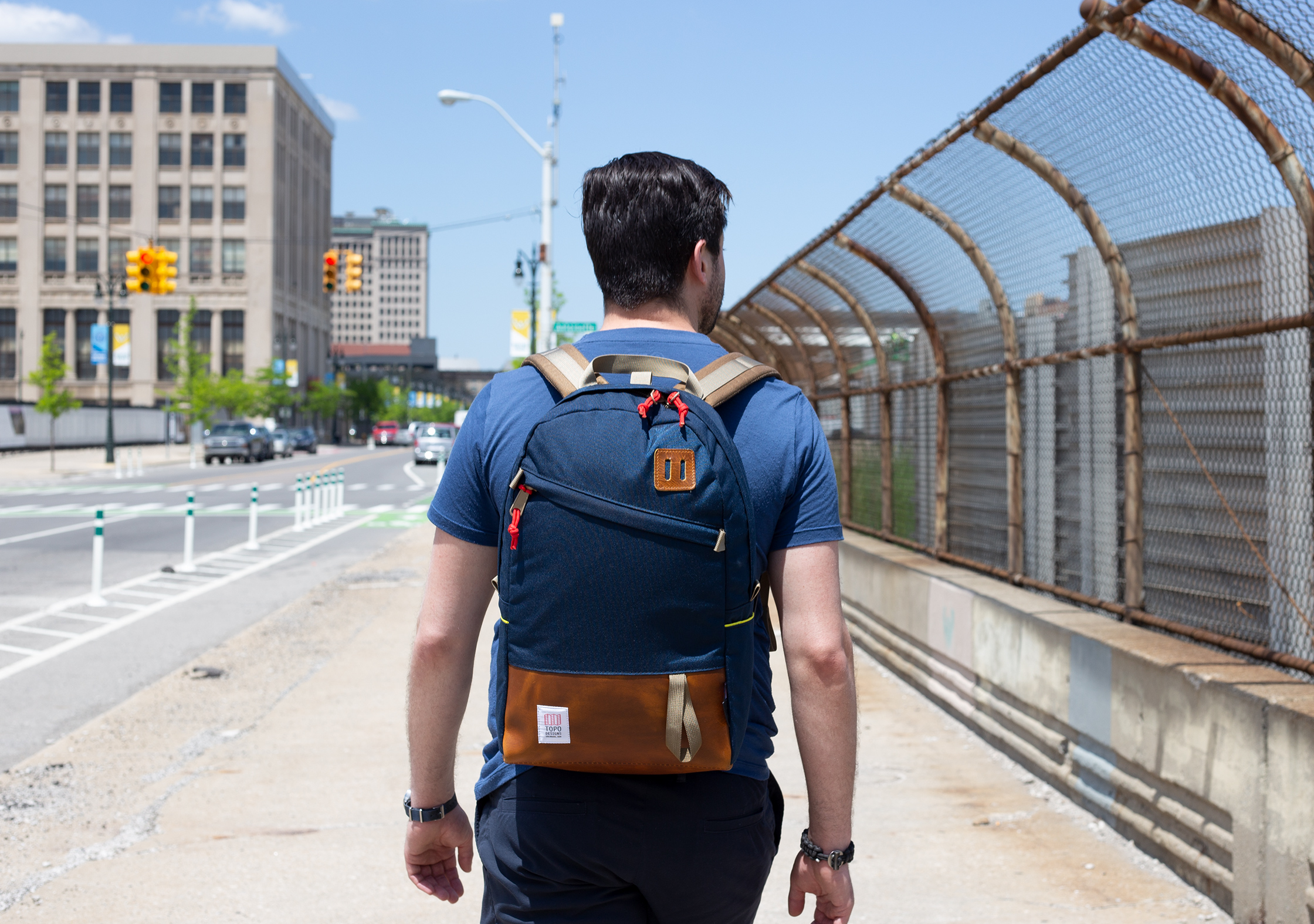
Now, we should clarify that while we love ourselves a good old-fashioned daypack, they do have their drawbacks. In fact, we’d argue that the drawbacks encountered on traditional daypacks are what eventually caused backpack manufacturers to start looking into other types of daypacks (like the ones you’ll find in the rest of this guide). More on that later. For now, let’s get into the nitty-gritty.
Materials & Durability
These types of daypacks have by far the most extensive variety of fabrics and materials. In fact, you can find a traditional daypack made with just about every backpack material out there. Here are some common examples of fabrics you might encounter on a pack like this:
- Ballistic Nylon
- Ripstop Nylon
- Various types of CORDURA® branded materials
- Polyester
- Standard Nylon
- Canvas
- Sailcloth
- Dyneema Fabric
- Leather
- And everything else under the sun…
If we had to recommend a few of these fabrics, we’d probably point out Ballistic and Ripstop Nylon. These are the heavy hitter backpack materials that we love to see because they’re incredibly durable over the long term, they’re rip- and abrasion-resistant, and they’re mostly weather-resistant. The CORDURA® name also tends to be a good one to look for, as it signifies that the fabrics have been held to a certain level of quality. In terms of specific CORDURA® materials, you’ll mainly find polyester and nylon.
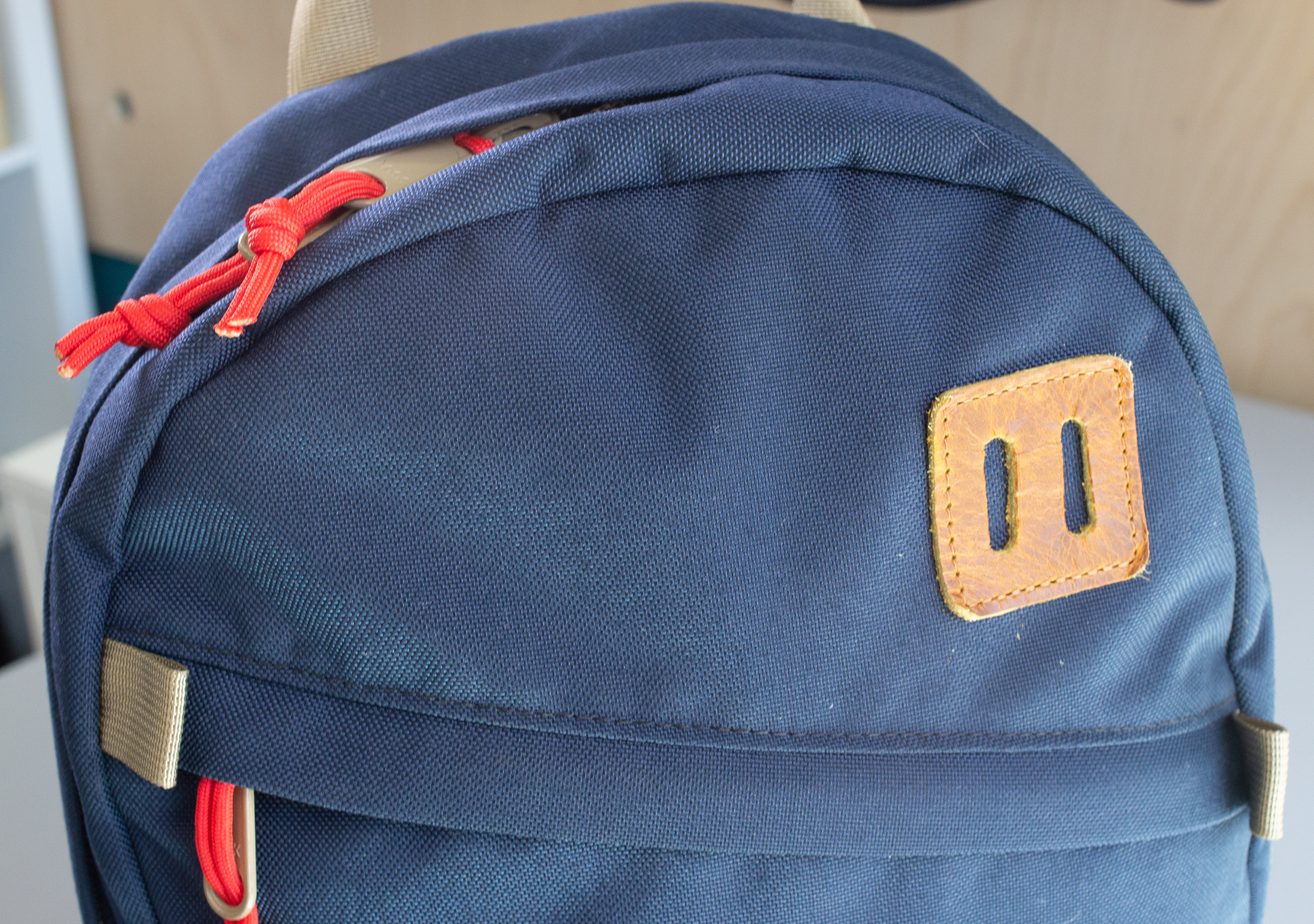
We generally recommend avoiding polyester, canvas, and leather for travel. Polyester is lightweight but it lacks long-term durability, and it can rip and scuff easily. Canvas and leather can certainly be high quality, but they tend to be very heavy. Don’t get us wrong, we’ve seen great packs that use these materials, but if you’re looking for the “best” materials out there, we’d recommend opting for some of the other options on this list.
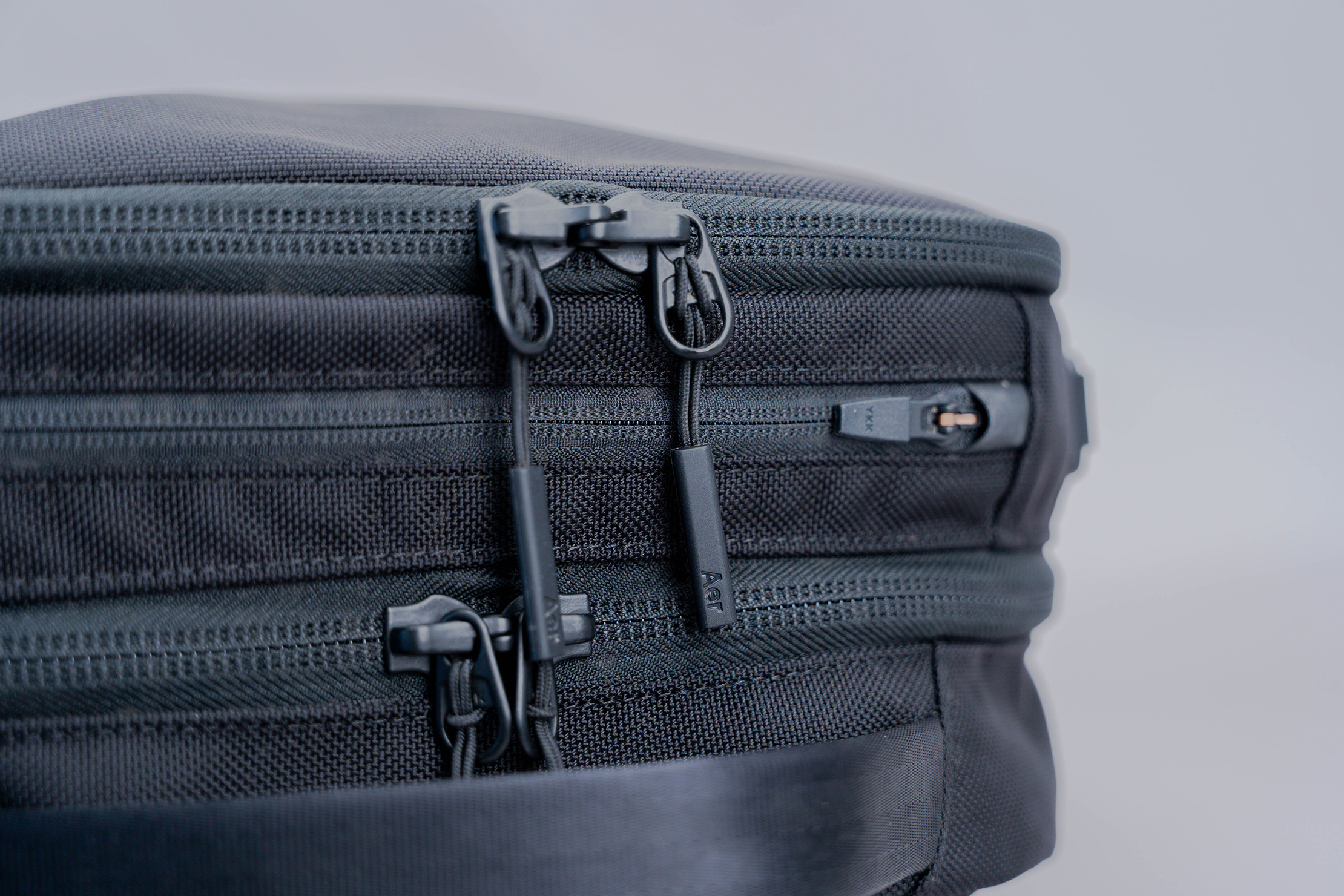
Outside of fabrics, you’ll likely find a variety of other hardware and zippers on these types of packs. We always recommend YKK or SBS branded zippers as they have long track records of providing high-quality zippers that stand the test of time. Zipper sizes range on a scale from one (small) to ten (large), and most of the packs in this category will have at least a #5. We’d recommend looking for something a bit higher, though—some of our favorite daypacks have #10 YKK zippers, which are super beefy. In general, anything between #8 and #10 will be sturdy enough that you won’t need to worry about anything breaking anytime soon. (By the way, this should go without saying, but avoid plastic and unbranded zippers at all costs!)
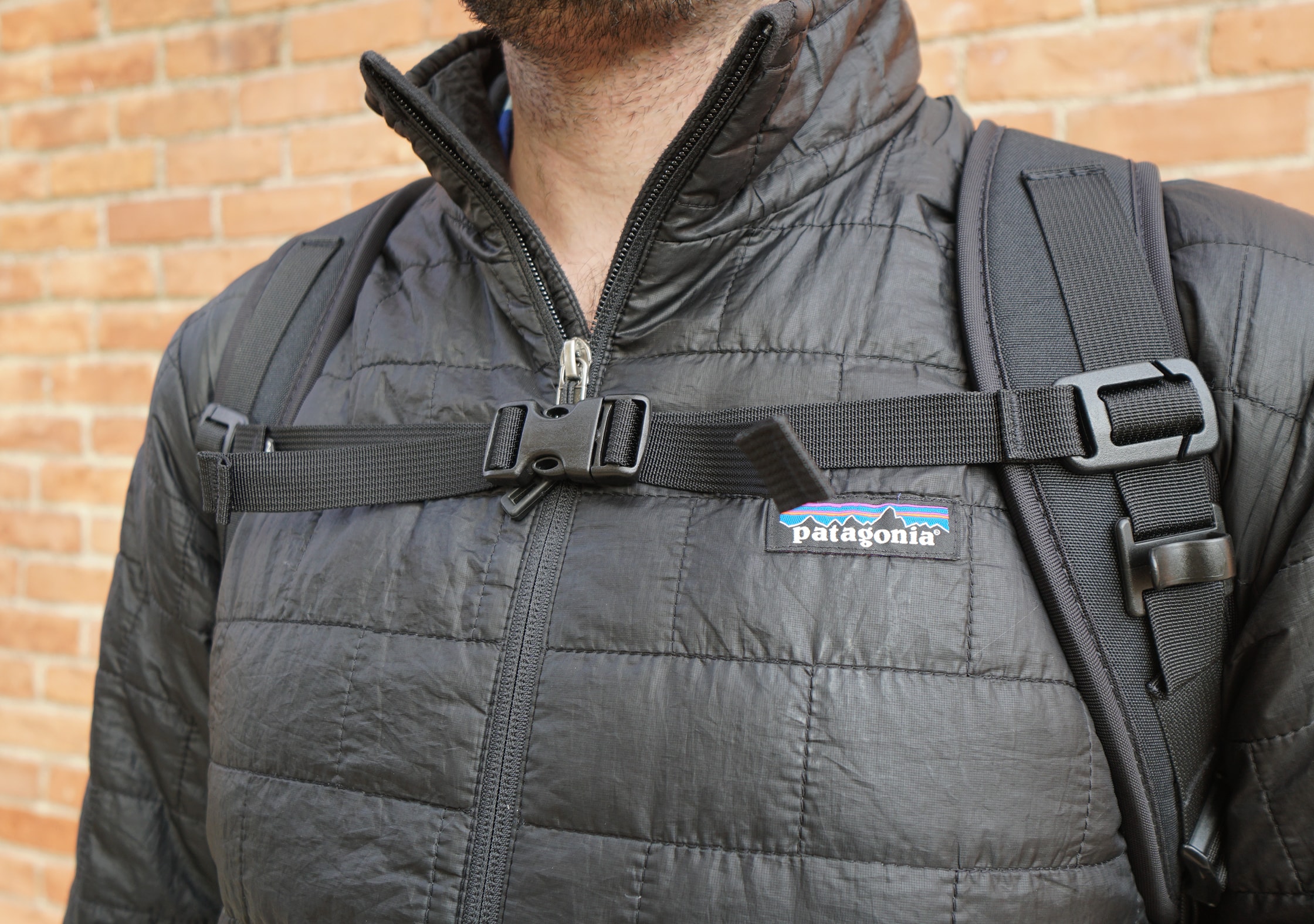
Additionally, you’ll find various types of hardware—in the form of buckles, adjusters, and straps—on these packs. Duraflex, Woojin, and ITW are good brands to look out for. If you don’t see a brand name on the buckles of a daypack, you might want to look elsewhere. The reality is that plastic buckles are one of the easiest things to break on a bag—you can easily snap one in half just by setting the pack down abruptly—so sticking with a high-quality, trusted brand here is absolutely worth the extra couple bucks you’ll likely have to throw down.
Curious about what other materials you can expect on a pack like this? Here’s a quick overview:
- EVA foam: This is high-density foam that you’ll find in shoulder straps and hip belts. Comfy stuff.
- Nylon webbing: Often used for adjuster straps and minimal sternum straps or hip belts.
- Metal buckles: Metal buckles—specifically, aluminum buckles—are fantastic. We’ll almost always opt for them in place of plastic buckles, even if they do add a bit of weight. Look for Cobra or Fidlock brands here.
- DWR coating: This is a coating that can be applied to many fabrics which increases water-resistance. It will by no means make the pack completely waterproof, but it will help quite a bit by providing some added weather-resistance.
Who (and what) is it good for?
The traditional daypack is useful for people who need a pack for daily use and aren’t concerned about traveling light. We’re of the firm belief that any commuter or city-goer who does a lot of walking or regularly takes public transit should have a traditional daypack they love. Actually, scratch that—everyone should have a traditional daypack they love.
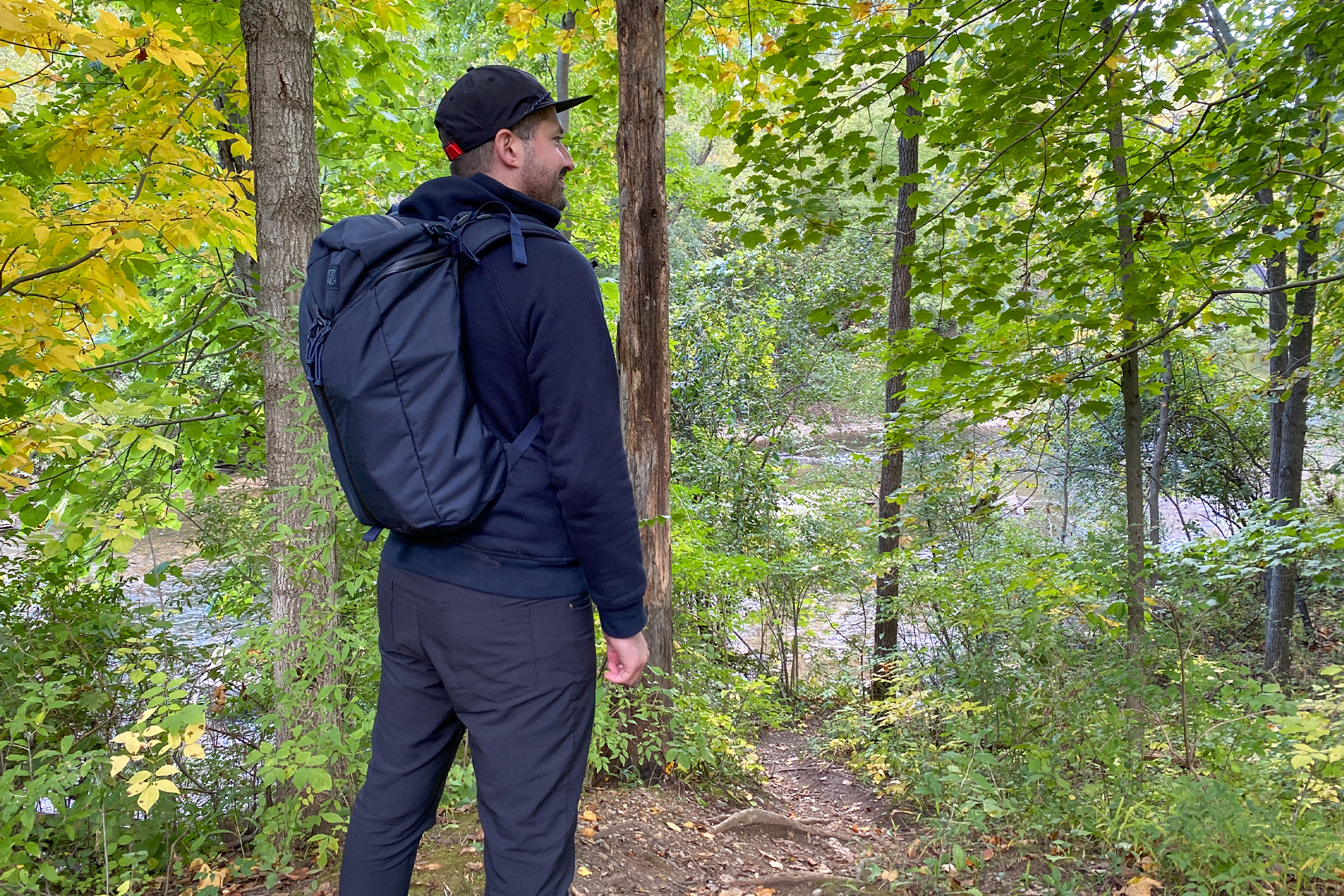
This type of pack is excellent at holding tech gear, groceries, clothing, and everything in between. It’ll hold everything you need for those longer-than-expected days at work, short hikes, weekend trips, and whatever else you may encounter in your day-to-day life.
As far as travel goes, this pack does hold some value, but it’s not exactly “optimized” for travel. If you’re looking for a pack that you can cram into your one bag travel pack, this isn’t going to be your best bet. It might be doable, but there are way better options out there (which we’ll get into soon).
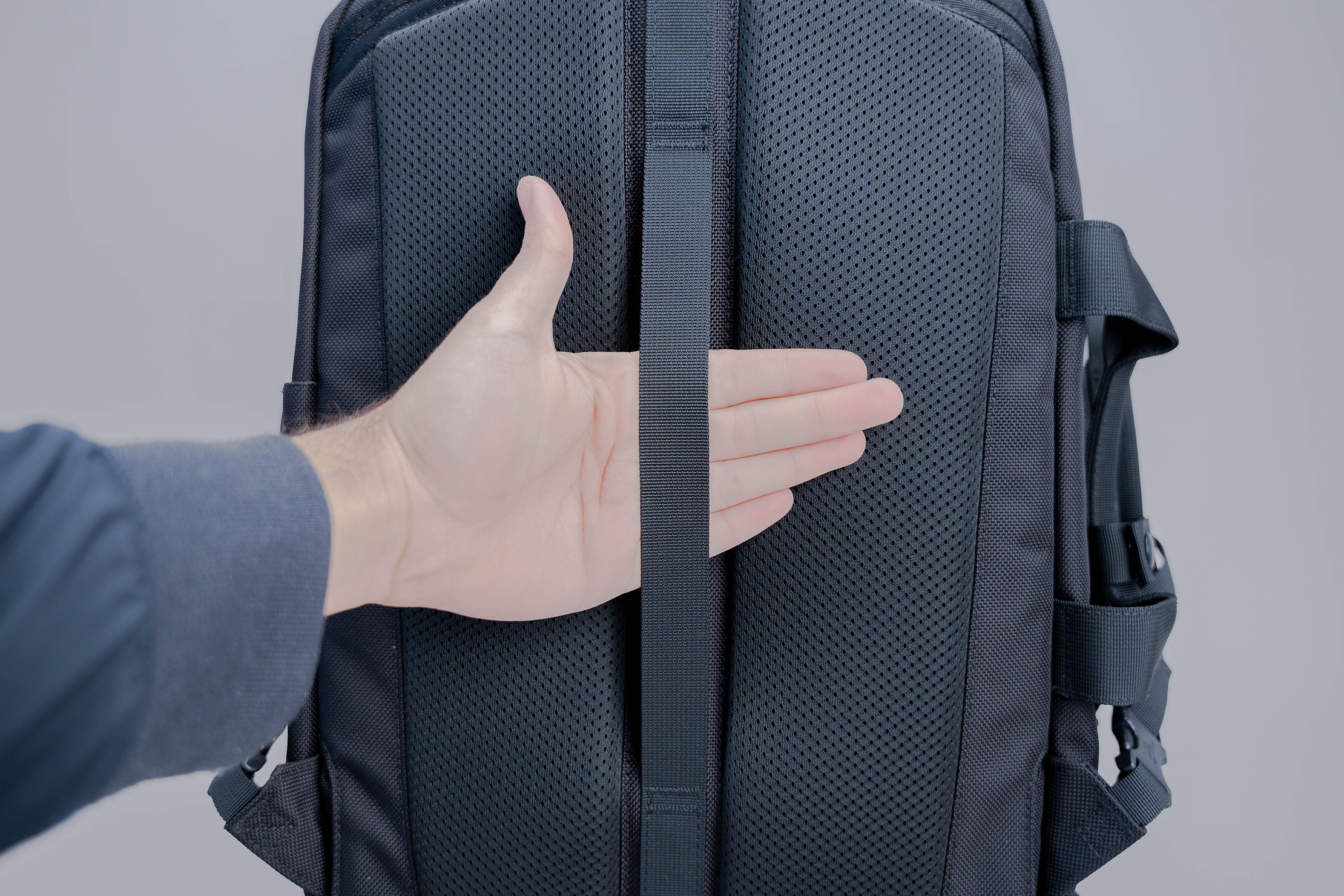
However, if you plan on using roller luggage or a duffel, a daypack like this can be a perfect addition to your travel kit. If roller luggage is your style, we’d recommend grabbing a pack that has a luggage pass-through, like the Aer Flight Pack 3, so you can toss your pack onto your suitcase and stroll through the airport like a total boss.
This is a pack that we think virtually everyone should have in their closet. Even if you don’t plan on using it regularly, it’s great to have for quick trips and days out of the house. It can replace totes, duffels, and reusable grocery bags while offering a whole lot more functionality because, like all backpacks, you can have both hands free while wearing it!
Once you grab one that fits your style and has some quality materials, you’ll wonder how you ever lived without it.
The Good
This backpack is good at most things, but it’s not quite as specialized as some of the other packs we’ll highlight in this guide. Essentially, Traditional Backpacks are versatile packs that will function well in 8 out of 10 situations. But for those other two instances, you’d be better off with something else.
Traditional backpacks offer impressive materials and harness systems that allow you to comfortably carry heavy or bulky gear for long periods of time. They also offer the most purchasing options, meaning you can opt for a pack that provides a boatload of additional functionality, a pack that is sleek and minimal, or something in between. The same goes for style and size. One crucial point is that you’ll see longer-lasting and more durable materials on these types of packs because weight and bulkiness aren’t as much of an issue.
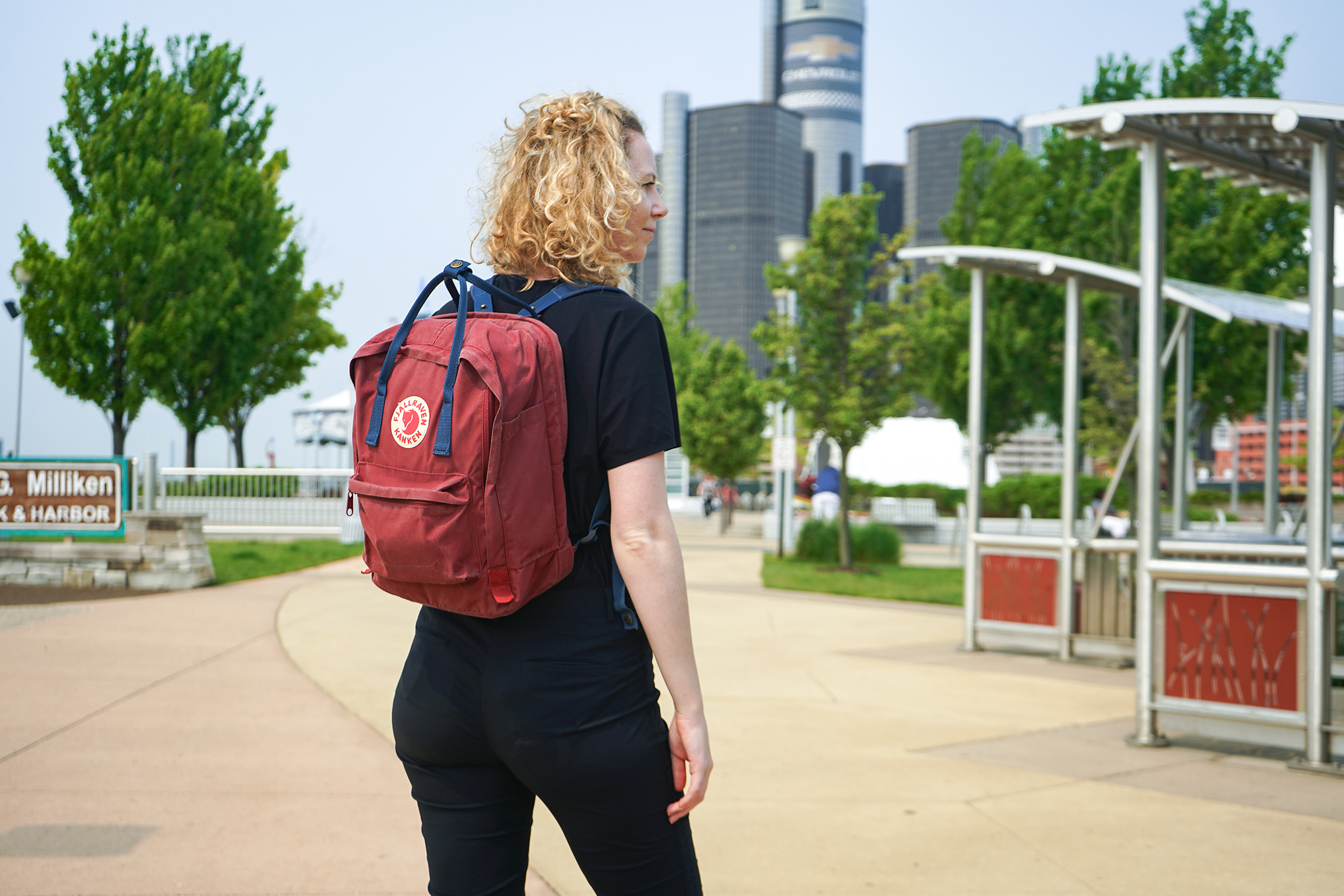
These bags also tend to have the most “structure,” which means they’ll be good for holding more valuable or fragile gear and you can easily organize the contents inside. Because they have more structure and lots of accessories, you’ll also find that these types of daypacks often have multiple carry options—allowing you to carry the pack in “briefcase mode” or “duffel mode” or some other mode entirely. That provides some nice versatility that can be good for some use-cases or specific situations.
And finally, the wide variety of packs in this category means you can spend as much or as little as you’d like. There’s something for every budget, which isn’t entirely true for the other categories on this list.
The Bad
If you’re looking for something extremely lightweight and minimal, this type of pack isn’t going to be your best bet. You can find light daypacks here, for sure, but a packable daypack may suit you better. Traditional daypacks also tend to be a bit on the bulkier side, so if you’re looking for a pack that you can toss into your larger travel pack, there are better options out there.
As we’ve mentioned, the traditional daypack is king when it comes to versatility—but, by definition, that means it’s not king when it comes to specialized use-cases. As you’ll see later in the guide, there are a variety of packs for specific niches that will go above and beyond what a traditional daypack is capable of.
The Verdict
If you’re looking to carry stuff efficiently or you want a versatile pack that will last a lifetime, this is what you need. In fact, even if you don’t think you need this type of pack you should still probably have one on hand. It’ll come in handy more often than you think.
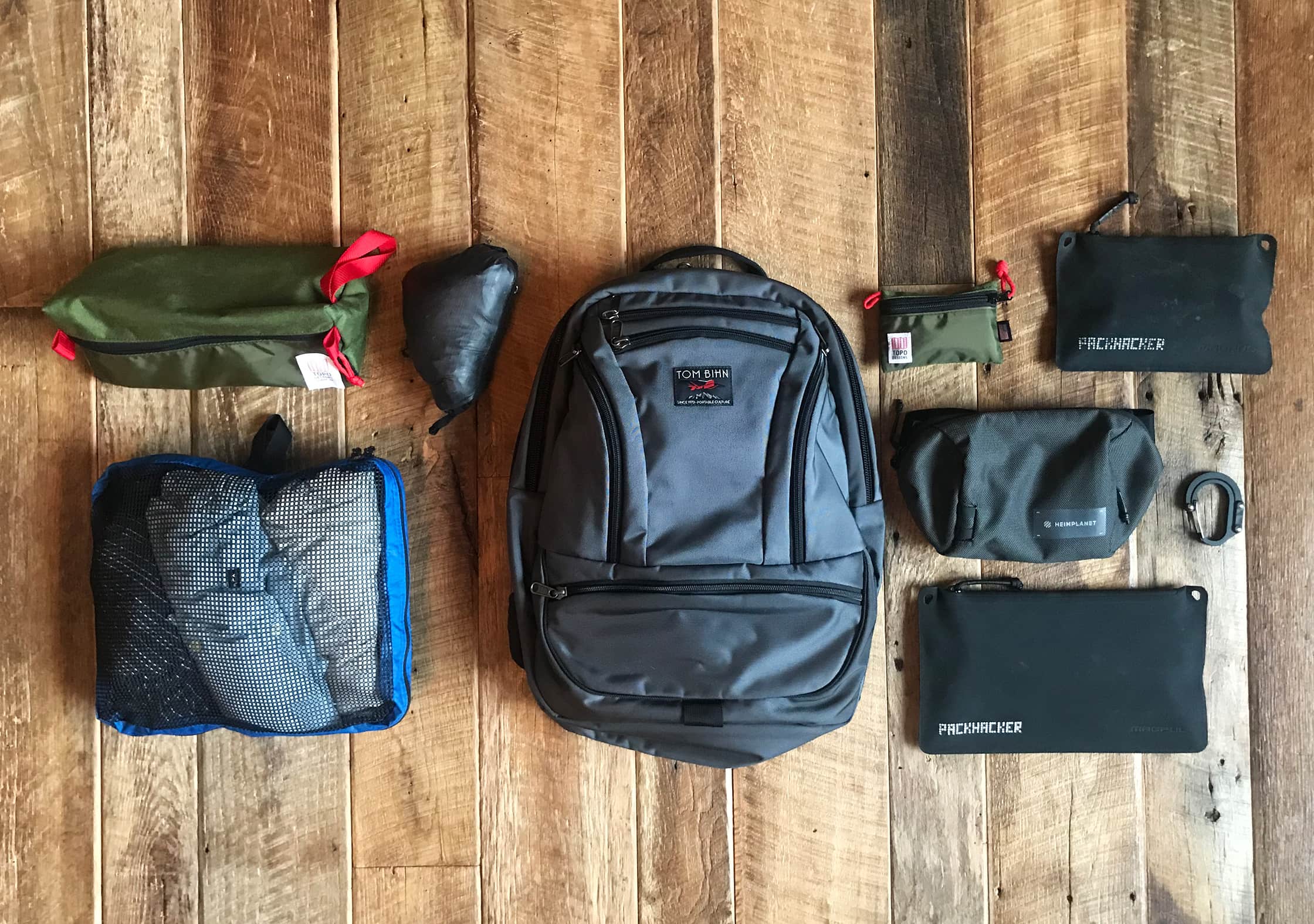
But if you have other, more specific considerations, you might want to keep reading…
Recommendations
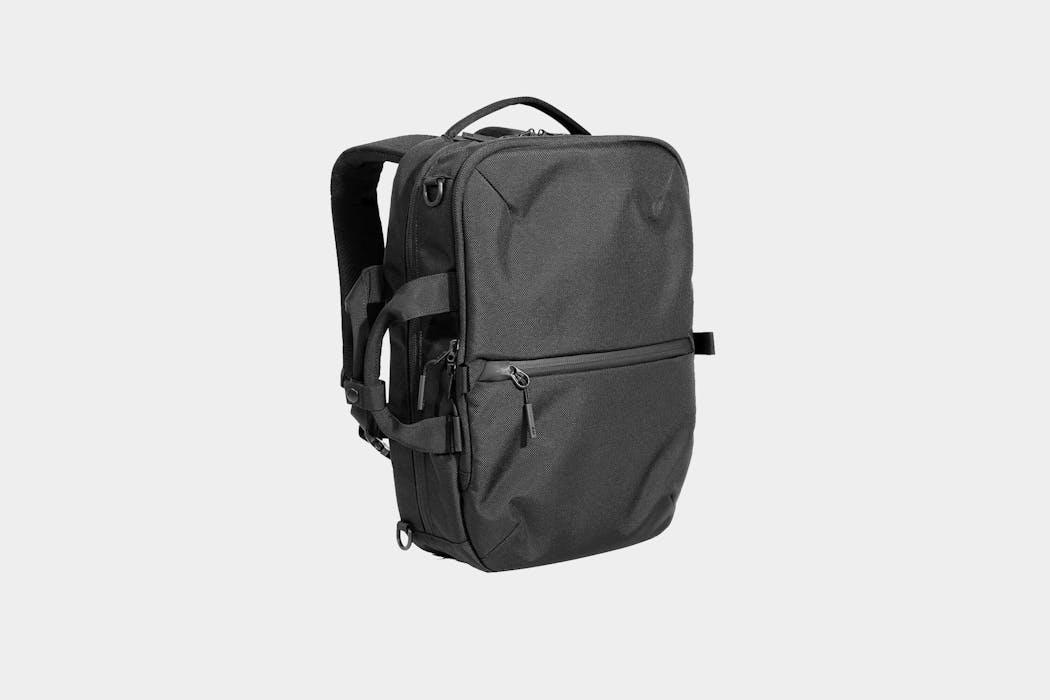
The Aer Flight Pack 3 is a reliable and functional mid-sized daypack from a trusted brand. It’s got a sleek, minimal look and it uses high-quality materials that have held up well during our testing. If you’re looking for the ultimate daypack, you’ll want to check this one out.
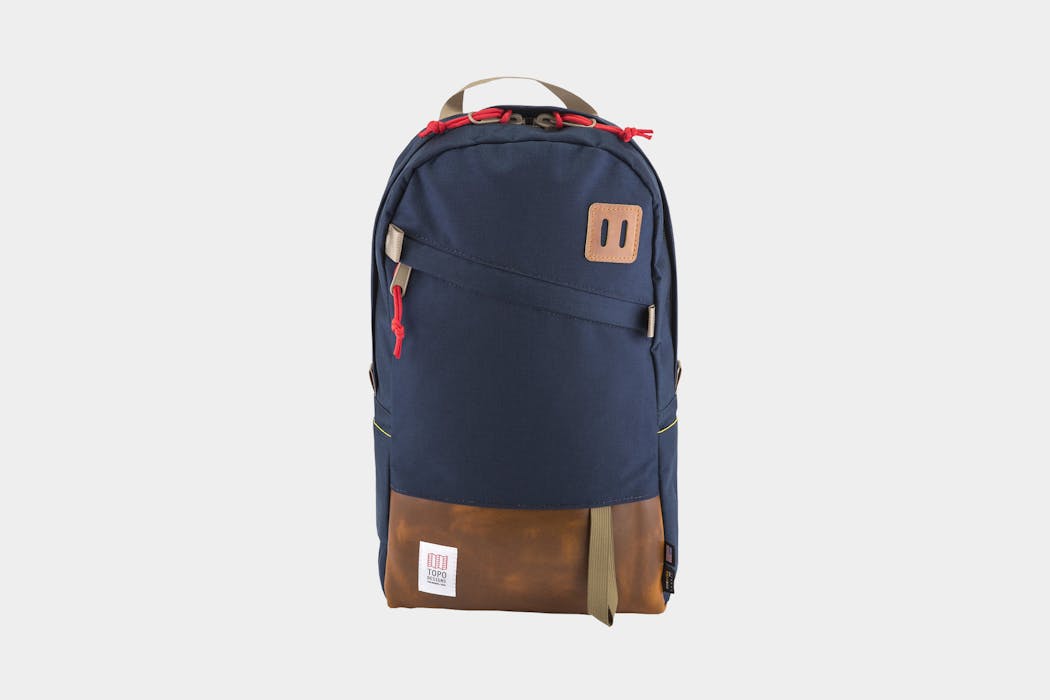
The Topo Designs Daypack is a stylish little backpack that isn’t really so little. At 20 liters, it’s a reliable daypack that can handle weekend trips or bulky items with ease. Although it might look simple, there’s a lot going on inside this heritage style pack—including some high-quality, durable materials.
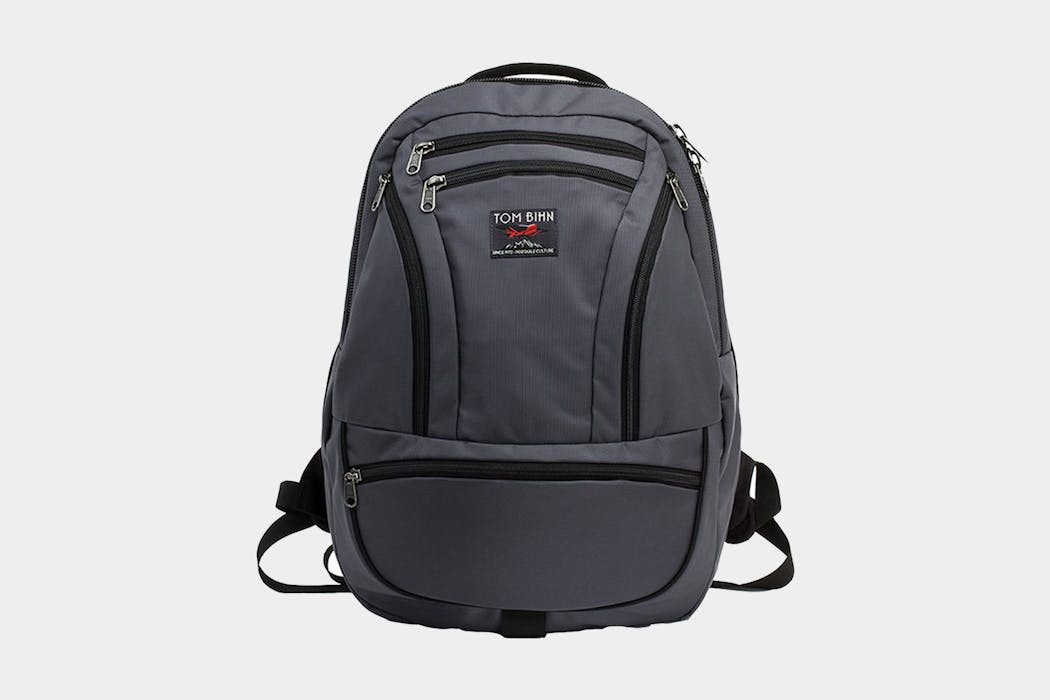
We love Tom Bihn because they put a ton of care, effort, and detail into the decisions they make when creating packs. The Synapse 25 is no exception. With some excellent organization, customization options, and great materials—this bag is a winner and could be a great option for longer trips.
Are packable daypacks the future of the backpack world? We’re not sure, but we’re definitely into them.
Video Overview: 9 Packable Daypacks For Minimalist Travel & Why You May Need One In Your Carry-On Backpack
Feel free to watch this guide overview in video format. We’ll go more in-depth in the written content and keep this page up to date.
Be sure to subscribe to Pack Hacker on YouTube and never miss a video.
What is a packable daypack?
Packable daypacks are the latest, greatest, and most innovative item to hit the daypack market for some time. Over the past few years, we’ve seen packable daypacks explode in popularity, and for good reason. They’re ridiculously lightweight, super compressible, and they solve a problem that almost everyone has faced at some point in their lives.
If you’ve ever arrived in a new city with a big ole’ piece of luggage and thought, “If only I had a smaller bag I could use for the day,” then you are in luck. The packable daypack was built to solve that problem, and for that, we love it.
The way packable daypacks work is pretty straightforward (it’s also, like, in the name—but we’ll clarify). They’re usually built with extremely thin and lightweight materials, which allows you to compress the bag into a small ball, just like you might do with a plastic disposable shopping bag. But it’s not just thin materials we’re talking about here. Everything on a packable daypack is light—from the shoulder straps to the zippers to the buckles. It’s all purpose-built to compress, so you’ll rarely see thick shoulder straps, beefy zippers, or extra features on these bags.
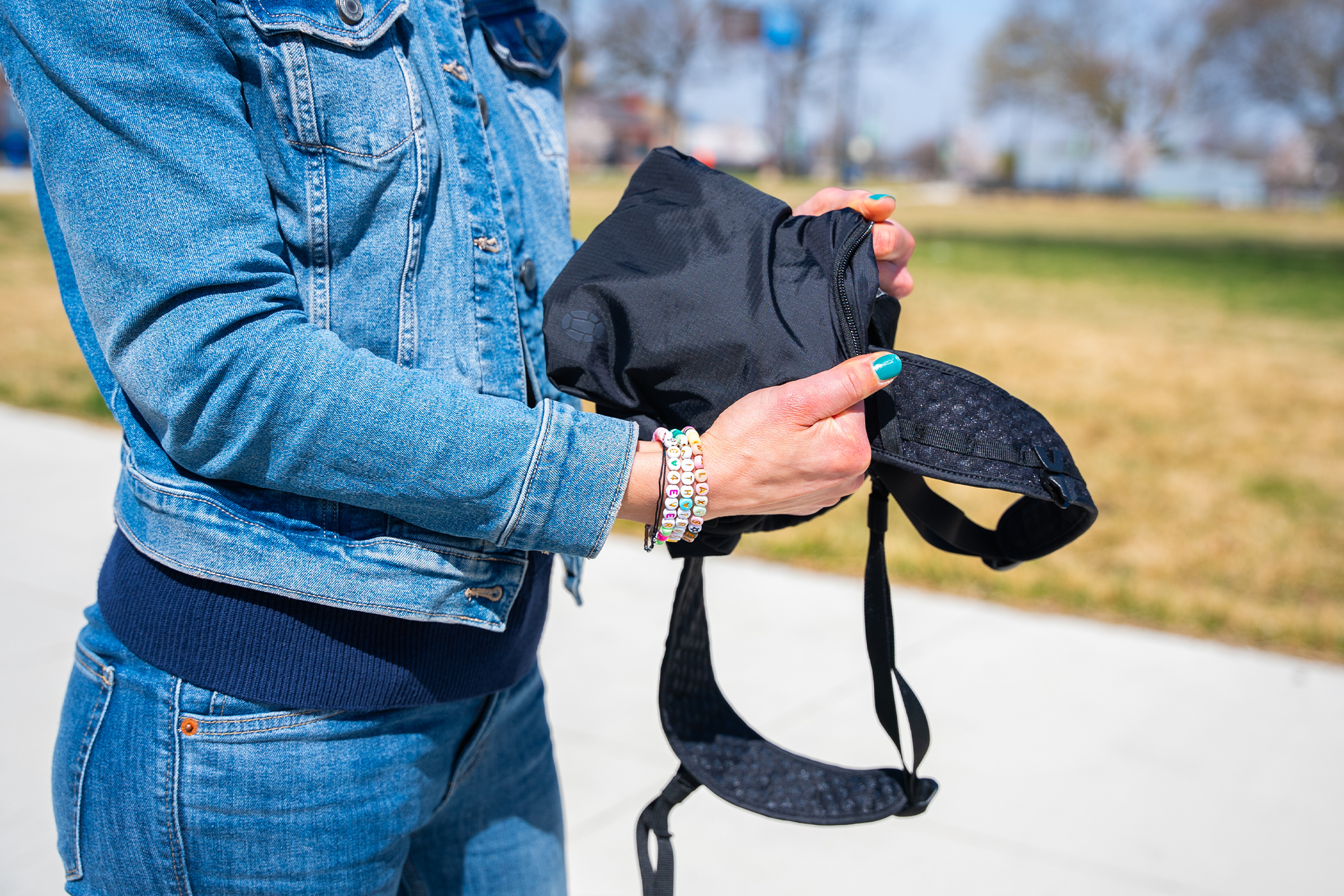
Most bags compress into a pocket on the pack or a small compression pouch. Basically, you pack the bag into the pocket or pouch, zip it up, and you’ve just compressed a backpack down to the size of a soda can (or sometimes, even smaller).
From there, you can toss that can-sized pouch into your larger travel bag, your desk at work, your car, or just have some fun and play a game of catch with your friends! There are no rules when it comes to packable daypacks, people.
Packable daypacks can vary in size, but you can generally expect them to fall between 10 and 25 liters in capacity when expanded. When compressed, smaller-sized packs will take up less room, but the materials and design also play a significant factor. We’ve seen 24-liter daypacks that compress smaller than 15-liter packs. So it’s vital to do your research on each bag before you purchase and consider how important the expanded and compressed sizes are to you.
As far as compartments go, you’ll be hard-pressed to find a packable daypack with more than two or three pockets. The majority of these bags have one large compartment with a small quick-grab pocket—and that’s about it. As you’ll see, these types of bags are pretty barebones (because they have to be).
Materials & Durability
When it comes to packable daypacks, thin and light is the name of the game. Everything on a packable daypack is purpose-built to allow the pack to compress to less than a quarter of its initial size. But let’s be honest, compressing is the easy part. After all, you can compress a plastic grocery bag or a Ziploc bag pretty easily.
The hard part is creating a bag that can do all of that while still holding up for years to come. Using a backpack to carry heavy or bulky items can put a lot of stress on it, but even more importantly, compressing a bag can put an incredible amount of pressure on the seams and materials. So, how do you create a backpack that is strong enough to hold up to all of that while still being extremely thin and lightweight?
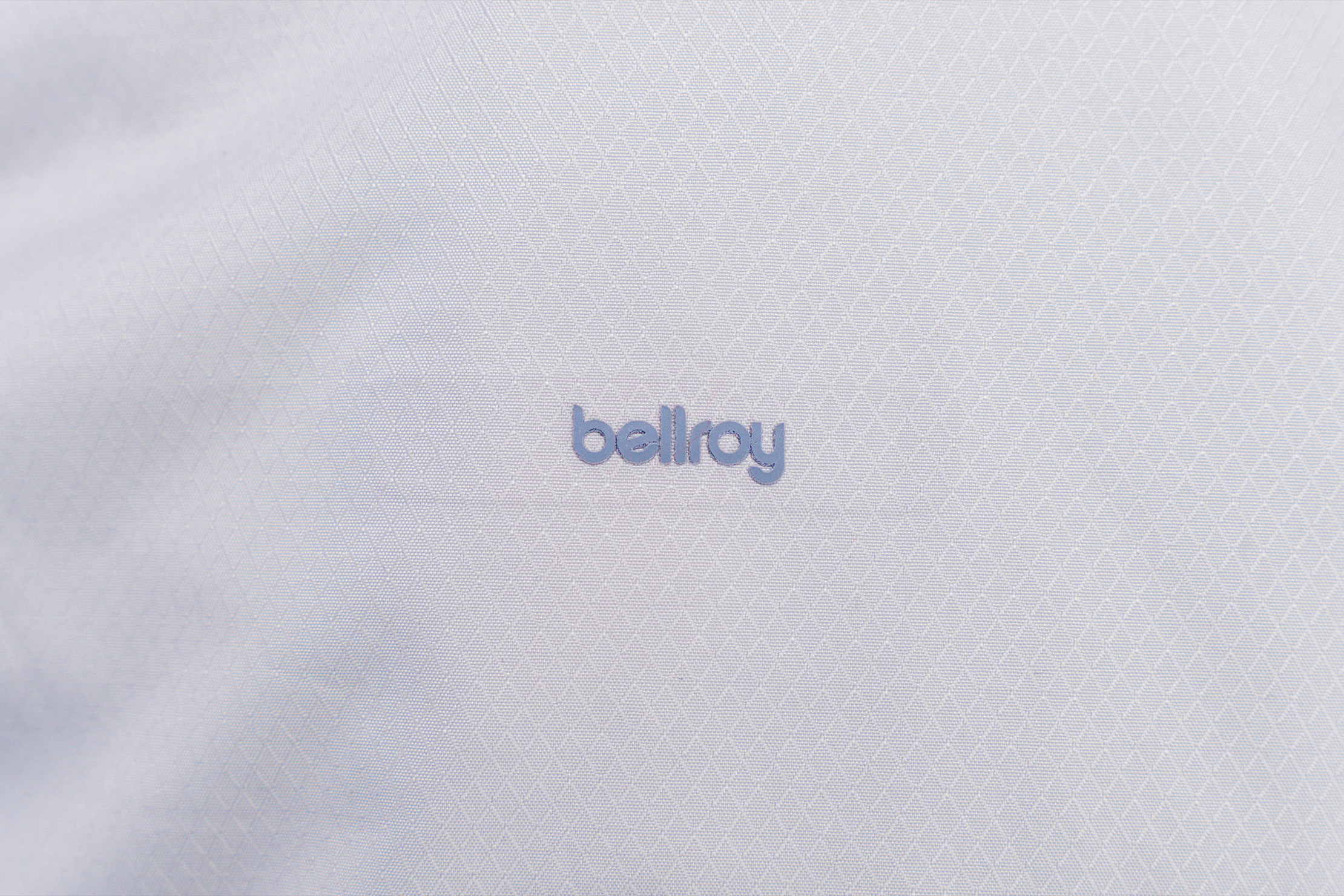
Well, thanks to #science and years of fabric innovation, we now have a handful of materials that are up to the challenge. Here are some of the most common materials you’ll find on a packable daypack—and keep in mind that these materials are similar to what you’d find on other backpacks, they’re just going to be much thinner versions of the same fabric.
- Ripstop Nylon
- CORDURA® Nylon
- Dyneema®
- Various types of “Sailcloth”
- …and that’s about it!
As you can see, there’s a pretty select number of materials that you can use when making a packable daypack. And really, all of these materials are incredibly similar—they’re all thin, lightweight, and have an extremely high strength-to-weight ratio.
Now, with all this talk about super thin, super durable materials… we know what you’re thinking. “Okay, but how durable can these things ACTUALLY be?” Well, if you’re skeptical, you should be.
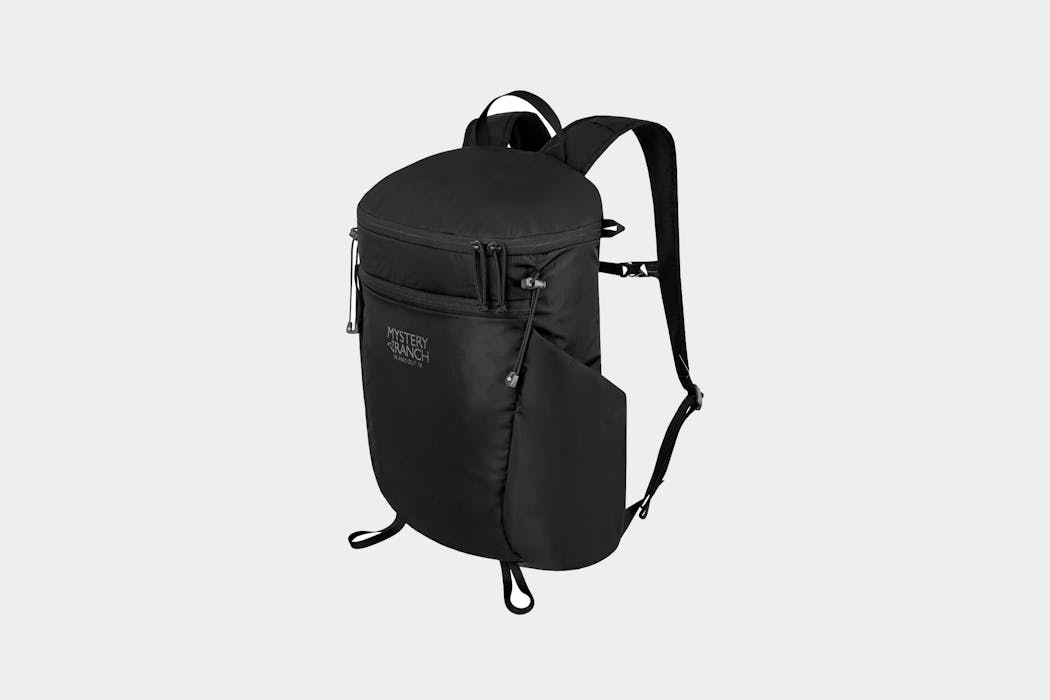
One of the key differences between the Mystery Ranch In and Out 18 and its bigger 22-liter sibling is how you access the main compartment. The 18’s top hatch opening is the way to go, in our opinion, as it’s easier to open and close when you’re hiking. The pack’s oversized water bottle pockets and hiking pole loops are handy features, too, though the bag’s packable nature leaves it with very few amenities. That said, if it’s a packable backpack for the trail you want, the In and Out 18 offers the necessities and the robust build quality the brand is known for.
Here’s the deal. A packable daypack is likely never going to be as durable as a full-fledged, traditional daypack. With materials this thin, you’re always running the risk of creating small punctures, abrasions, rips, tears, and more. While 30D Ripstop Nylon is exceptionally durable given its weight, that’s just the thing—it’s so thin and light that it’s never going to be as durable as, say, 1000D CORDURA® Nylon.
What we’re trying to say here is that given the limitations of packable daypacks, they’re incredibly durable. Let’s not beat around the bush here—they’re certainly not the most durable packs money can buy. In fact, you’ll want to be careful with your packable daypack—even putting bulky items in can be cause for concern.
But as far as we’re concerned, as long as you put some thought into how you pack your bag and you treat it well, you’re going to be okay. And the pros of a packable daypack truly cannot be understated.
Who (and what) is it good for?
Packable daypacks are extremely small when not in use, but still quite functional when in use. As you can imagine, there are a lot of situations where this can be helpful!
We mainly use packable daypacks for travel. If you’re traveling with one large travel backpack, you can bring along a packable daypack to use once you arrive at your destination. The benefit here is that it takes up little to no space in your pack while you’re traveling, and then you don’t have to use your enormous travel backpack for a day out in a new city.
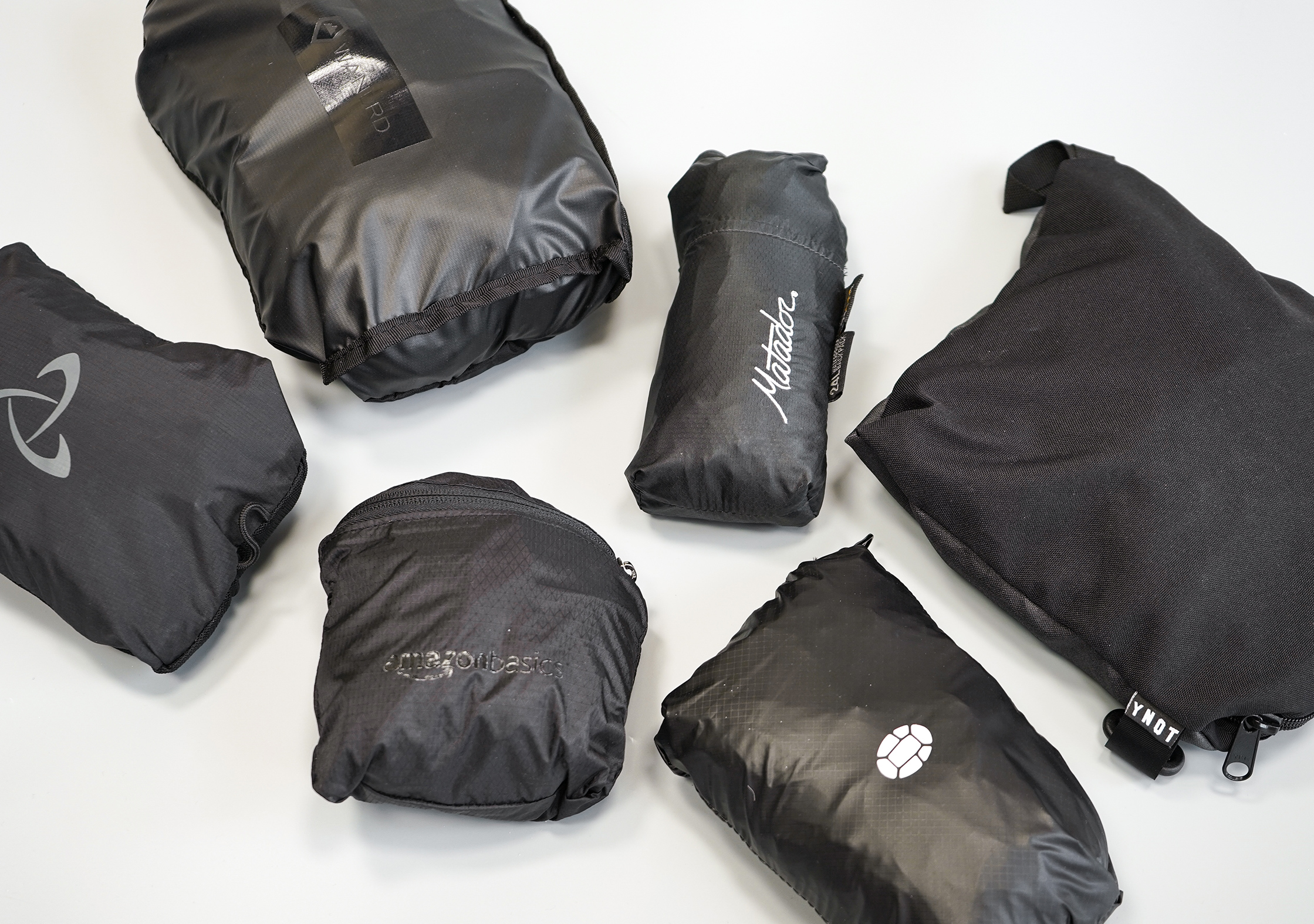
Some packable daypacks are even small enough where you can toss one in your jacket pocket and carry it around with you just on the off-chance you might need a backpack at some point during the day. Pretty awesome, right?
There are many uses for packable daypacks outside of travel, as well. You may want to keep a packable pack in your desk at work, in case you need to hit the grocery store on your way home. You could keep one in your car or a saddle bag on your bike. Or, for the ultra-minimalists and tiny apartment dwellers, you may want to just save space in your closet and use one of these as your only daypack!
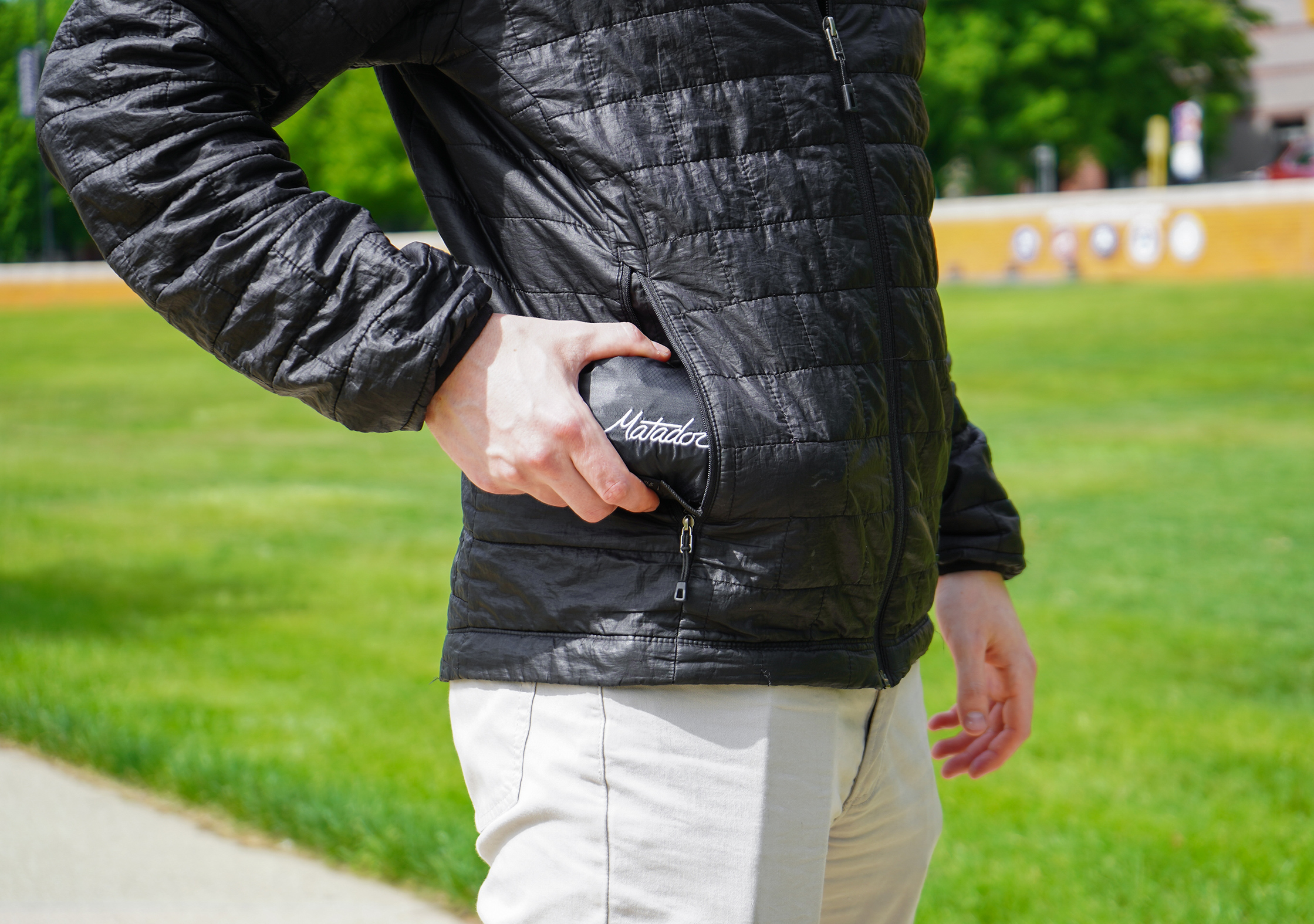
Packable daypacks are great for anyone on the go. They allow you to be prepared to carry
“stuff” (whatever that may be) at any moment, without having to lug around an empty backpack. They’re also great for minimalists, or anyone who’s looking to remove bulky items from their life.
The Good
Alright, this won’t take long (we promise).
Packable daypacks are thin, light, and allow you to be prepared for anything. …And that’s why they’re great! We really cannot understate how nice it is to have a backpack that compresses to the size of your fist. It’s truly awesome.
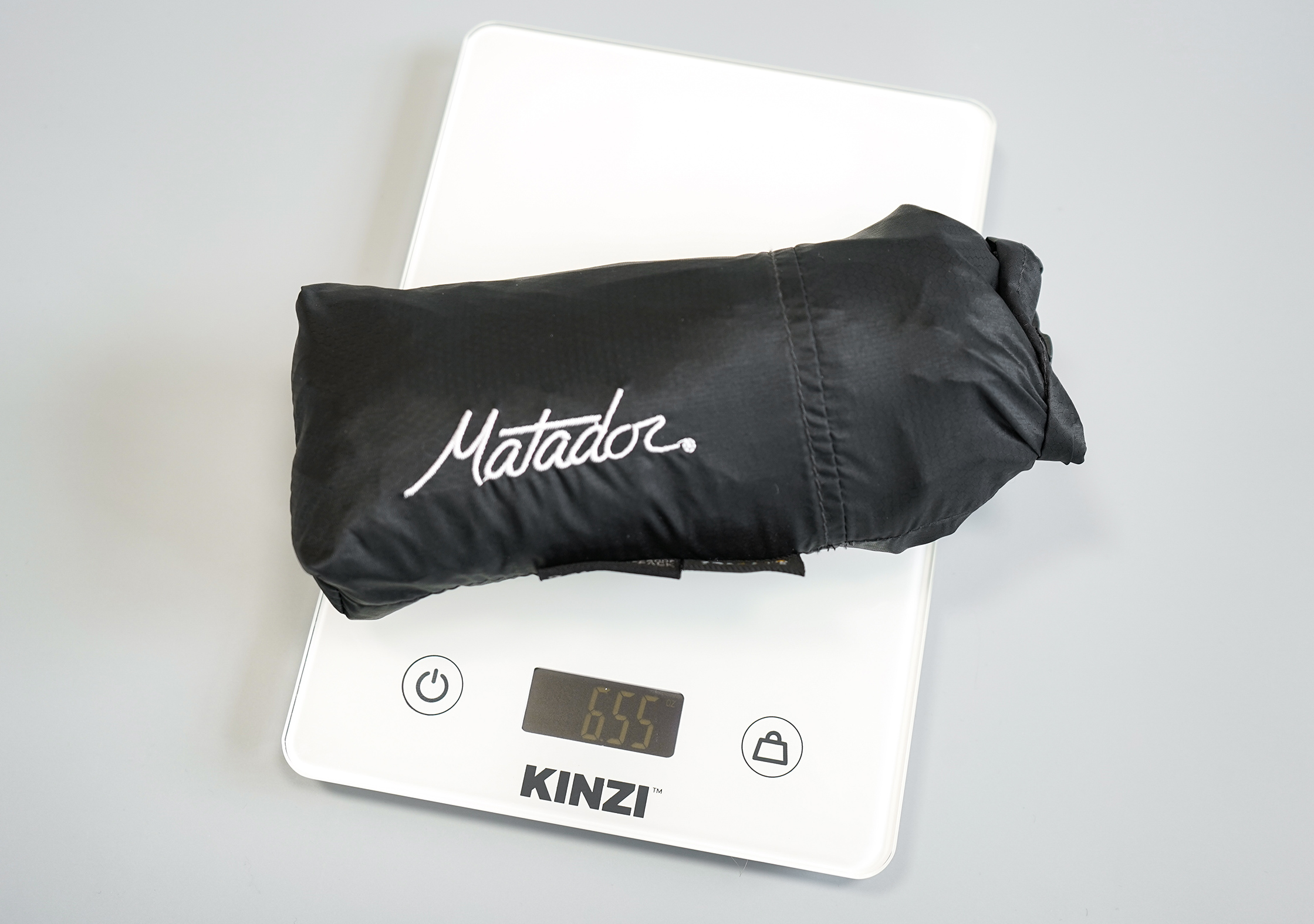
But, let’s be honest, there are some downsides…
The Bad
Now that we’ve talked at length about why packable daypacks are amazing and everyone should have one, let’s get real for a minute. There are downsides to these bags—quite a few, in fact. And while none of them are necessarily dealbreakers, you should be aware of them.
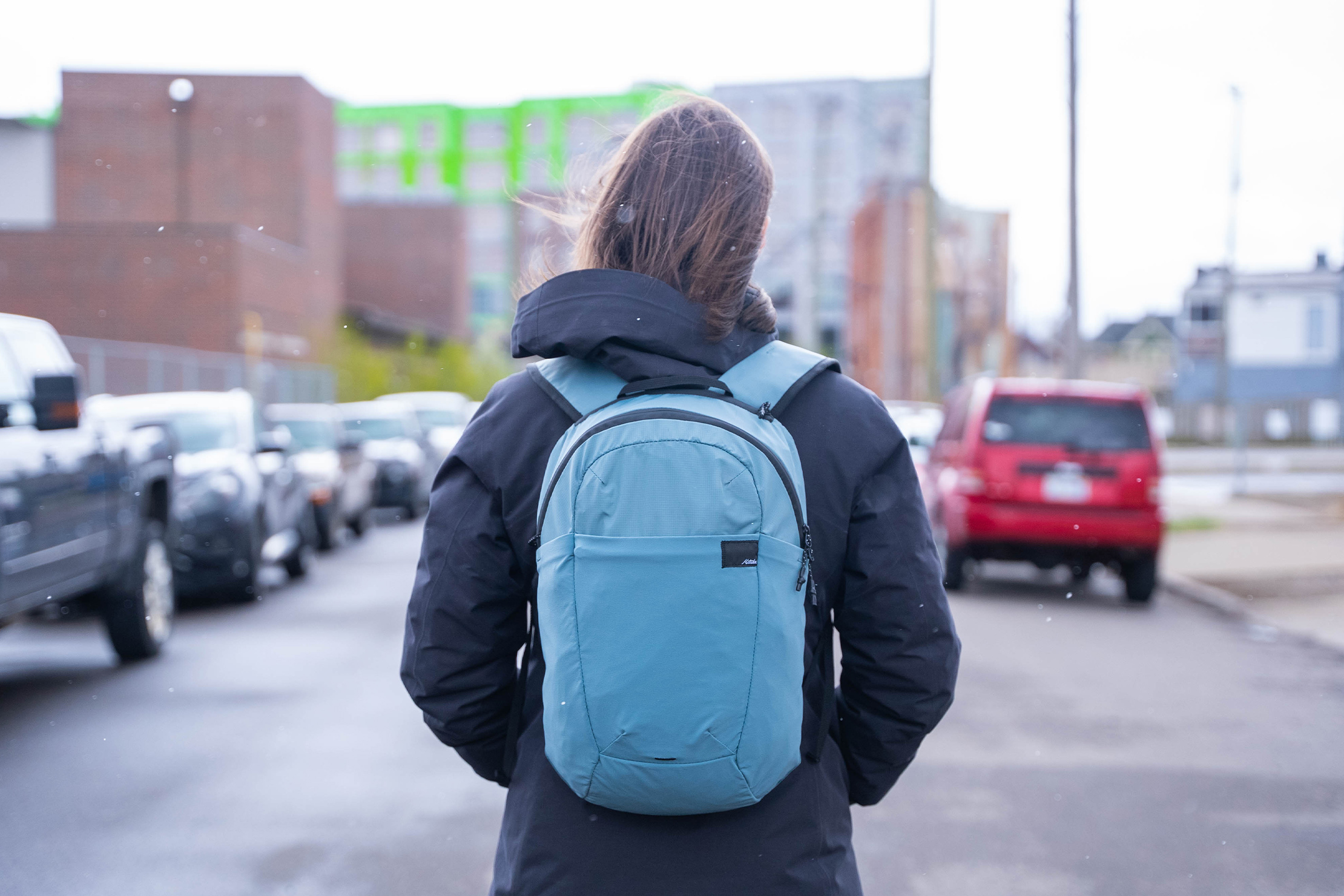
A packable daypack is likely never going to have as much structure and rigidity as a traditional daypack or any of the other daypacks we’ll be mentioning in this guide. That is, unless some new, amazing fabric technology comes out. The reality is that because these bags are so thin and so lightweight, the material is not going to stand up straight or hold its shape like a regular backpack would.
As a result of this and some other factors, packable daypacks do not carry nearly as well as a traditional daypack. Because they have to be so thin and light, they generally have extremely minimal harness systems (although we’ve tested a few that excel in this department, they’re few and far in between). Usually, you’ll find extremely thin straps—which tend to get twisted as you’re using the bag—with minimal zippers and buckles. No matter how you slice it, packable daypacks aren’t great for carrying heavy loads over long distances.
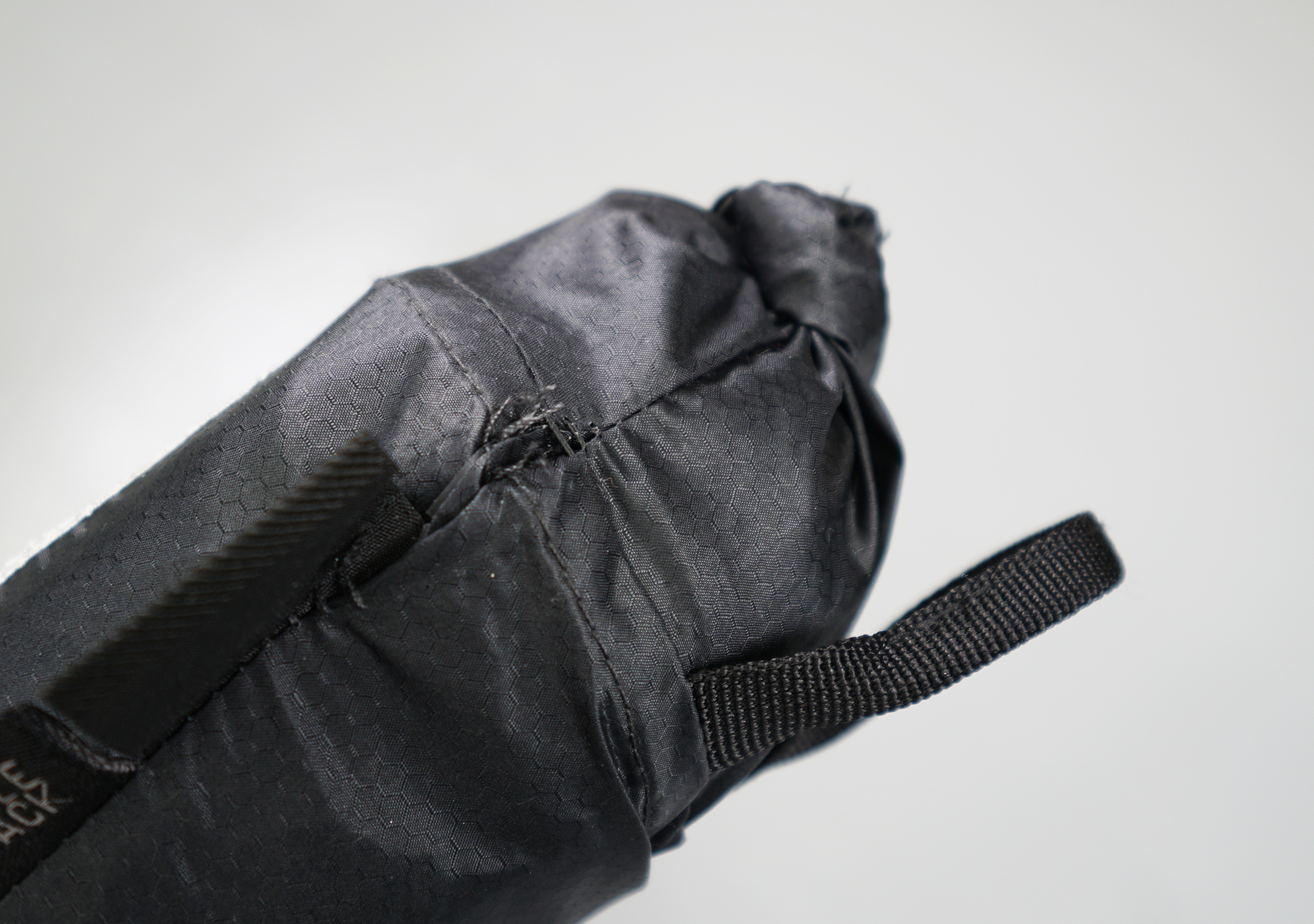
As we mentioned earlier, durability is another thing to consider with packable daypacks. Super-thin ultralight materials are never going to be as durable as the thick, heavy stuff. You are far more likely to experience a puncture, tear, or rip with a packable daypack than with a traditional one. Although, if yours is made with ripstop nylon, those rips won’t get any bigger, which is nice. For this reason, they’re not the best for sustained, heavy use.
The Verdict
Packable daypacks serve a specific purpose, and they do it very well. They allow you to be prepared for anything—whether that’s in the travel context, at work, or on your commute. If you need something that will take up virtually no space when not in use while still being functional when in use, there’s nothing better. But all that comes with downsides. A packable daypack is not suited for heavy, daily use—and it’s not the most comfortable thing to wear, either.
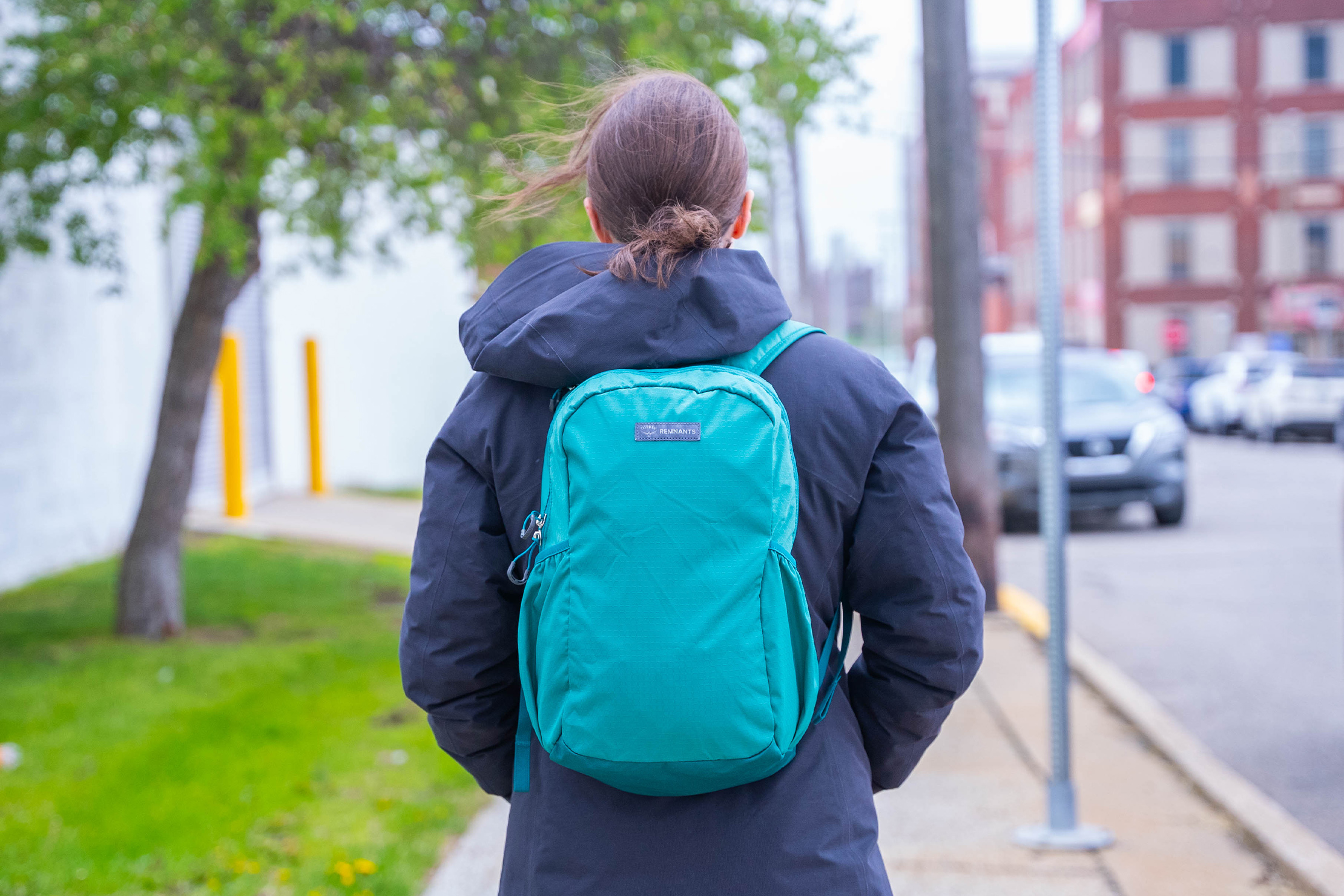
As far as we’re concerned, those aren’t dealbreakers. In fact, if we could only choose two packs off this list, a packable daypack would surely be one of them. For one bag travel, they’re practically indispensable. And for everything else, they’re pretty damn convenient.
Recommendations
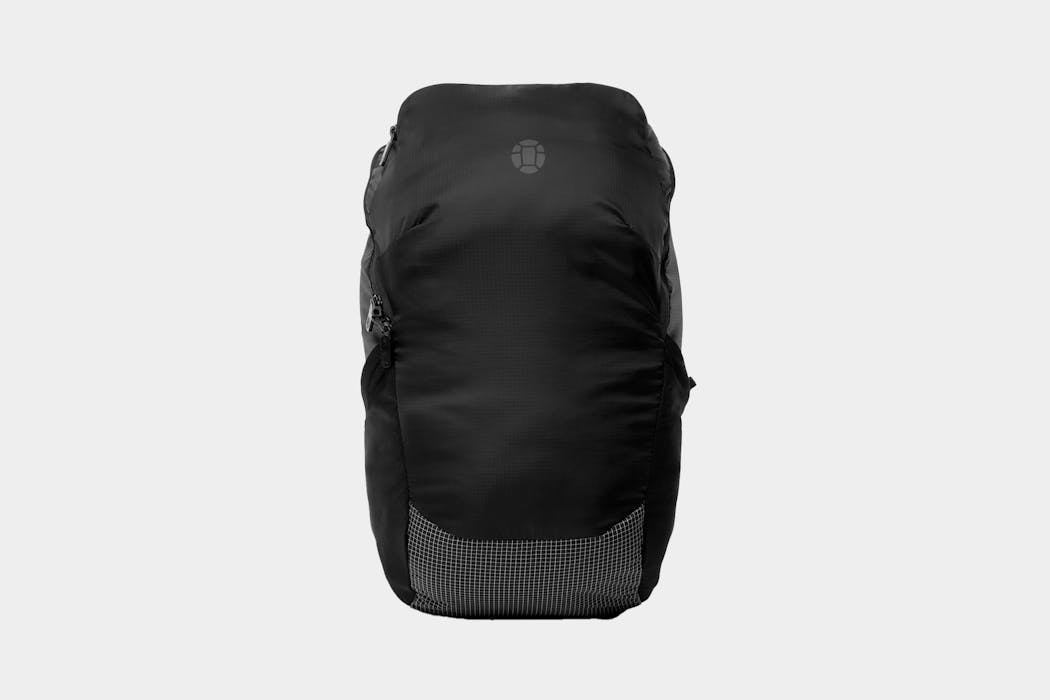
Tortuga adopting a less compartmentalized design for its backpacks has shown us the brand can do lightweight packs, too. Doubling down on that is their Tortuga Packable Backpack. Made with 70-denier ripstop nylon, the entire 19-liter bag only weighs 11 ounces while still looking like a full-fledged daypack. Yes, its harness system isn’t quite as robust as its more buff siblings, but it has a decent balance of padding and thinness to maintain the bag’s overall packability. On that note, compressing the bag is no issue since it packs into its own pocket and is down to a size no bigger than a melon.

This is the packable daypack that is the exception to the norm. Why? Because it looks and feels like a regular backpack! It’s got robust materials, a bunch of pockets, and some accessories that you just never see on packable daypacks. But it’s also heavy and bulky as a result.
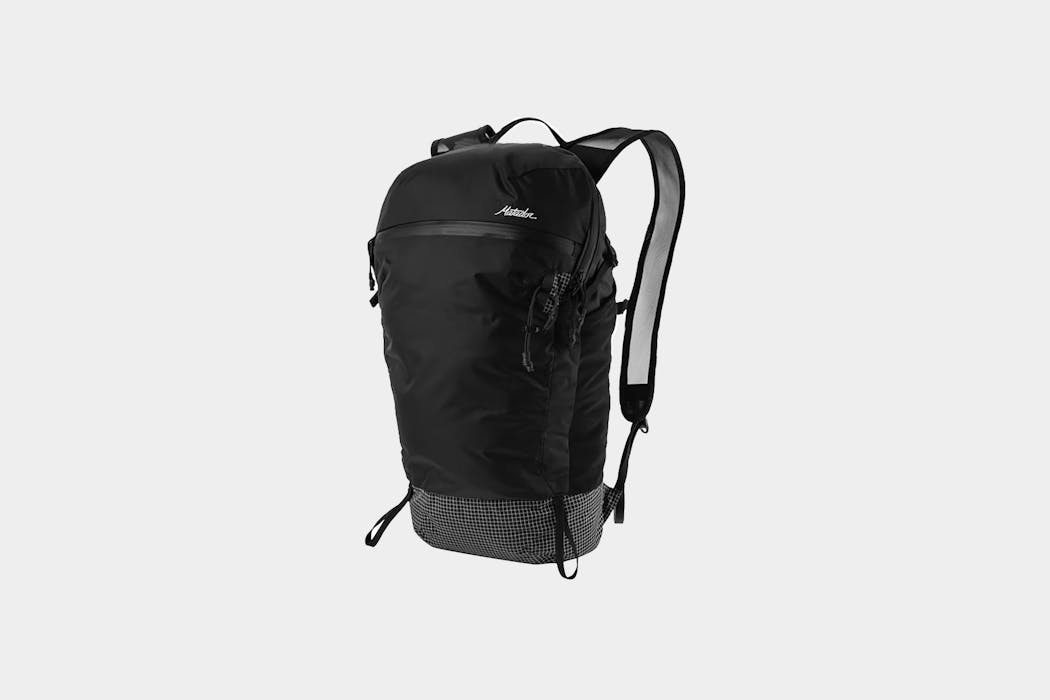
Matador is known for making extremely packable gear, and the Freefly16 is just one of their packable daypacks. We like this one because it’s pretty versatile and offers a decent harness system without sacrificing space when compressed. That being said, we’ve had some durability issues during testing.
It’s a travel pack! No, it’s a daypack! No, it’s an expandable backpack! (And it’s the best of both worlds.)
What is an expandable backpack?
If you’ve been reading carefully, you may have noticed something different about this section. Here, we’re not going to be discussing a daypack, specifically, but an expandable backpack.
What’s the difference, you ask? And why is this thing that is supposedly not a daypack in a guide called The Daypack Guide?
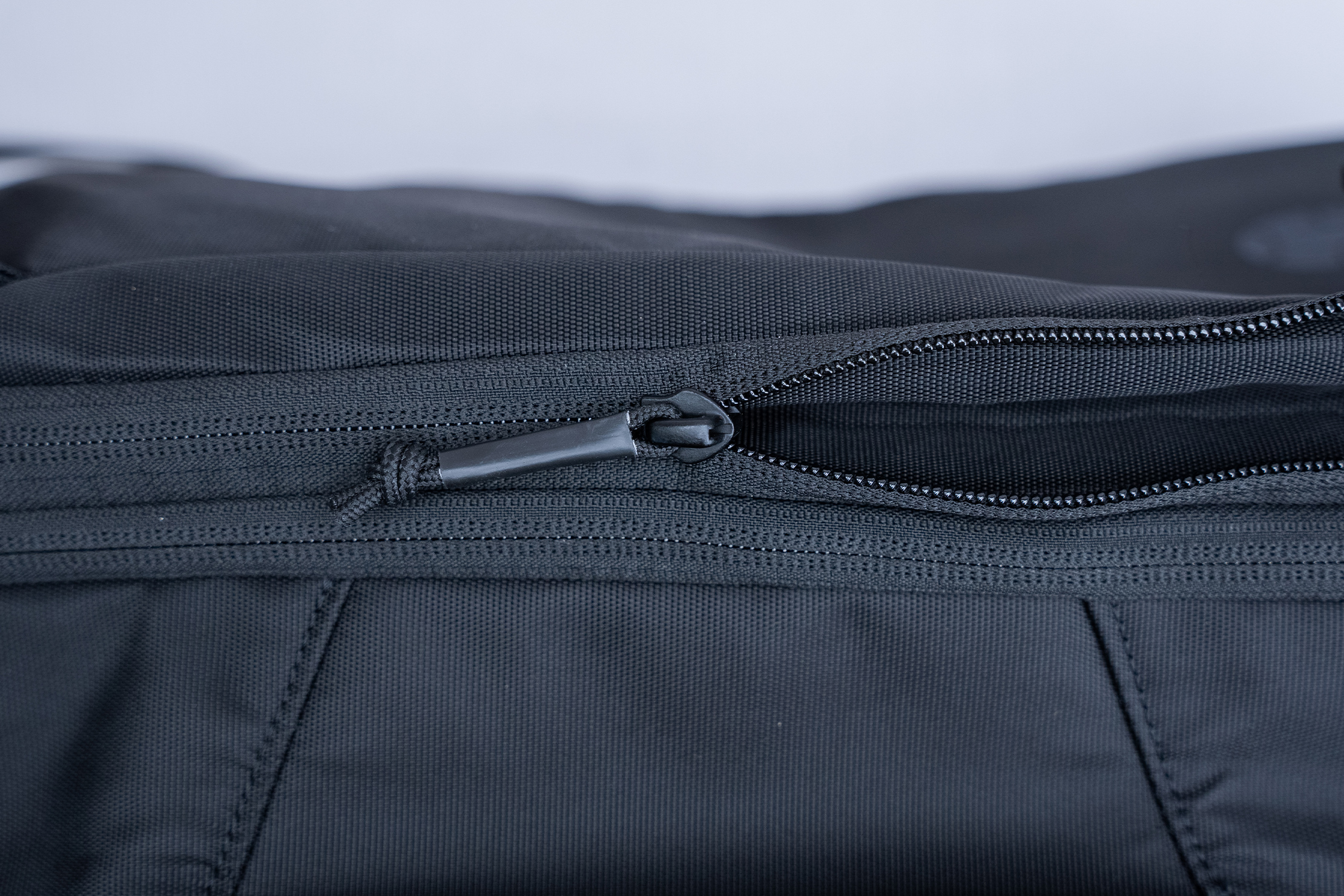
Well, an expandable backpack is part daypack, part travel backpack. This is a bag that can function as either, and it does so by expanding or compressing accordingly. Does it compress as much as a packable daypack? No, not even close. And that is why it has its own category!
Expandable backpacks give you the best of both worlds (at least, in theory) by providing you with a fully-capable travel backpack that you can use for extended one bag travel. The idea is that you can use this bag for long journeys—like flights or train rides—and then remove the contents of the pack once you get to your destination.
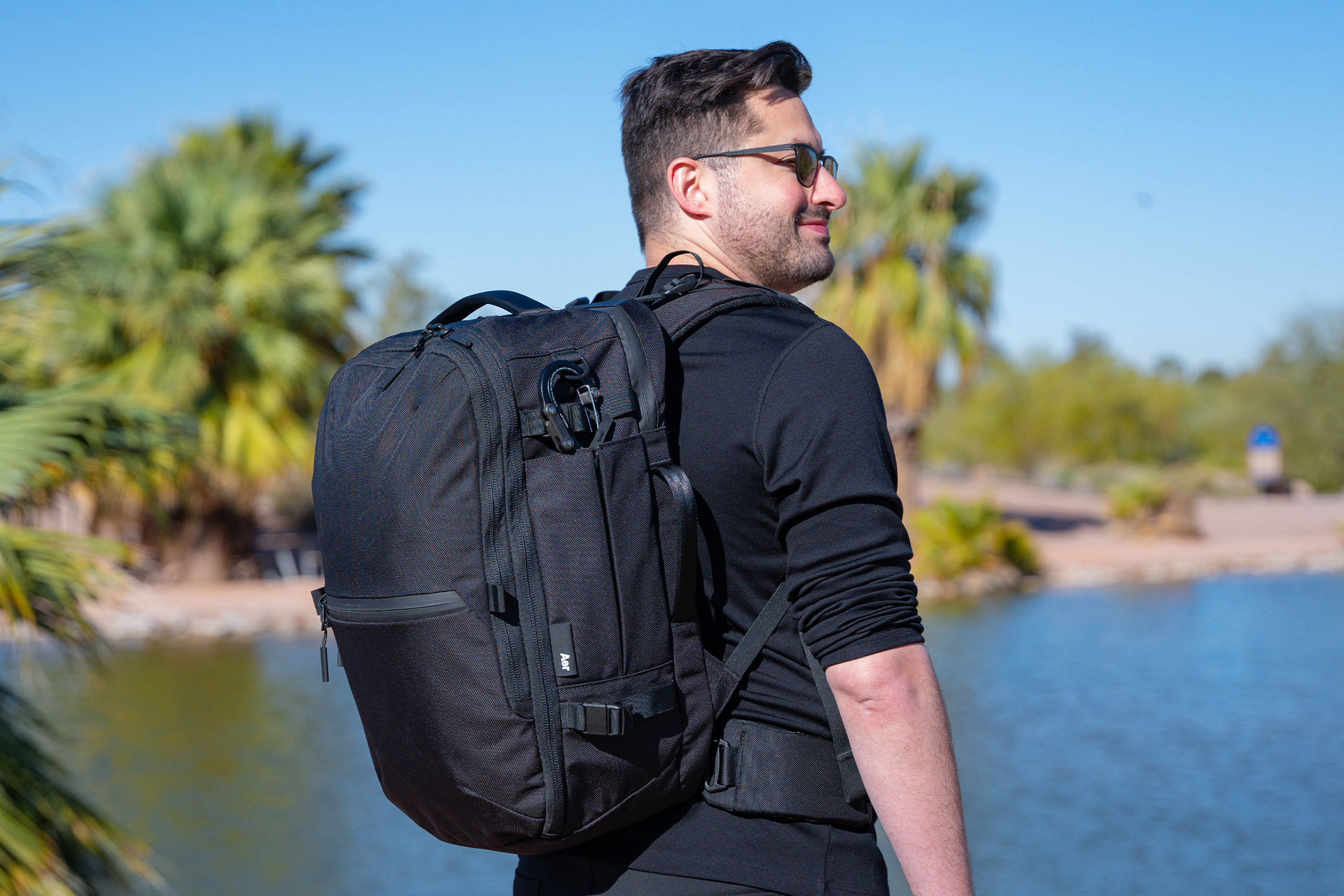
Once you’ve removed a majority of the contents, you can compress the bag down to daypack-size and head out on the town. You won’t stick out nearly as much as you would with a massive travel backpack, although we’re not going to lie, it will certainly look a bit more cumbersome than a traditional or packable daypack.
These types of packs often have high liter-capacities, up to 35 or 45 liters when fully expanded and in “travel pack mode.” When compressed, the size can vary—but expect to lose between 10 and 15 liters of capacity. Some bags are built in a way that there are two different “modes” with different capacities and little to no wiggle room in between. These usually use some kind of compression zipper that will run around the length of the bag, allowing you to compress it by zipping up excess fabric.
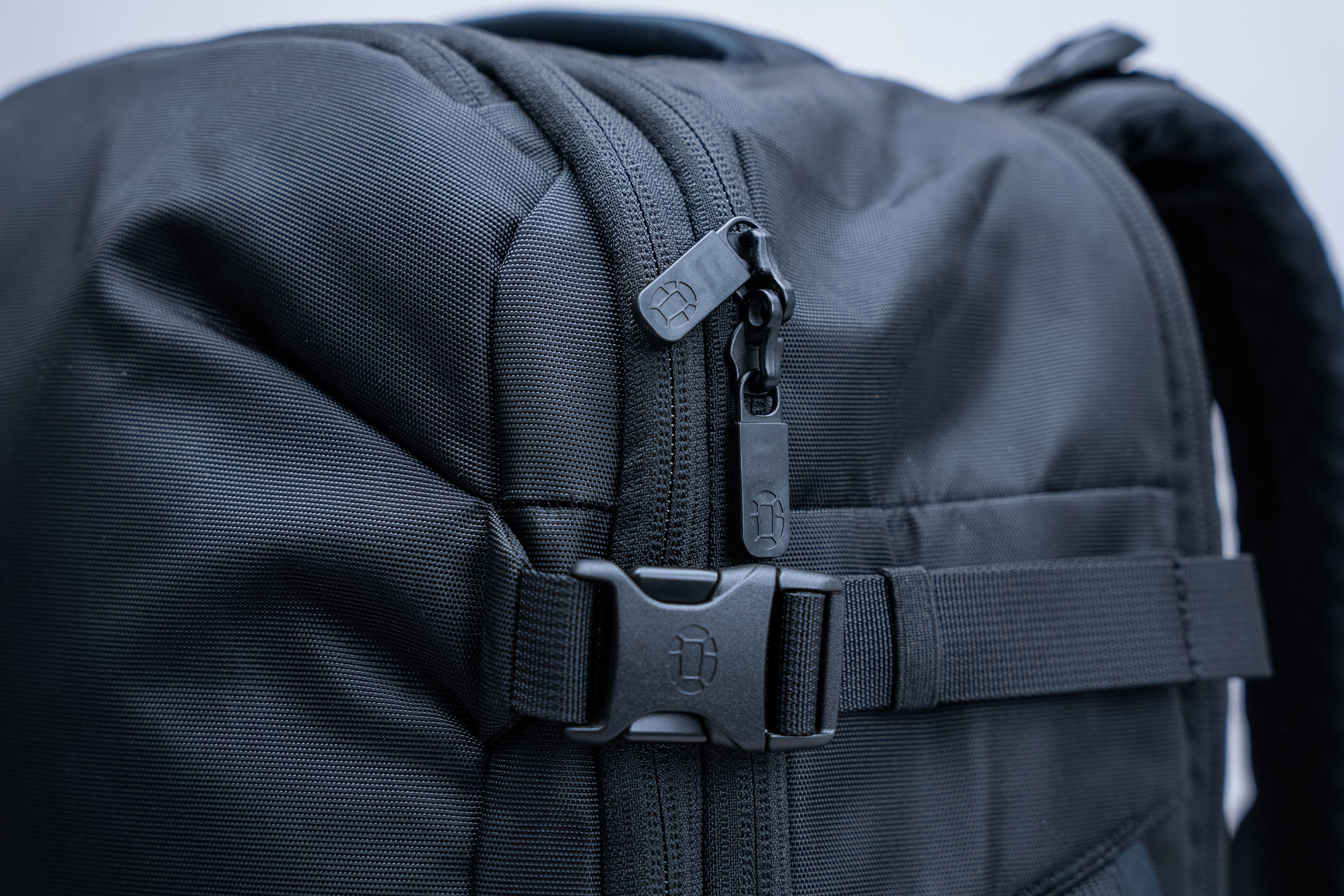
Other bags may be built in a way where you can simply compress them down to whatever size you’d like. These usually use simple compression straps, meaning you can often compress the bag to be extremely thin, or compress it just a little bit from its fully-expanded size.
Materials & Durability
Expandable backpacks tend to have the same kinds of materials you’d find on a travel backpack because, well…they are travel backpacks! This means you’re going to encounter some pretty durable and high-quality fabrics.
Could you find similar materials on a traditional daypack? Absolutely. However, with expandable backpacks, you’re going to see higher-quality materials across the board, as opposed to traditional daypacks where you’ll find a ton of different materials of varying qualities.
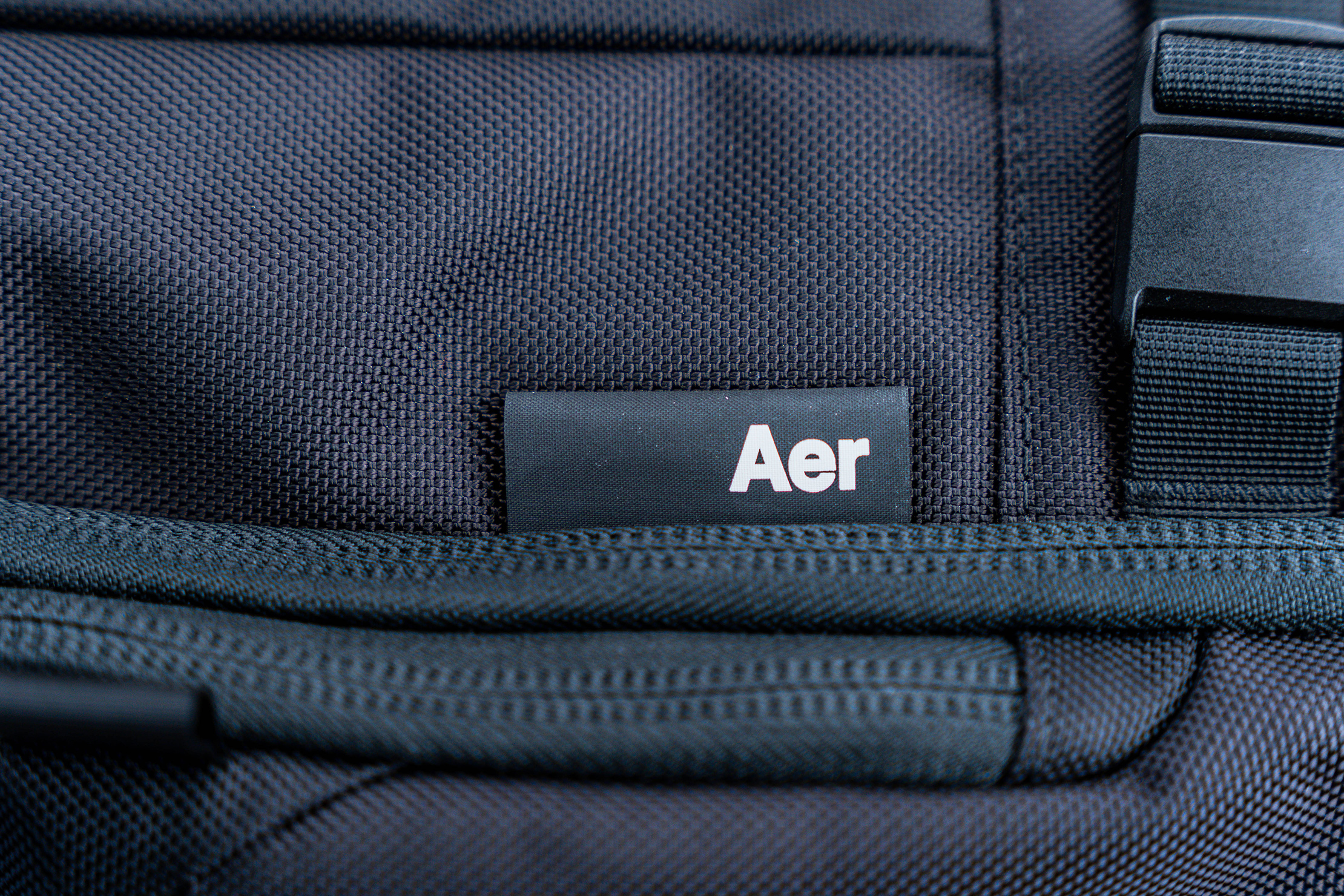
The majority of expandable daypacks are going to be made with some kind of nylon. That might be Ballistic Nylon, Ripstop Nylon, CORDURA® Nylon, or some other version. These are all super durable fabrics that can put up with daily use and long term travel for years to come. And while you might notice that these are similar to the materials we mentioned in the Packable and Traditional Daypack sections, they’re generally going to be much, much thicker. A packable daypack might have 30D Ripstop Nylon, while an expandable daypack is more likely to have 1000D Ripstop Nylon.
You could still find a variety of materials here—anything from polyester to canvas, sailcloth, and more—but in general, we tend to encounter nylon on these bags. And quite frankly, given the wear and tear that is likely to occur with a bag like this, we’d recommend going for something strong like a Ballistic or Ripstop Nylon over pretty much anything else.
And just like the traditional daypacks we covered in the first section, you’ll find a variety of other materials on these bags. Here’s a quick run-down if you need a refresher:
- YKK, SBS, or Zoom zippers
- Duraflex, Woojin or ITW hardware
- EVA foam
- Nylon webbing
- Metal buckles
- DWR coating
Who (and what) is it good for?
Expandable backpacks are great for minimalist travelers. They can fit everything needed for a year of perpetual one bag travel while still functioning well as a daypack when out and about in a new city. The general concept with expandable backpacks is very similar to packable daypacks, only in this case, instead of having a travel backpack and a daypack, you’ve got one that pulls double-duty.
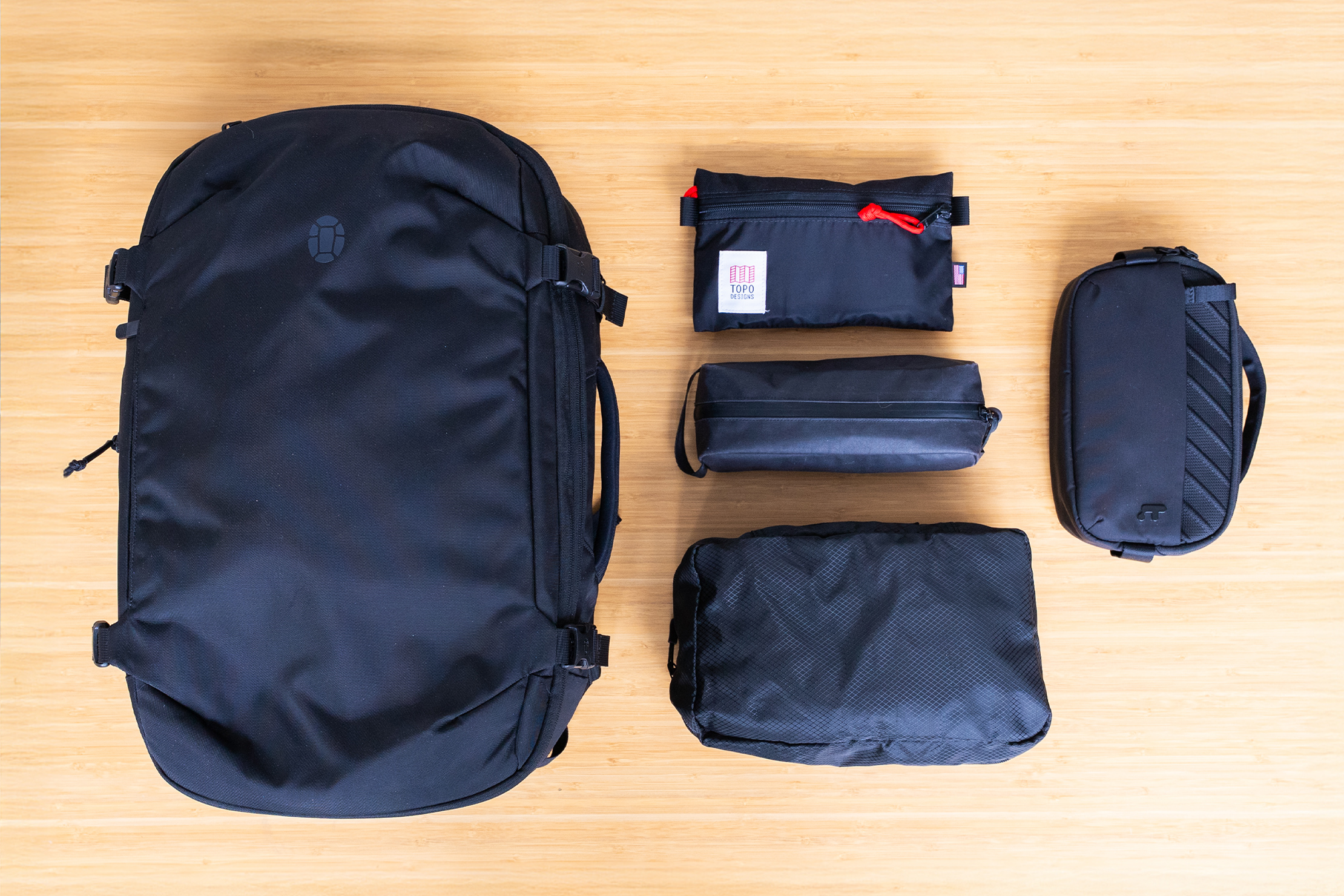
One potential problem with this system is that you do need a place to store the extra contents of your bag when not in use. Presumably, you’d be able to toss most of your stuff into a dresser in your hotel or Airbnb, or into some kind of locker at a hostel. If you don’t have a place to store your stuff, that could be a bit of a problem—unless you’re cool with stashing the contents of your bag in an alley, or maybe under a bridge or something. (Sorry, we don’t have much experience with this.)
We should also mention that packing cubes can be a huge convenience here. If most of your stuff is packed into two or three packing cubes, you can simply pull them out, compress the pack, and you’re good to go. Otherwise, you’ll be dealing with a whole mess of clothes and other unorganized gear.
The Good
This type of backpack is fantastic for someone who is looking to travel minimally, or especially someone who’s on a budget. Most expandable backpacks are priced similarly to your average travel backpack, so you can save a good bit of money by buying just one expandable backpack instead of both a travel backpack and a daypack.
As we mentioned in the durability section, these bags are generally going to hold up longer and be capable of handling more wear and tear than your average daypack. After all, they have to function as a travel backpack and a daypack—meaning they’re going to see a whole lot of use. They also need to be able to hold up to the pressures of compression.
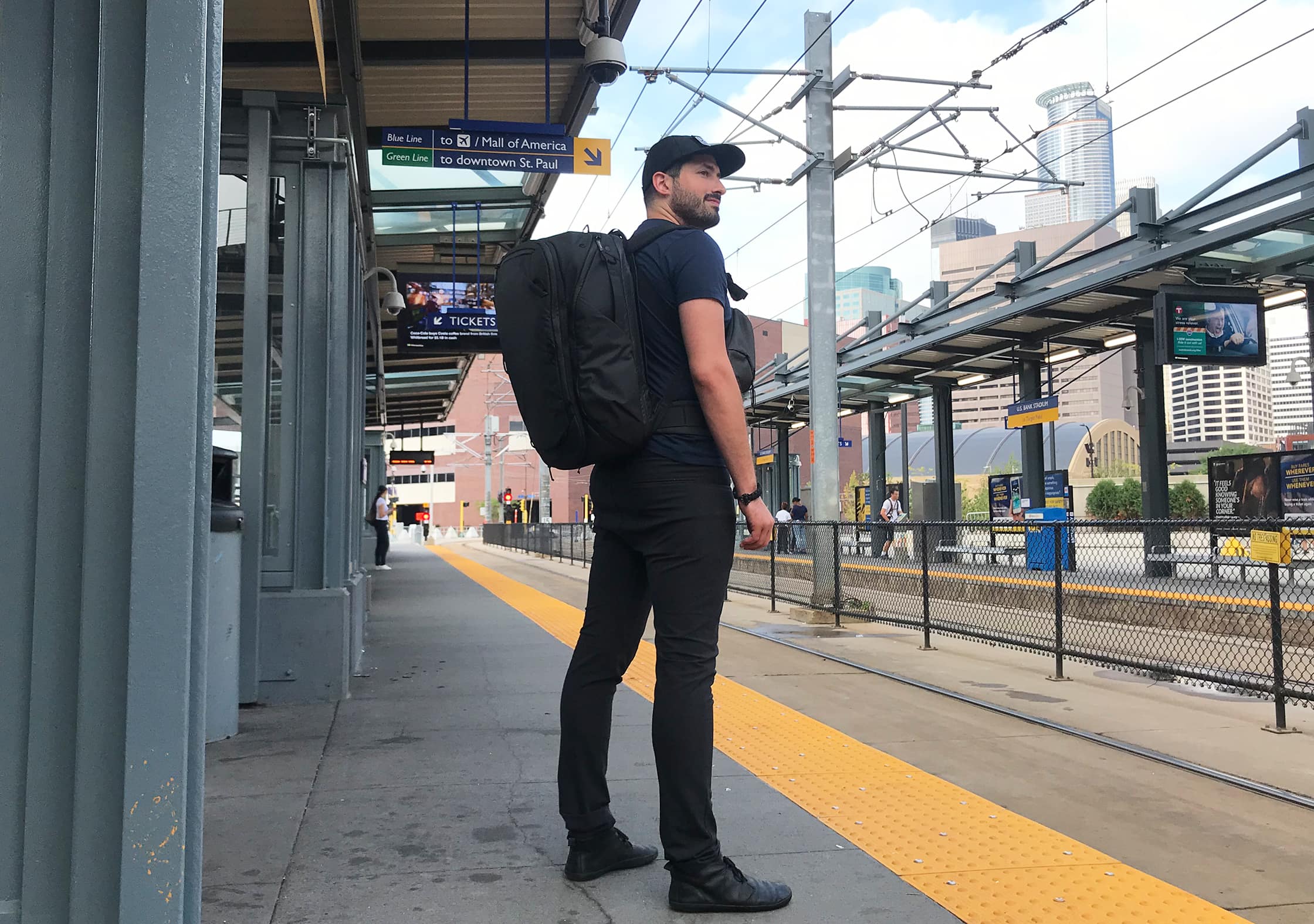
And because they need to function as a travel backpack, they also have more robust harness systems, meaning you’ll be able to carry heavier loads for long periods of time while remaining comfortable. Ultimately, the best thing about expandable backpacks is their versatility. And for that, we love them.
The Bad
Throughout this section, we’ve been explaining how expandable backpacks can function as both a travel backpack and a daypack. But if you’re anything like us, you might be wondering how well they perform in both of those roles…
We’re not going to sugarcoat this—expandable backpacks rarely function as well in “daypack mode” as a bonafide daypack will. No matter how much you compress an expandable backpack, it’s still going to have the length and width of a travel backpack, meaning it’s going to look and feel pretty large on your back. While some packs handle this problem well, most expandable daypacks are going to look a little awkward when you’re wearing them. Let’s just say no one’s going to be fooled by your “daypack.”
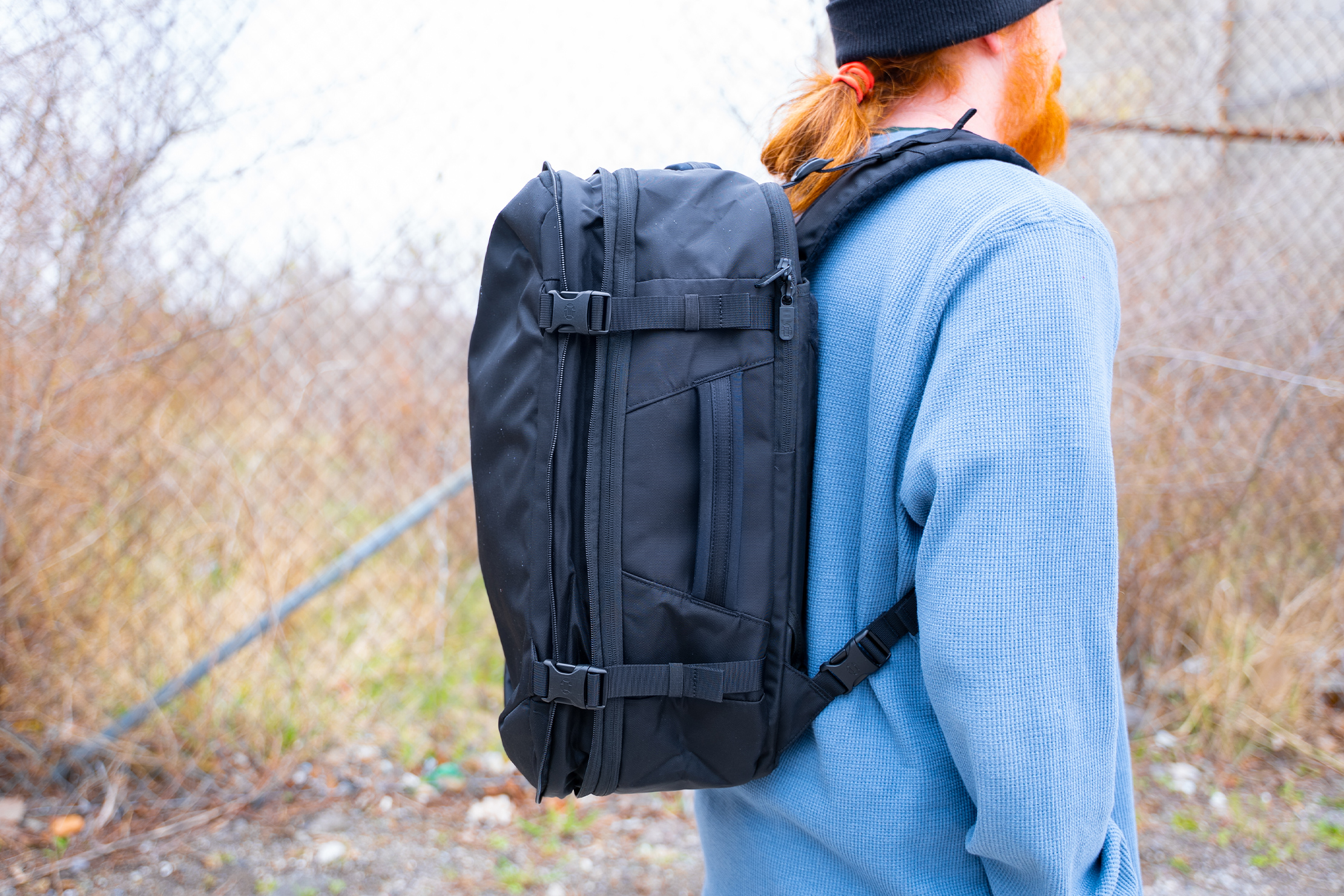
Expandable backpacks are also heavy, but that’s to be expected when you’ve got a travel backpack and daypack in one package.
The Verdict
If you’re on a budget or you hate the idea of having two backpacks, an expandable backpack is an obvious choice. It will function well as a travel backpack and pretty well as a daypack once you get to your destination. As long as you can find a place to drop off your stuff, you’ll be all set for perpetual travel with one pack.
Recommendations
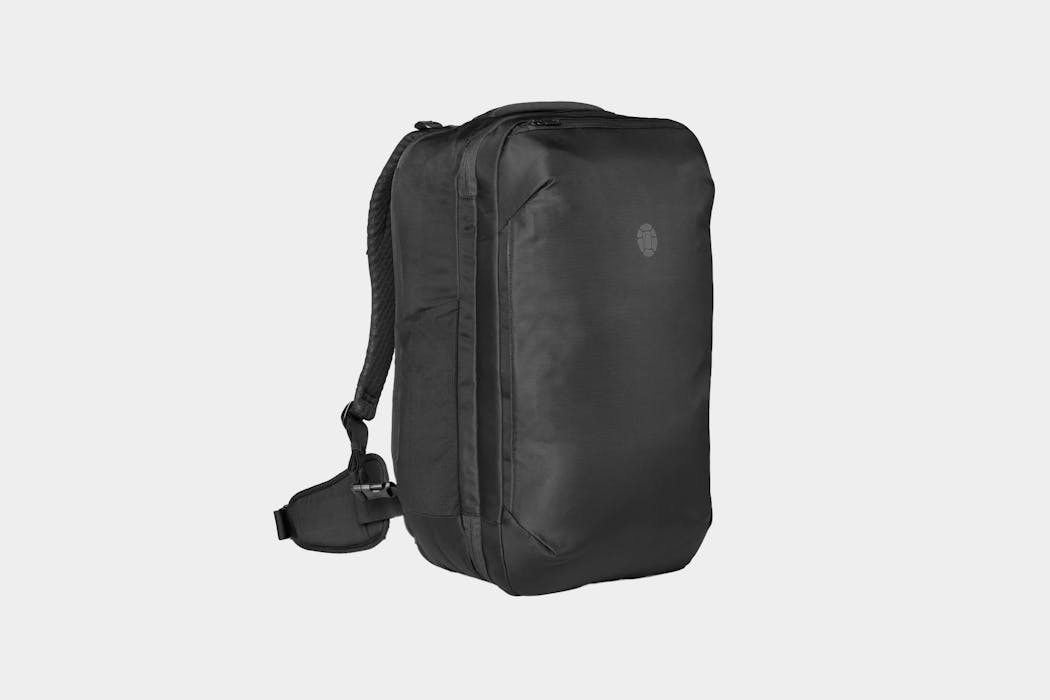
Even though we sometimes struggle to fully utilize a larger travel backpack’s total capacity, there are times when we wish it had an expansion system. The Tortuga Expandable Backpack features the same comfortable harness system we’ve come to know and love from the brand. It’s densely padded, contoured, and easy to adjust, so there’s very little to complain about how comfortable this bag is to carry. Then again, it’ll need all the support the harness system can grant since it can be expanded from its base 27-liter capacity up to 32.5 liters. The extra space was handy when we wanted to bring a week’s worth of clothing, and it’s equally useful for those situations where you’ve picked up two or three bulky souvenirs by the end of your vacation.

The Aer Travel Pack 3 is one of our favorite travel backpacks, and it also happens to work very well as a daypack. With a robust set of compression straps and a design that collapses well onto itself, it’s one of the few travel packs you can rock as a daypack without looking totally ridiculous.
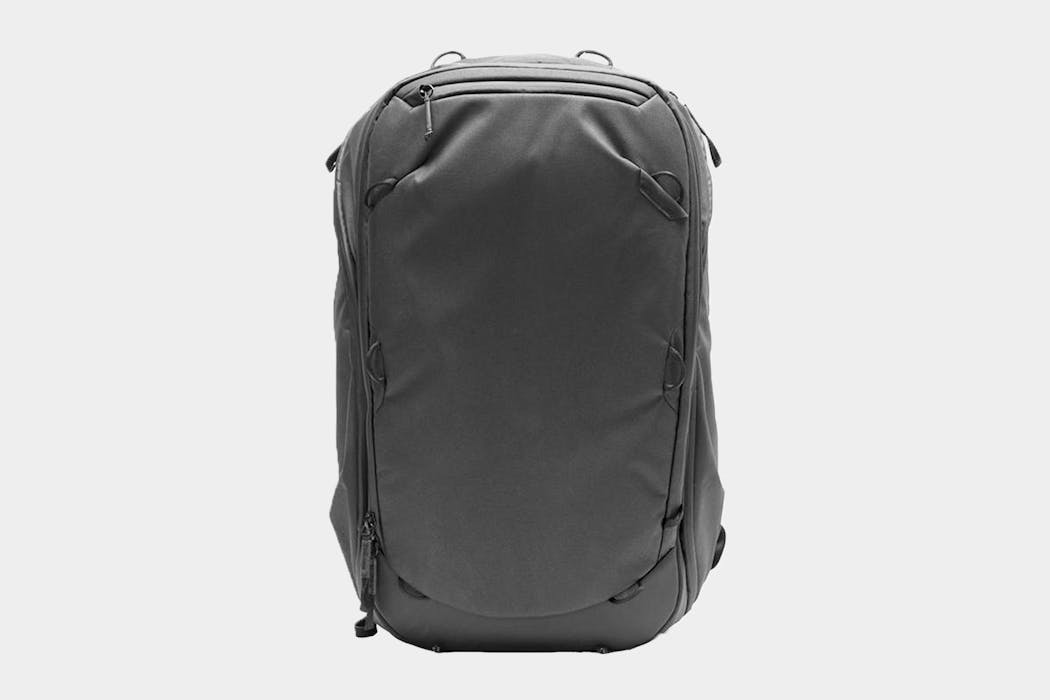
The Peak Design Travel Backpack is another travel backpack with a compression system that does a great job of converting the pack from travel mode to daypack mode. In fact, this is one of the more innovative compression systems we’ve seen—it uses a large compression zipper and several compression buttons instead of straps.
There are a lot of daypacks out there. Some would say, too many. We think that’s ridiculous.
We’ve gone over the three main categories of daypacks. But there has to be more, right?
Yes! There are many other types of daypacks. In this section, we’re going to briefly run through some of the other daypacks you might encounter in the wild. These are packs that have niche use-cases or are slight variations of some of the other packs we’ve mentioned in this guide.
So, without further ado, let’s check them out.
Waterproof Daypacks
Waterproof daypacks are pretty self-explanatory. Unlike other backpacks that may be “water-resistant” or “weather-resistant,” these packs are truly impervious to water.

Waterproof daypacks usually use some type of nylon that has been coated with DWR, Hypalon, or some other waterproof coating. But what really makes these bags stand out is their waterproof zippers and closure systems. Truly waterproof zippers are much different than weather-resistant zippers, and they’re pretty hard to come by.
Most bags will opt for a rolltop closure system for the main compartment, and a few waterproof zippers for other areas of the pack (if there are other areas). If done right, a rolltop closure system will be completely airtight. All you need to do is keep folding it onto itself, and then buckle it up.
Submerging The Matador Freerain24 In Water
If you need a waterproof daypack for whatever reason, we’d recommend testing it out before you truly put it to use. Before you bring it into the wild, throw some paper towels or toilet paper into it, close it up, and submerge it in a bathtub for a few minutes. If the paper towels are still dry afterward, you know it’s totally waterproof.
Waterproof daypacks usually have just one compartment, although they may have a few smaller pockets with waterproof zippers. And we’re pretty sure we don’t need to tell you what these bags are good for, or who would benefit from them…right? It kind of goes without saying.
Recommendations
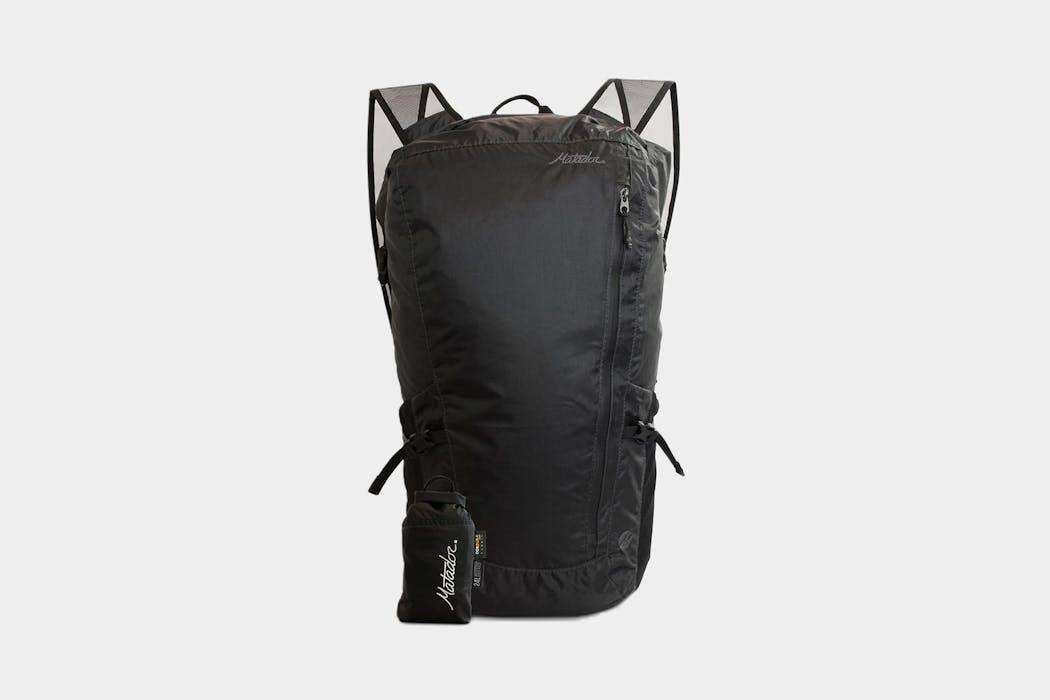
Matador is known for making a bunch of packable gear, and this bag pulls double-duty as a packable daypack that’s also waterproof. Well, it’s fully waterproof minus the front zippered pocket. And yes, we’ve tested this ourselves.
Mini Daypacks
There’s no getting around it—these little packs are super cute. We tend to think of mini daypacks as a more stylish and slightly less-functional alternative to packable daypacks.
These packs tend to just be miniaturized (cuter) versions of traditional daypacks. You’ll find similar materials, although everything’s going to be slightly more minimal. You can expect a minimal harness system and only a few pockets in addition to the main compartment (or maybe none at all).
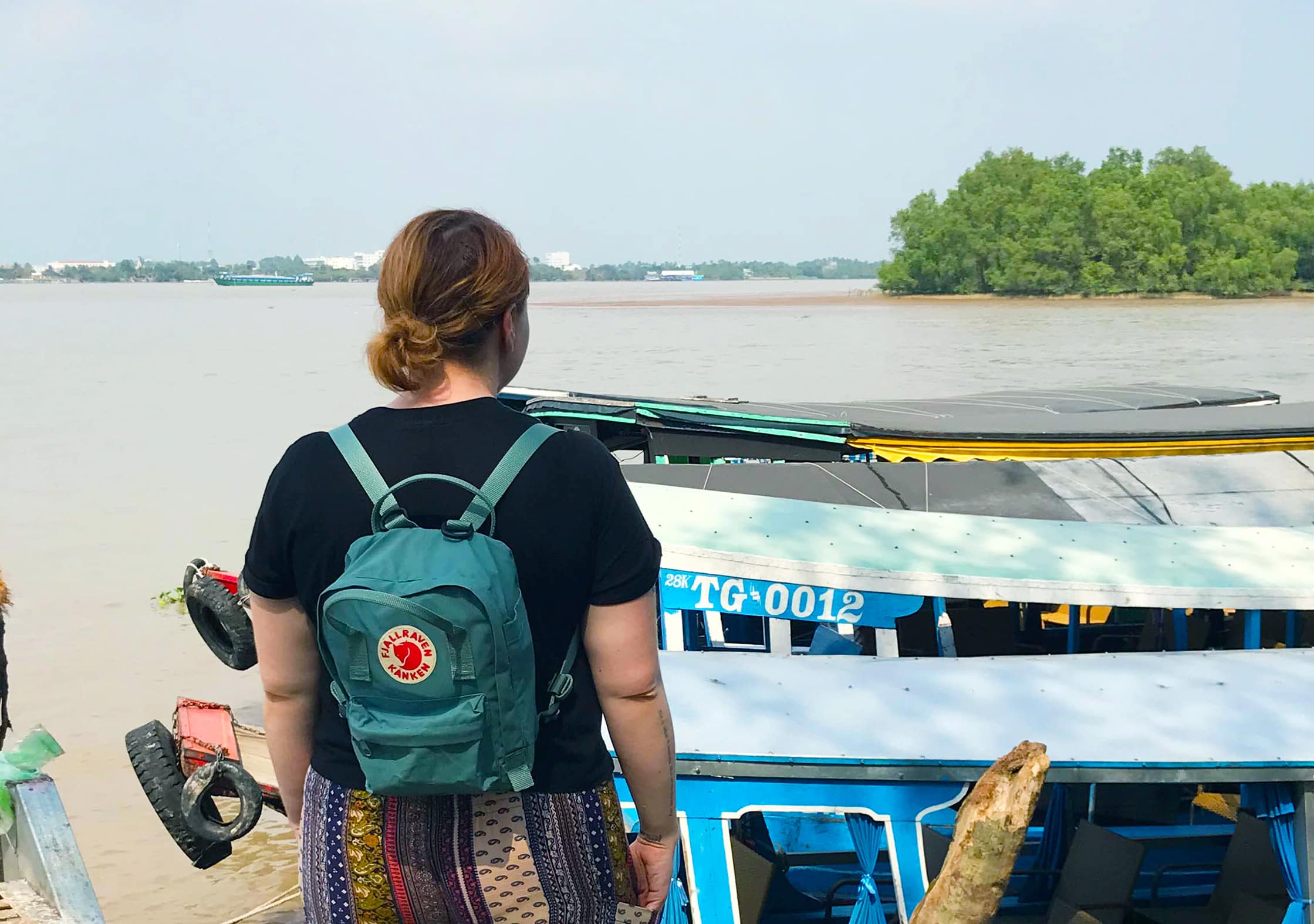
The great thing about a mini daypack is that it looks great and can still be squished down to fit inside a larger travel backpack. But you’re sacrificing quite a lot with a bag like this. It’s still going to take up a lot of space inside your larger bag, it isn’t going to provide the best carry, and it won’t be able to hold many things.
That being said, if you want a stylish little bag and you don’t intend on carrying more than a few items on your days out, a mini daypack just might be the ticket.
Recommendations
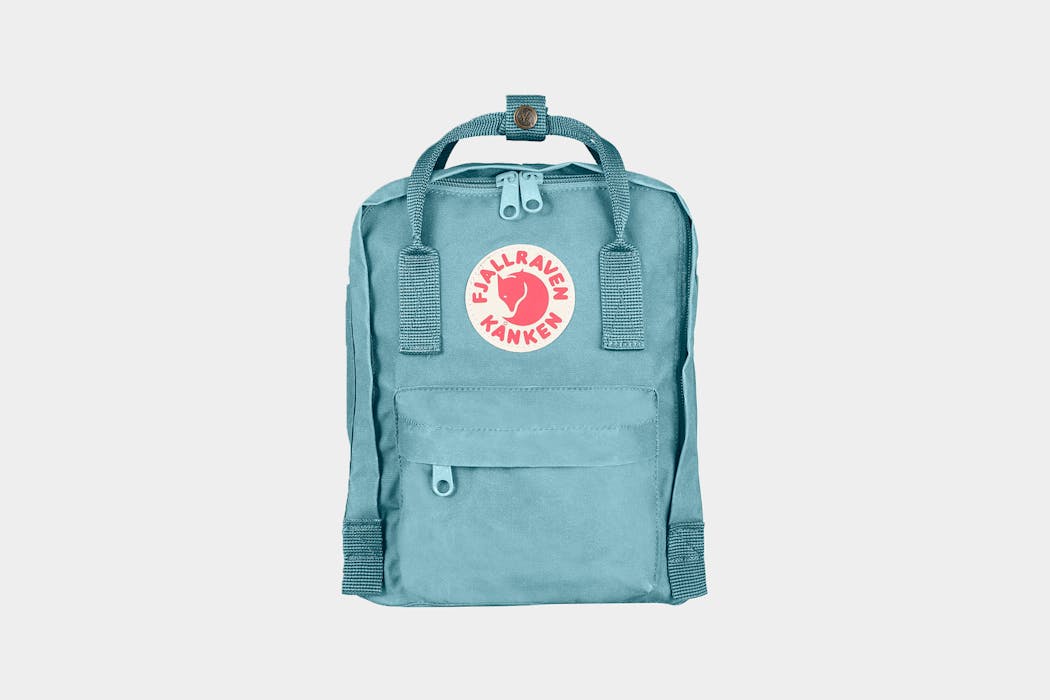
This mini daypack is quickly becoming a classic. The Fjallraven Kanken Mini is stylish, cute, and comes in about a million different colors. We love the way it looks, and it functions well given its size. We’d recommend grabbing a pair of the shoulder strap pads for some extra comfort.
Lay-Flat Daypacks
Lay-flat daypacks are pretty much just traditional daypacks that you can lay flat at the base of your travel backpack or roller luggage.
We don’t usually see these types of packs explicitly marketed as “lay-flat daypacks”—they’re typically just traditional daypacks that happen to work well for this use-case. To lay flat, this type of pack needs to be made with somewhat “flimsy” or thinner materials. That also means that it’s not going to have the rigidity and structure of your average daypack.
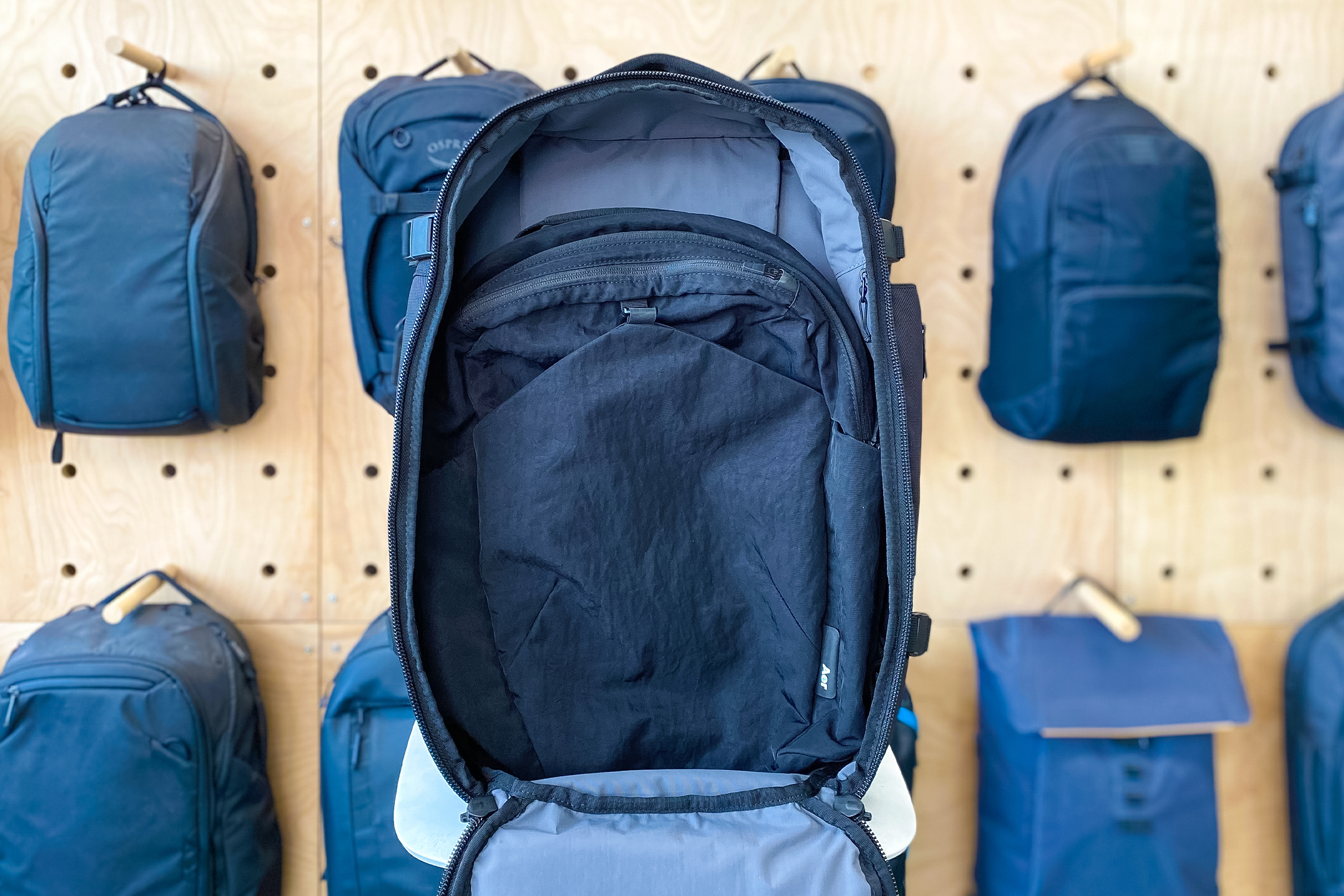
These types of packs can be useful for people who don’t like the idea of a packable daypack or don’t like how they look/feel. The main issue is that it will still take up a significant amount of space in your pack, even if it lays flat really well.
If you are looking for a pack like this, we’d recommend reading some reviews (like ours) before you buy. It can be pretty hard to tell how well a pack lays flat without testing it yourself.
Recommendations
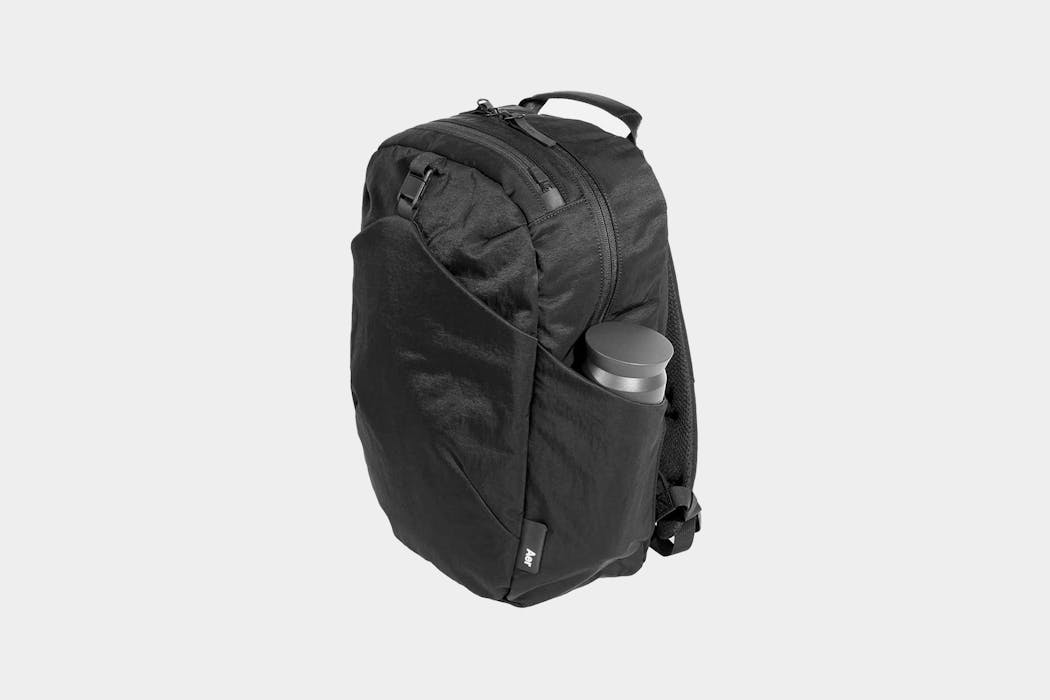
The Aer Go Pack 2 is labeled as a “packable” daypack, but it’s really more of a lay-flat daypack. This pack is made with thin materials and has very little structure when empty, so it will take up minimal space when laid flat in a suitcase or backpack. You also have the option to roll it up, if you are so inclined.
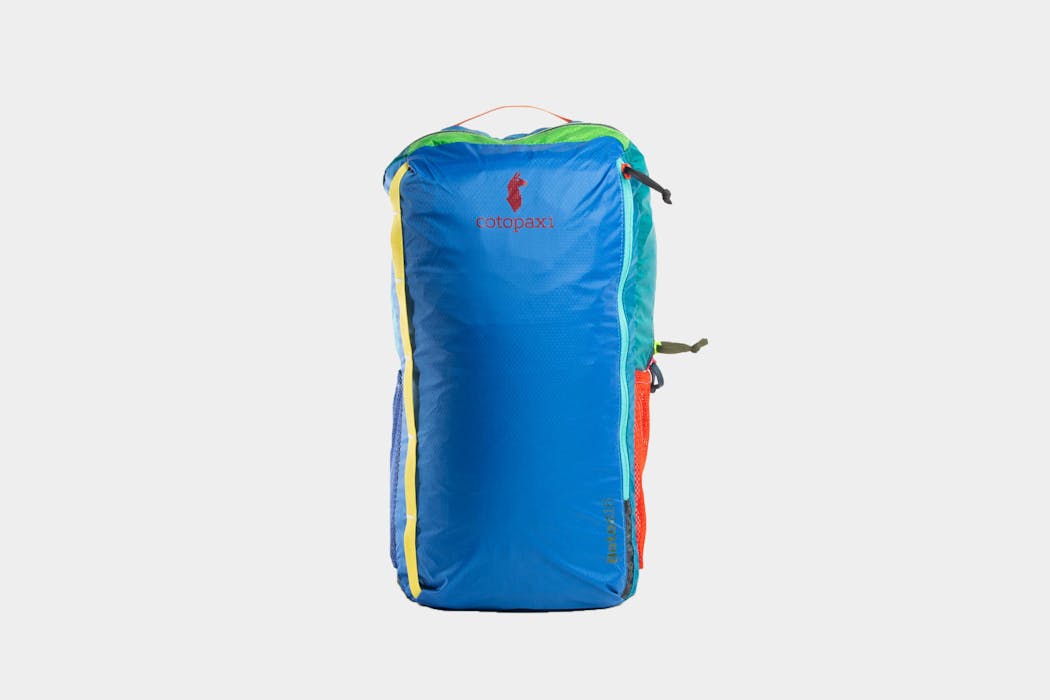
A lay-flat daypack that will add a pop of color to your adventures, the Cotopaxi Batac 16L is a durable, ultra-lightweight pack you’ll want to show off. It has minimal features—but has a comfortable enough carry to work well for long days out and about.
Budget Daypacks
Budget daypacks are mostly just traditional daypacks that have been made with cheaper, lower-quality materials like polyester, canvas, or even cotton. You can expect a barebones daypack with a couple of pockets, and that’s about it. But that’s why it’s so cheap!
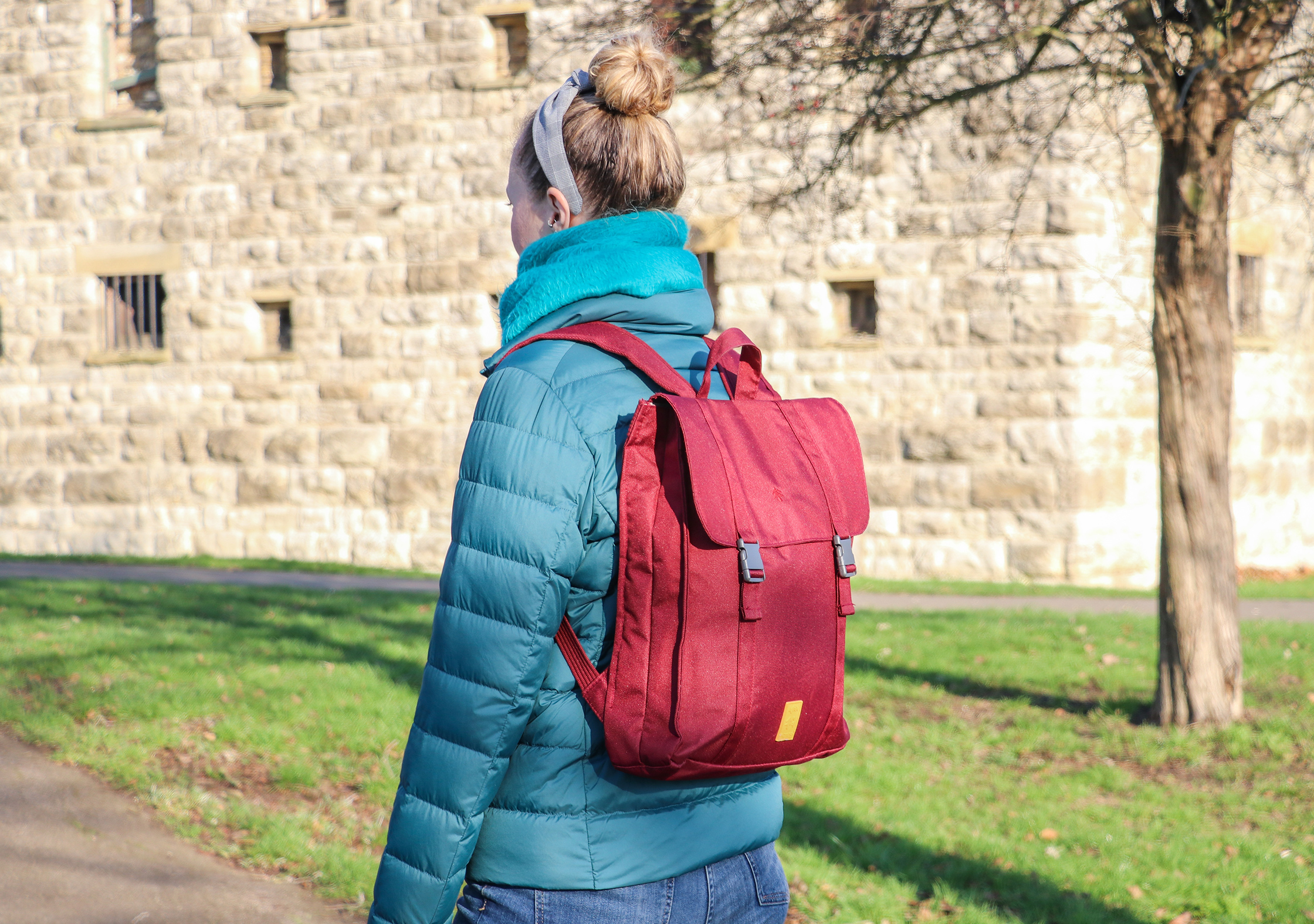
These packs are not going to last a lifetime, they may not look as fabulous as you’d like, and they’re not going to carry very well. But they’re cheap! If you’re on a budget and need to carry stuff while still using two arms—boom! These packs will do that. But be warned—you might encounter some issues in the middle (or beginning) of your trip.
Recommendations
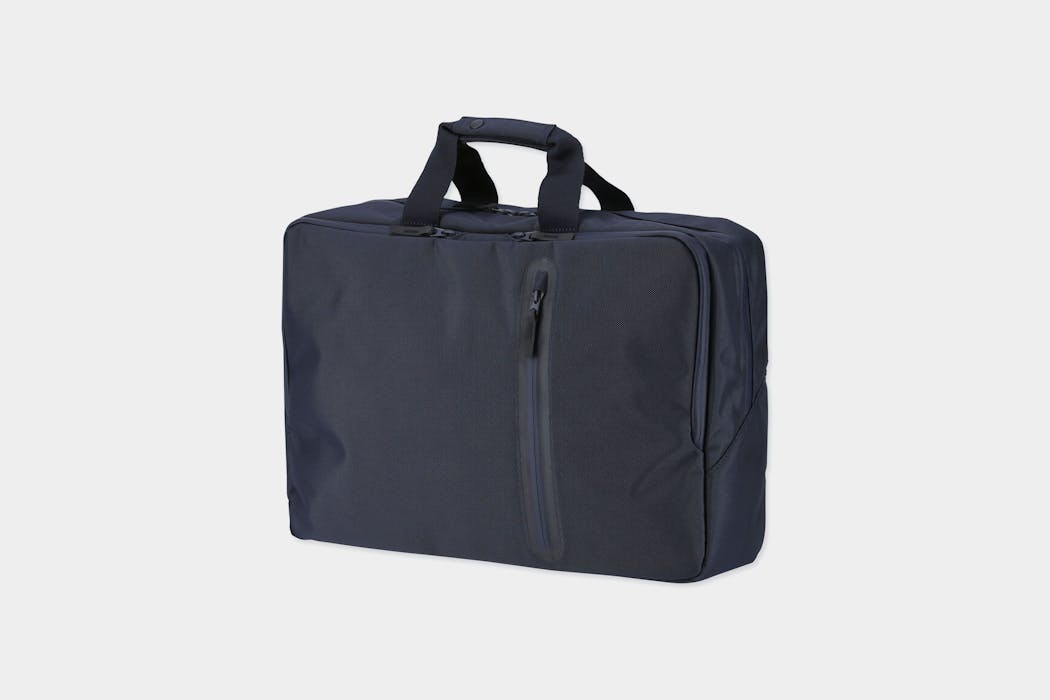
Uniqlo is known for making low-priced clothing and accessories that are still stylish and fairly durable given the price. This 3-Way Bag, which can be carried in backpack, messenger, and briefcase mode, is no exception.
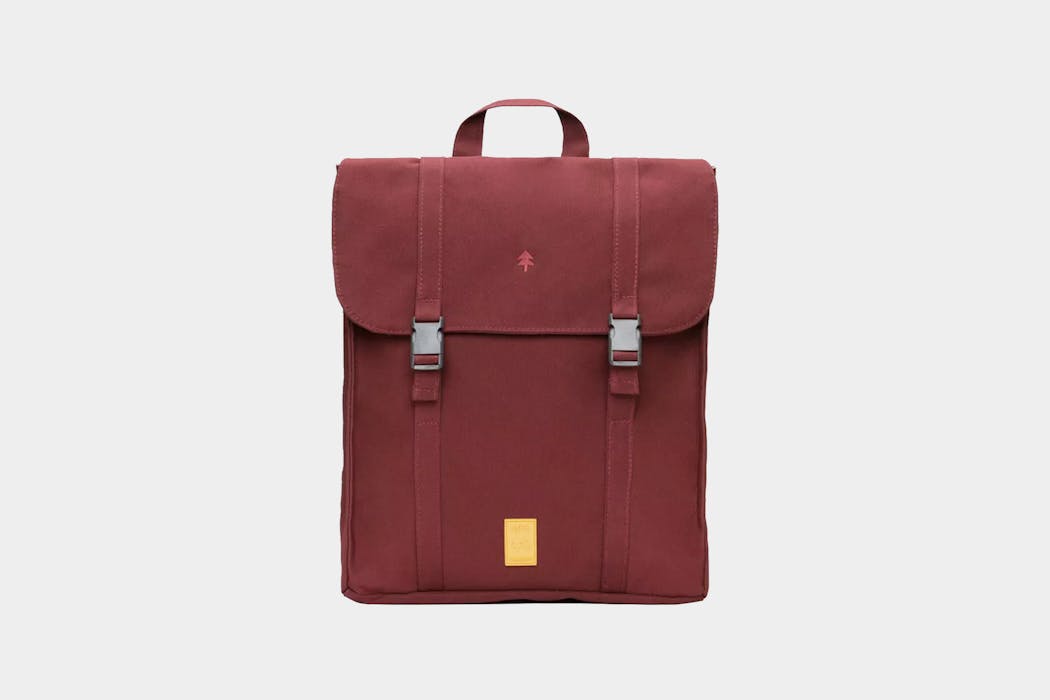
While not ideal for bulkier items, the Lefrik Handy Backpack is a lightweight and affordable everyday bag that will be right at home in the city. Plus this bag is made of 100% recycled polyester from discarded PET bottles—so environmentalists rejoice!
Camera Daypacks
Camera daypacks are built specifically for carrying cameras and all the accessories that come with them. From lenses to SD cards to tripods, photographers need to lug around a lot of stuff to their shoots.
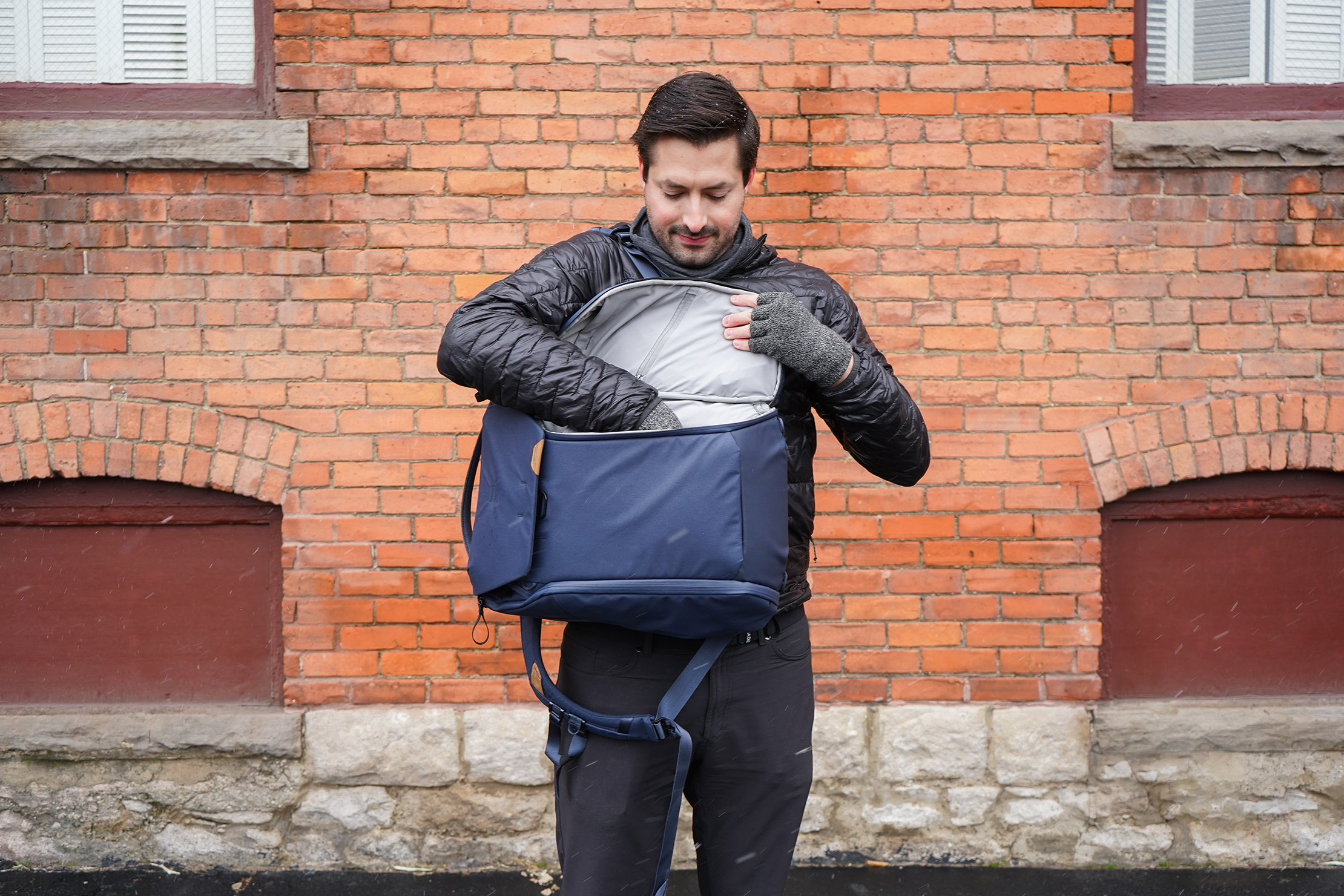
A camera daypack is going to be a bit more minimal than a full-fledged camera bag, as the goal is to hold just enough stuff for a couple hours of shooting. You can expect a bag with plenty of organization, some internal padding, and enough room to hold a camera, one or two lenses, and all the batteries, cords, and memory cards you need for a day out.

In our experience, camera daypacks aren’t entirely necessary unless you’re dead-set on having a daypack specifically for shooting. We tend to use camera inserts—like the F-Stop Small Shallow ICU—to convert a traditional daypack into a “camera daypack,” or add a camera compartment to our larger travel pack.
Recommendations
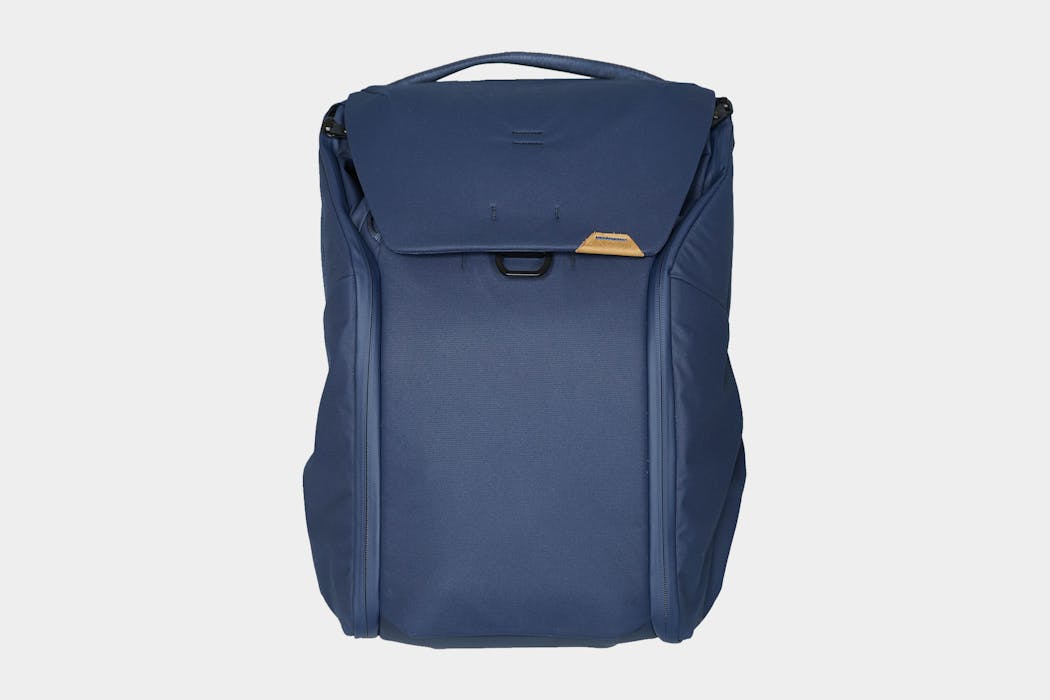
Made of durable materials and full of features, The Peak Design Everyday Backpack 30L (V2) is a solid choice for all photographers and videographers. But its classic aesthetic and nice internal layout will also make digital nomads and one bag travelers pretty happy too.
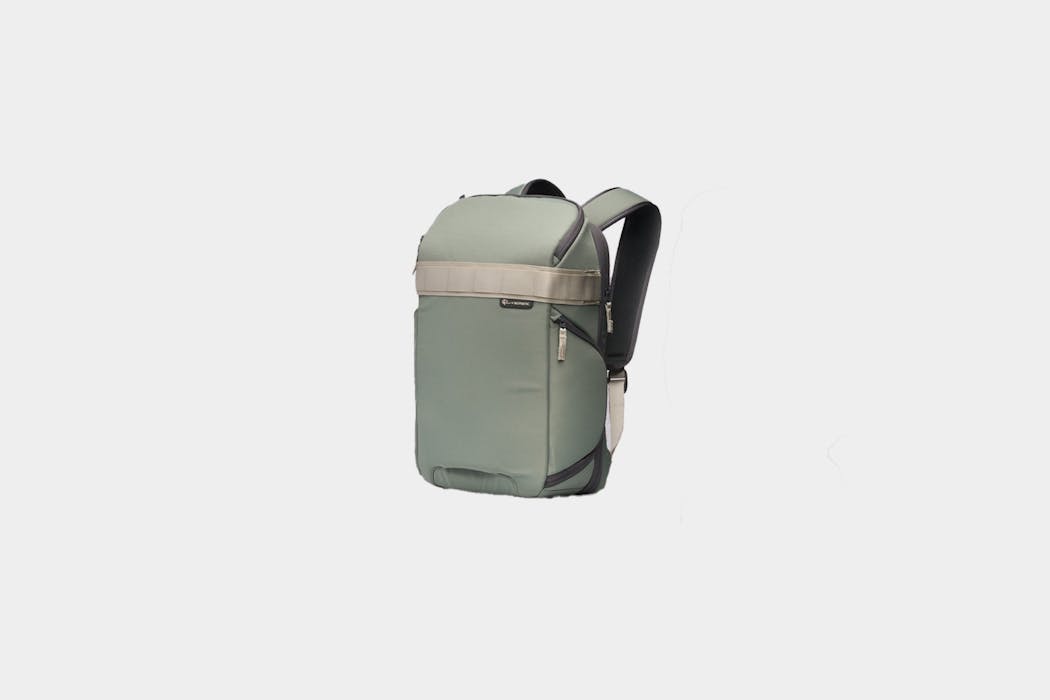
Don’t let the sleek design and relaxed colorway fool you; the NOMATIC X Peter McKinnon Luma Camera Pack 18L is more than well-equipped to handle your camera gear for daily carrying. Inside its blocky body is a main compartment lined with dividers that compartmentalize the space for all your lenses and camera body. You can, of course, adjust them to your heart’s content depending on your needs. Whether you access the main compartment quickly by the top hatch or the side door, either method requires alteration of the dividers inside. That said, getting a full view of all your gear isn’t much harder, as you can open the entire main compartment clamshell-style.
Secure Daypacks
Secure daypacks might look like a traditional daypack, but they’ve got a whole lot going on under the hood. These packs are built to repel any potential thief and keep all of your belongings safe and sound.
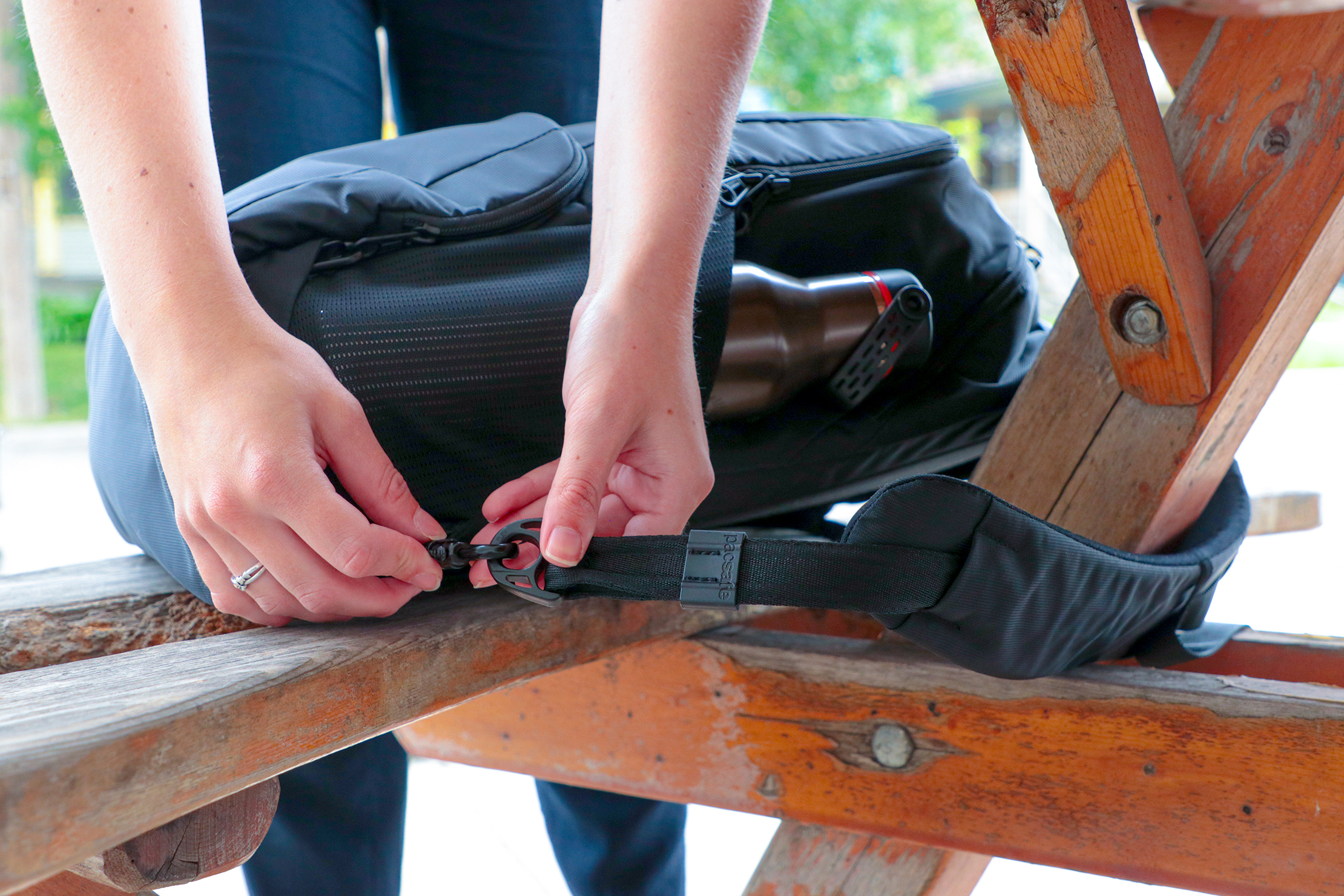
You can expect to see some pretty cool tech on these packs—from tear-proof fabrics to lockable zippers to metal cables that you can use to lock the bag to fixed objects. These bags are great for travel, where security is always an issue. Having an ultra-secure pack means you can doze off on that long train ride or walk through crowded markets without having to worry about pickpockets.
These daypacks will usually be on the heavier side, thanks to their additional security measures, and that’s fine with us. Knowing your stuff is safe is pretty damn valuable, and we’ll take that over a few saved ounces any day of the week.
Recommendations
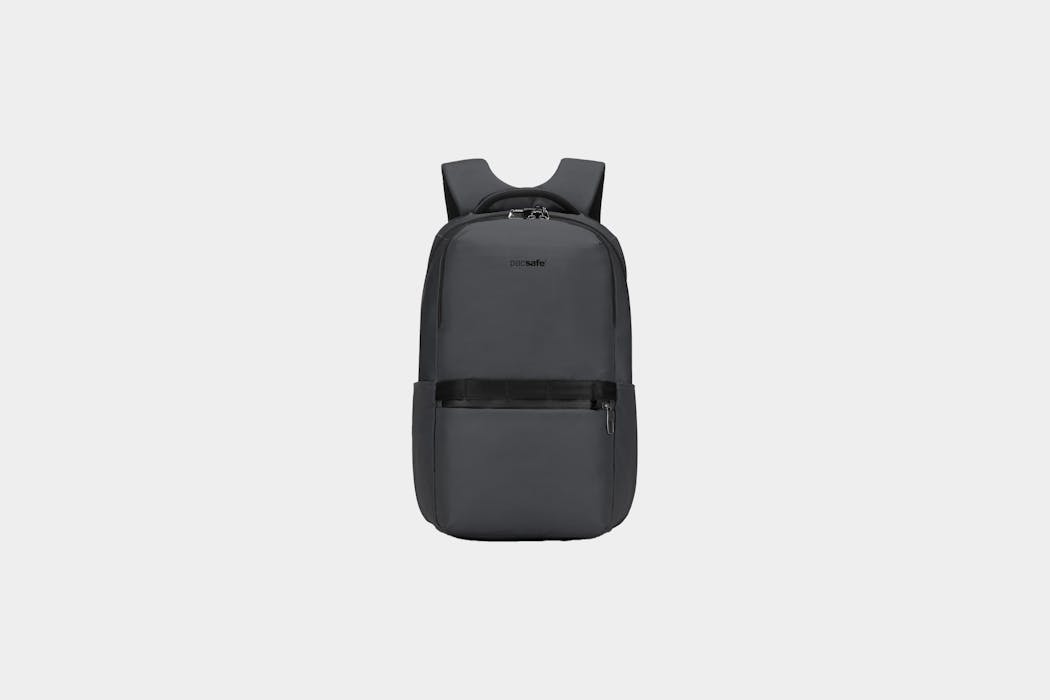
How secure your backpack is ultimately comes down to how careful you are, but that isn’t stopping brands from supplementing their own clever solutions to help. The Pacsafe X Anti-Theft 25L Backpack has a few tricks up its sleeve. Underneath its main 750-denier polyester fabric shell is eXomesh slashguard, a wire mesh that can stop thieves from simply cutting their way through the fabric to get to your valuables. If someone tries the zippers instead, they’ll be stymied by the built-in Roobar Sport locking system that keeps the zipper pulls from sliding along the track. The PopNLock security clip is a neat addition as well, letting you wrap the bag’s strap around a fixture, such as a lamppost, fence, or park bench. All of that said, the bag’s security features, while handy, still come second to how mindful you are of your belongings.
We’ve done our bit. Now it’s your turn! Let’s make this daypack thing happen.
Hooray, you’ve made it to the end of our guide! Congratulations, you are now a daypack expert. Hopefully, at this point, you have a good idea of what to look for in a daypack, and you’ve got enough knowledge to find the right daypack for you and your unique situation.
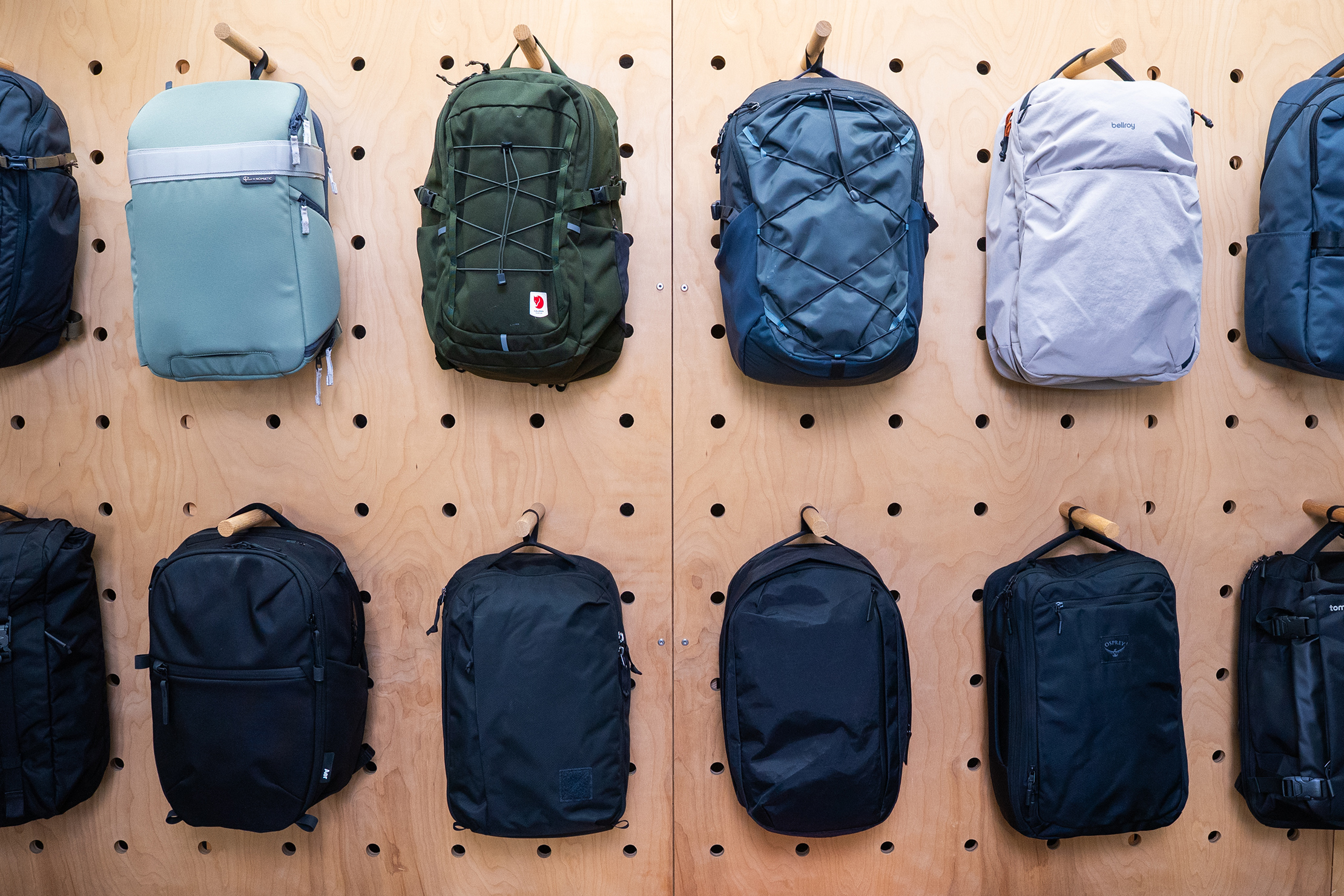
Now that you’ve got the daypack figured out, it’s time to put it to use. We’re not going to do an exhaustive guide on how to use a daypack (as much as we’d like to) because we’re pretty sure it’s self-explanatory. However, there are a few quick tips that we’d like to highlight before we close this thing out.
Next time you get ready for a day out in a new city, think of these tips when loading up your daypack:
- Use packing cubes for larger items: We recommend using packing cubes in most travel backpacks, and the same principles apply to daypacks. A few small packing cubes or pouches let you organize all the contents of your bag and give you easy access to whatever you need. The best thing about using packing cubes with a daypack is that, if you plan right, you can grab a fully-loaded packing cube from your travel pack and toss it in your daypack. These are great for clothing and medium-sized pieces of gear.
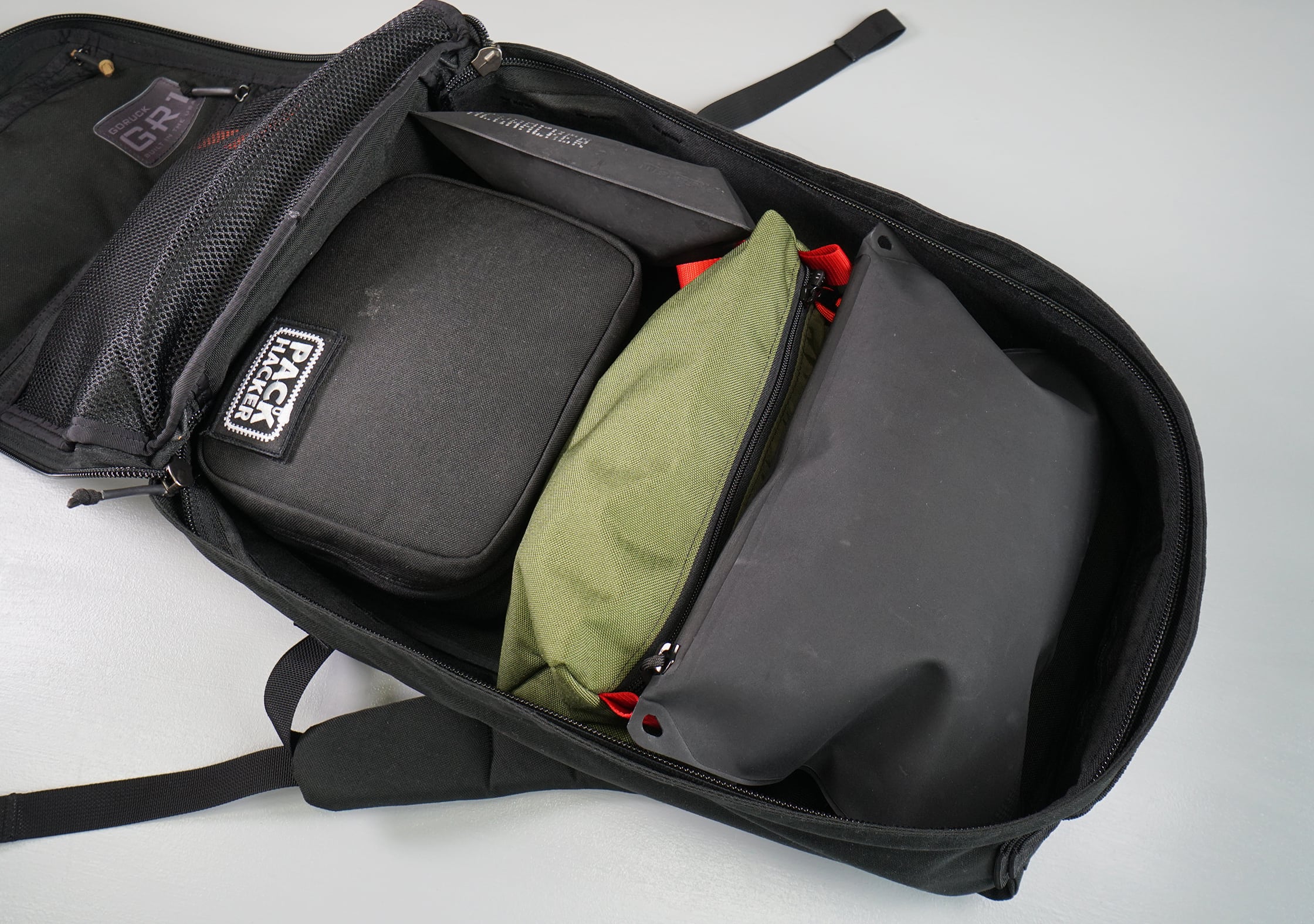
- Use pouches for smaller items: When it comes to tech gear, toiletries, and other small items you’d like to keep organized—pouches are a lifesaver. Unlike packing cubes, which tend to be one large compartment, pouches tend to offer plenty of organization for smaller items like thumb drives, SD cards, and pens that you might not find on your daypack. We love using pouches in coffee shops and coworking spaces to easily pull out all our tech-related gear for the day.
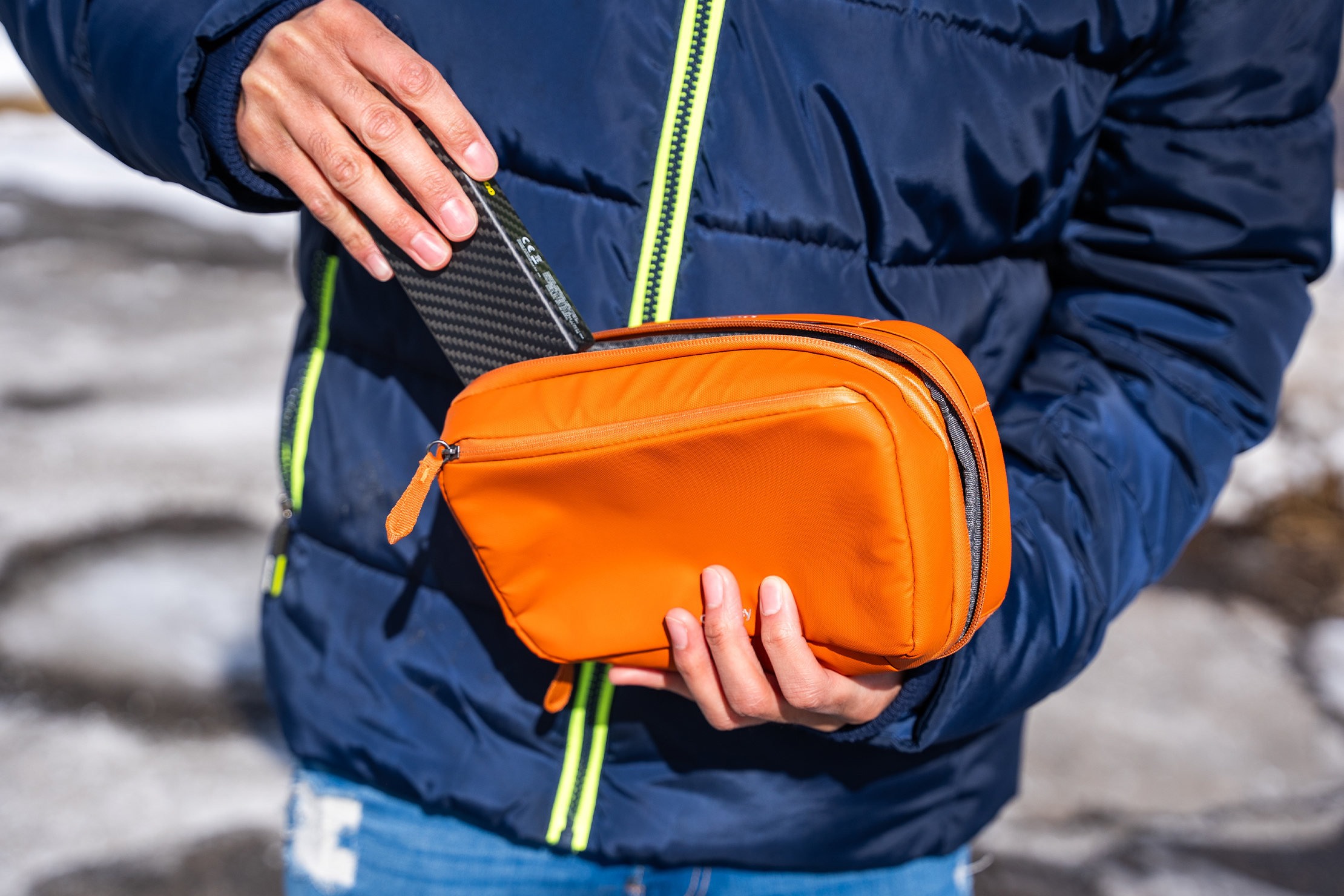
- Pointy objects to the back: Most daypacks lack the dense padding that travel backpacks do. As a result, pointy or sharp objects can often poke into your back while you’re wearing it. If possible, toss these kinds of items into a padded packing cube or keep them towards the back of the bag. Additionally, you can often use a laptop as a sort of impromptu frame sheet to help with this.
- Keep your laptop safe: We always recommend using a padded laptop sleeve to keep your laptop safe in transit. Even if your bag has a laptop compartment—and even if it’s padded—it’s always worth throwing it in a padded sleeve for peace of mind.
Hopefully, these tips will take your packing to the next level. And if you have any other pro tips you’d like to share, feel free to drop us a line! We’d love to hear about them.
Concluding Thoughts
So, here we are. We’ve finished our long tour through the world of daypacks. We’ve learned some stuff, seen some interesting packs, and had a few laughs. We hope this guide has opened your eyes to what kind of daypacks are available, and why you might want to opt for one style over the other.
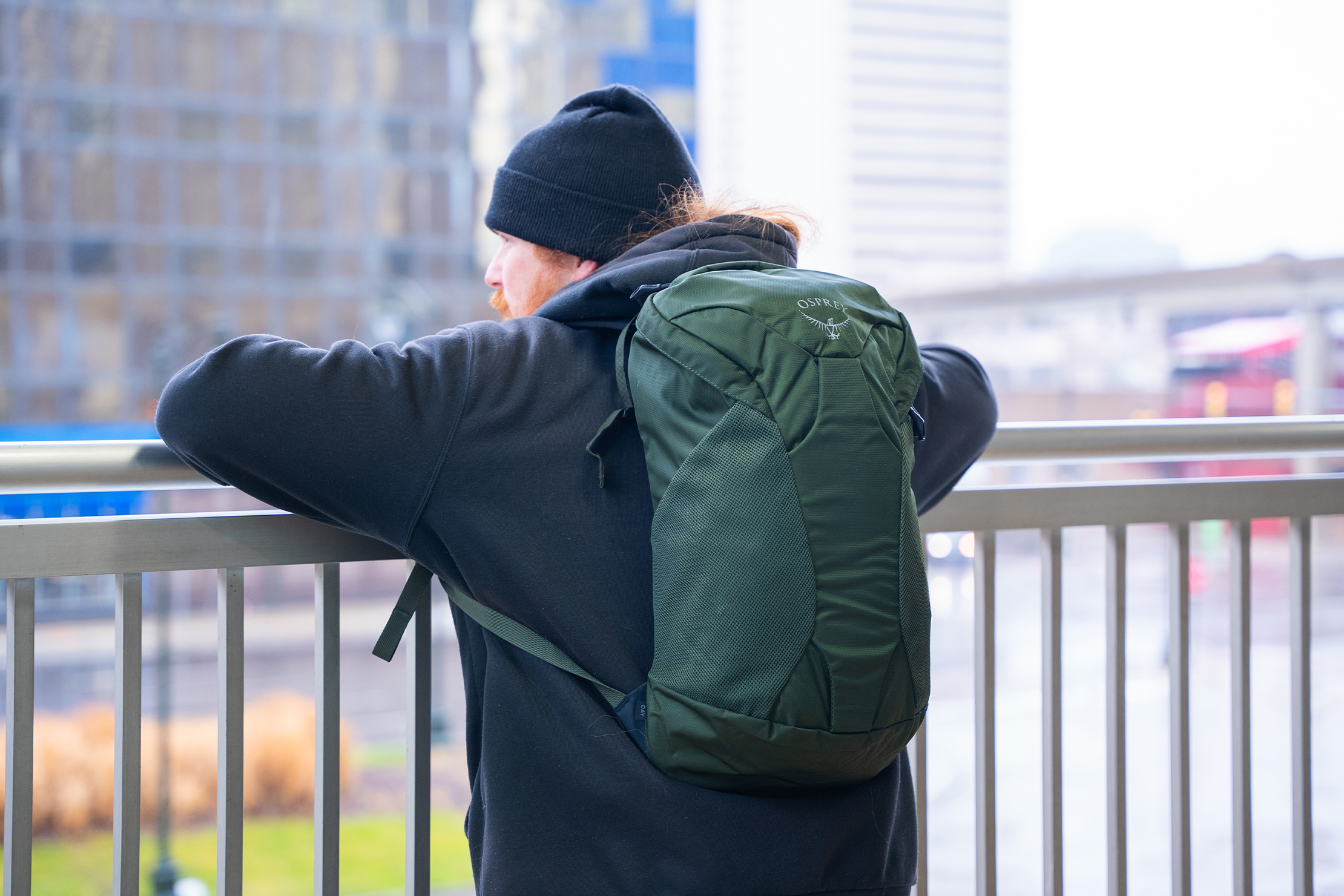
But we’d like to close this one out by reminding you that choosing the “best” daypack is not only impossible but not a big deal. At the end of the day, you should go with a bag that will not only suit your needs but that you LIKE! There’s no point in buying a bag that you don’t actually like, no matter how many features and durable materials it has.
So whether you opt for an ultralight packable daypack or a retro leather bag, just be sure to get out there and use it while you enjoy the world—whether that means making your commute just a bit less stressful or enjoying a day in a new city.
